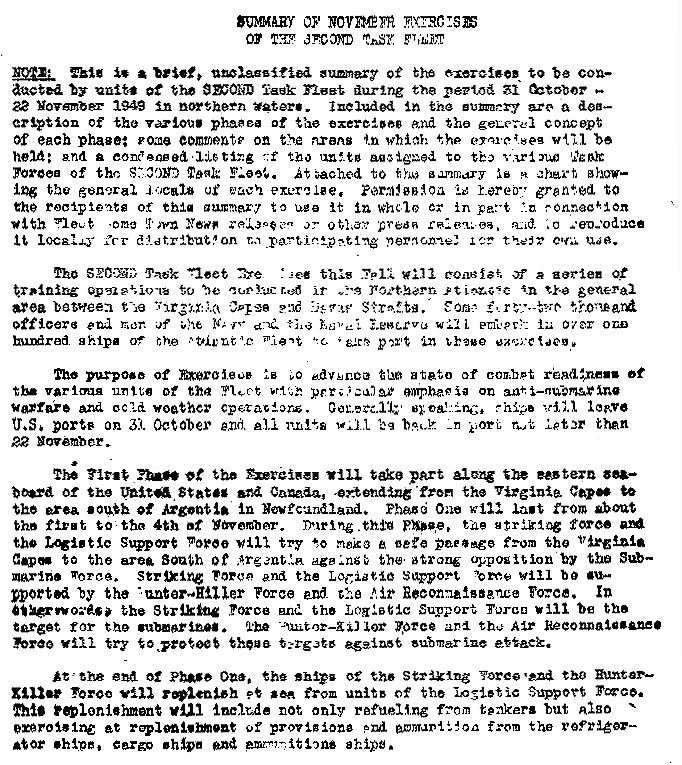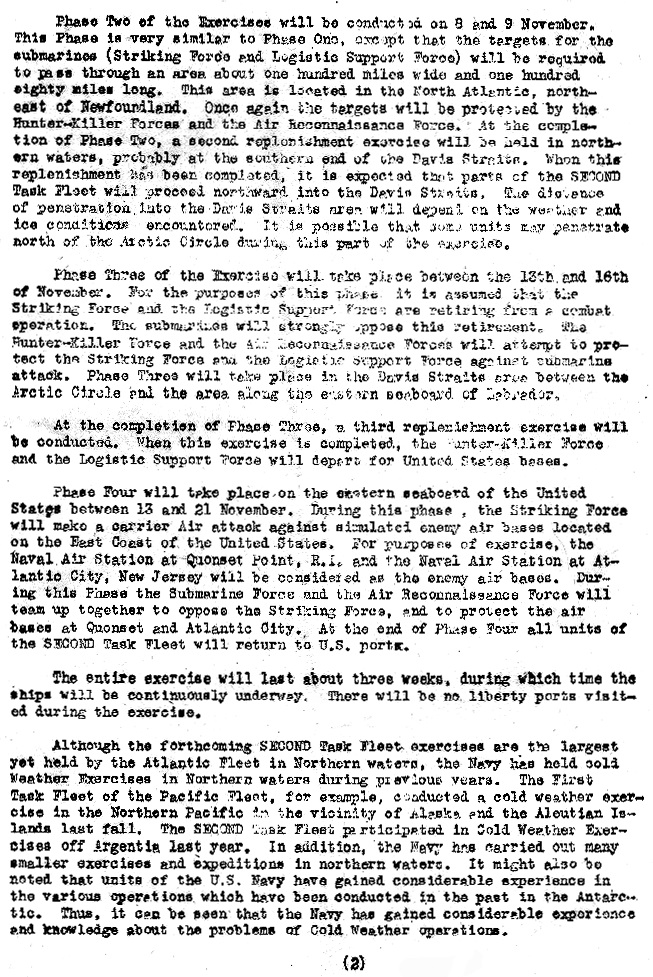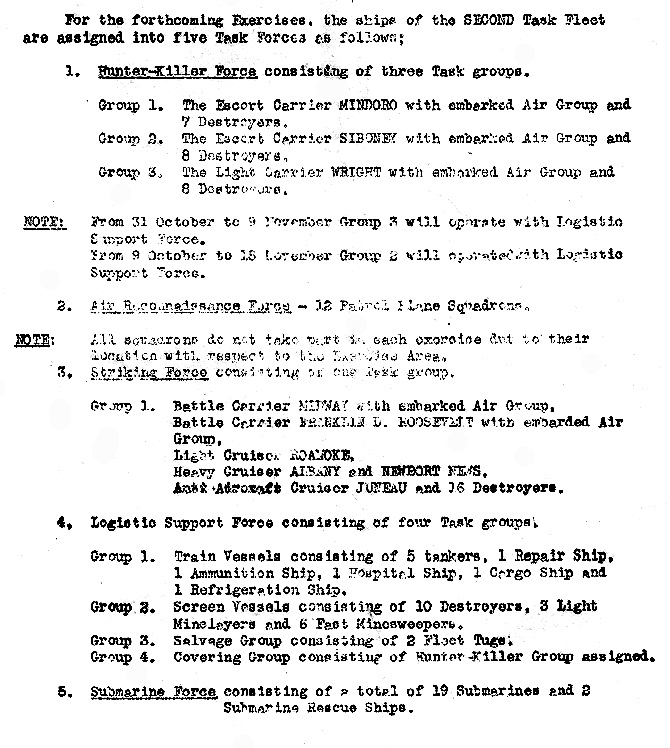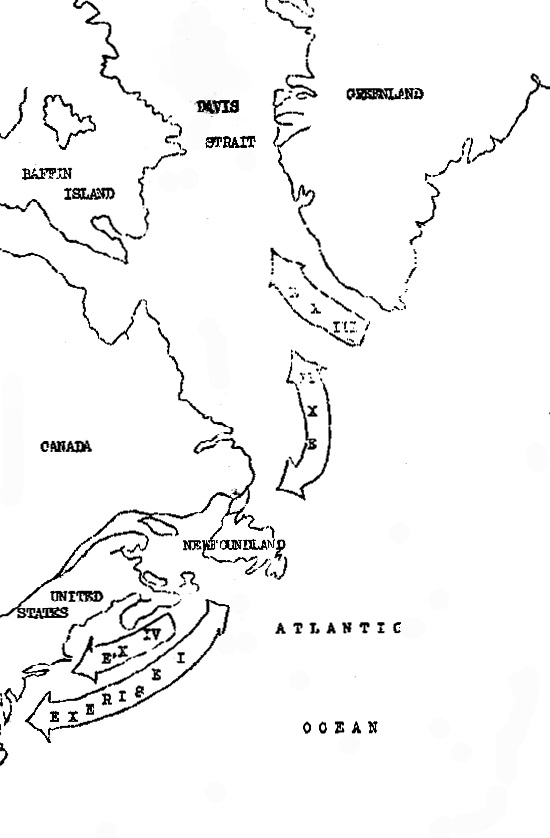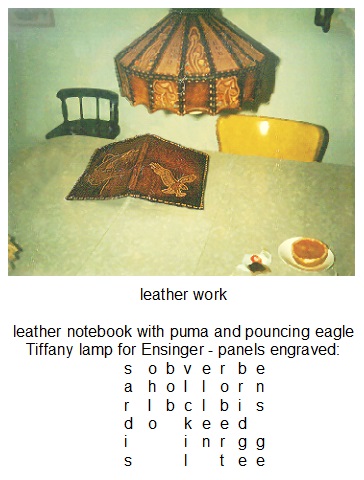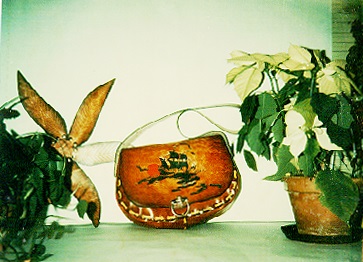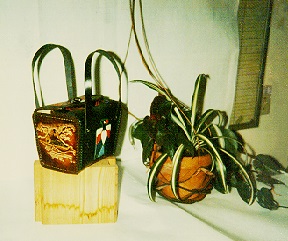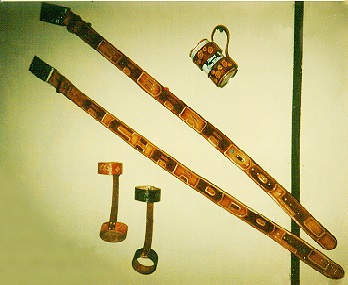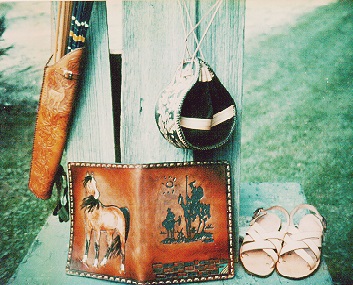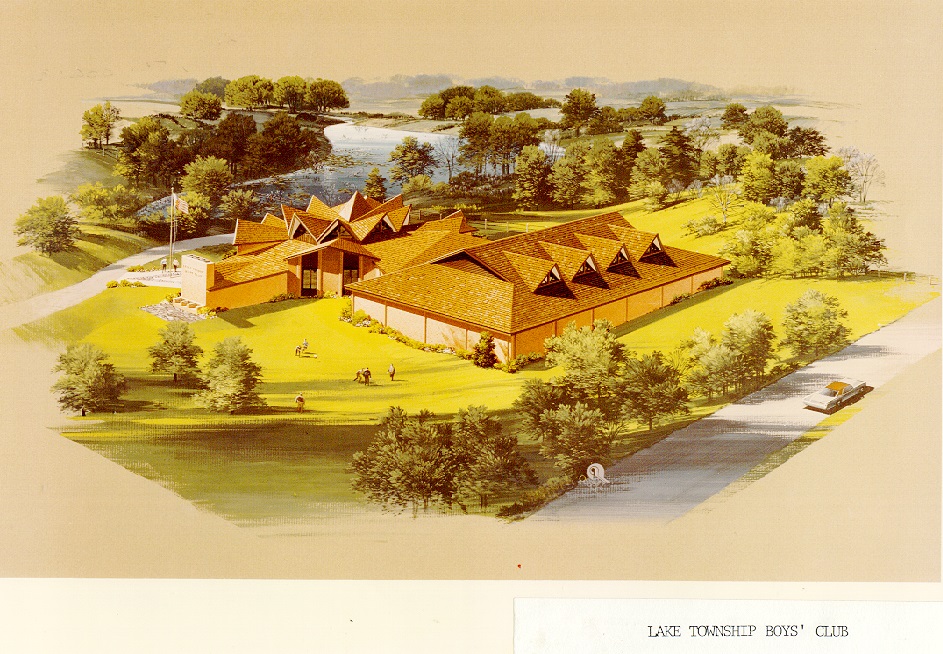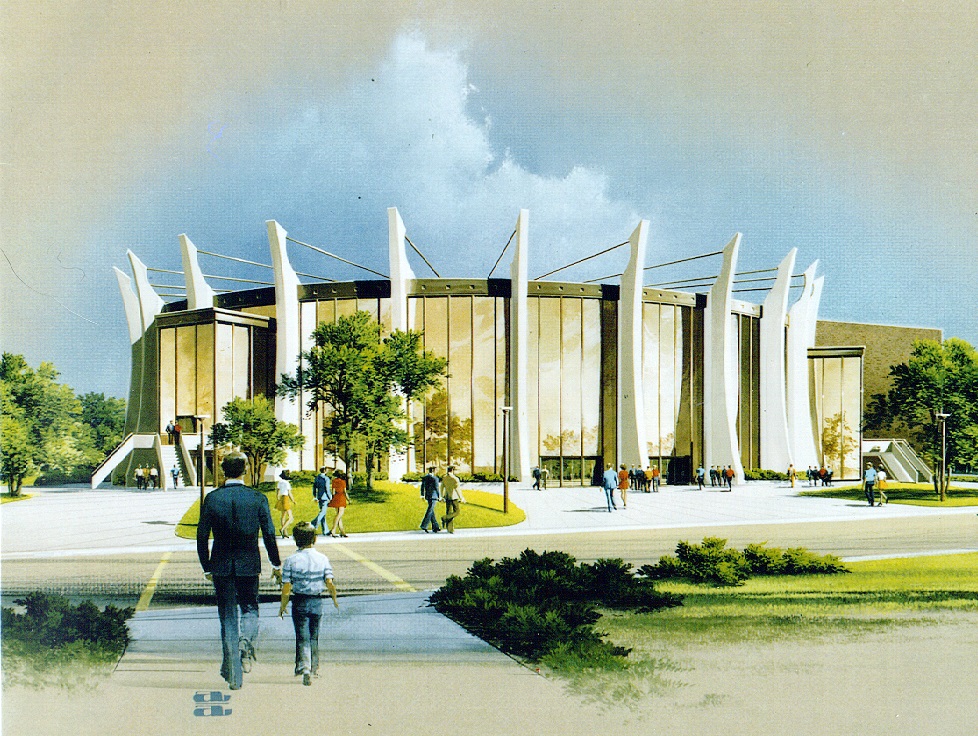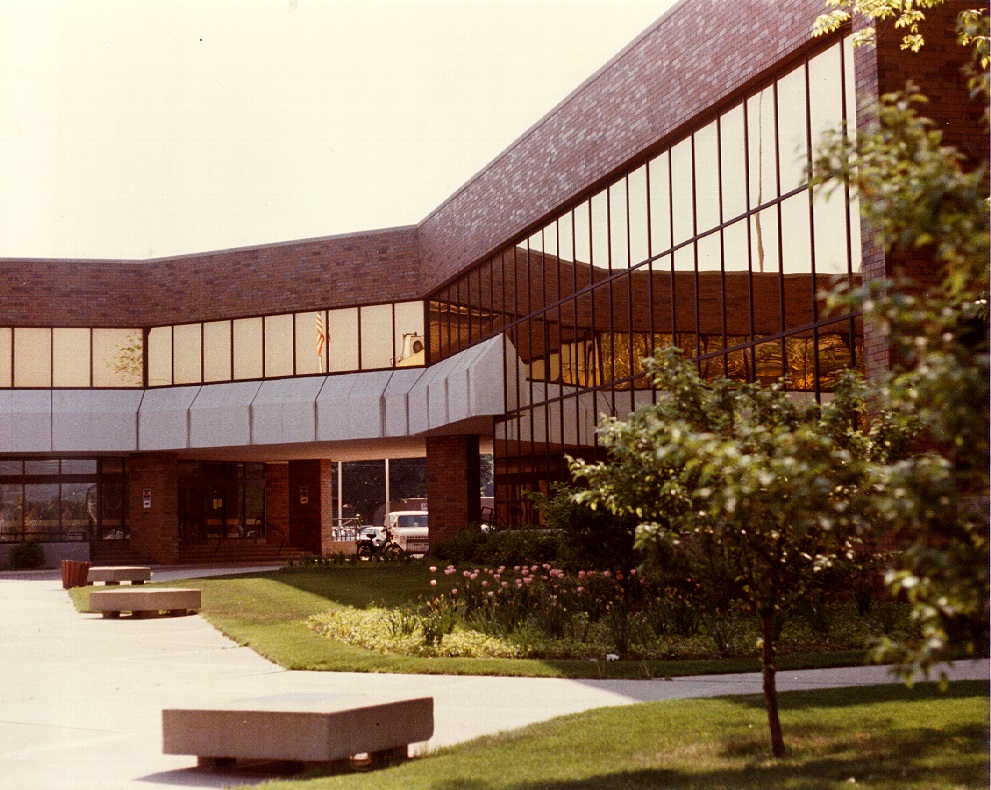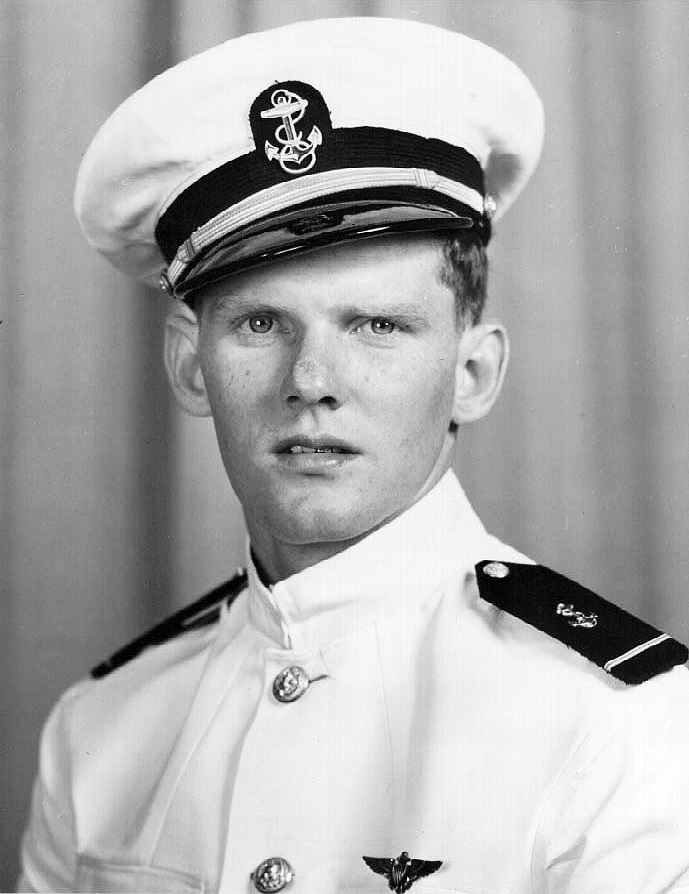
AND THERE I WAS ………
By
LCDR David A. Doll, USNR (Ret) 496528
Naval Aviator 1494
Designated on 24 July 1948
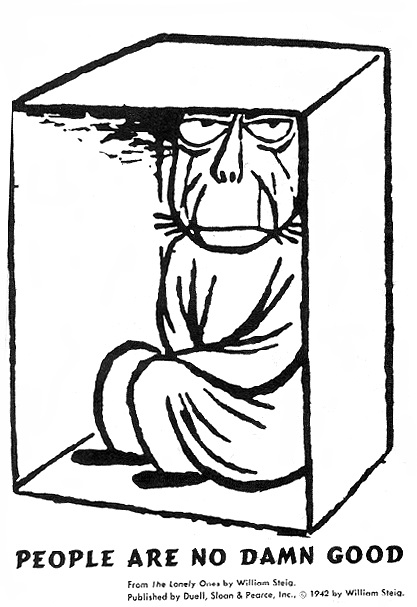
Except naval aviators
AND THERE I WAS ………
Notes from the Author
Any resemblance to persons living or dead is strictly intentional. I have referred to my logbook for specific dates for specific flights as well as my "Aviation Training Jacket”. By pure luck, I wrote lots and lots of letters to "my" high school sweetheart not knowing exactly how she felt. I think that at the time she wasn't sure about how she felt towards me. However, since she didn't know for sure what the future held, she did come down to NAS Jacksonville to pin on my wings just to cover all bases in case we got married in the future. Mildred "Mickey" Reynolds and I were married shortly after I was released to Reserve status in 1950. We had four children. First born were identical twin boys. Unfortunately, they both had Cystic Fibrosis. One died at three weeks and the other at 21½ years. The other two were girls. Mar Dee is a carrier of the Cystic Fibrosis gene but Patty is not. Mickey saved all the letters I had written and I have been reading through them, picking up many items or events that I had completely forgotten. This has been a very valuable source of much, which is included within this epistle. Any errors that occur are probably those where I relied upon my memory. Some embellishment might be slipped in now and then.
I remarried in 1978 to Linda (Stemple) Martin. She had three children, also the oldest boy with Cystic Fibrosis who died at 18. Eric and Melissa (Missy) are still single and not getting any younger. Linda and I still have hope.
TABLE OF CONTENTS
CHAPTER ONE – And there I was MAKING MODEL AIRPLANES
CHAPTER TWO – And there I was IN THE AUDITORIUM
CHAPTER THREE – And there I was IN DETROIT
CHAPTER FOUR – And there I was IN TERRA HAUTE
CHAPTER FIVE – And there I was IN HOBOKEN
CHAPTER SIX – And there I was IN BEREA
CHAPTER SEVEN – And there I was IN SELECTIVE AT NAS GLENVIEW
CHAPTER EIGHT – And there I was IN PRE-FLIGHT SCHOOL
CHAPTER NINE – And there I was THE LAST STUDENT TO FLY N2S
CHAPTER TEN – And there I was FLYING THE SNJ
CHAPTER ELEVEN – And there I was AT NAAS SAUFLEY
CHAPTER TWELVE – And there I was AT PENSACOLA
CHAPTER THRTEEN – And there I was CARRIER QUALIFIED
CHAPTER FOURTEEN – And there I was FLYING HELLCATS
CHAPTER FIFTEEN – And there I was PINNING ON THOSE WINGS OF GOLD
CHAPTER SIXTEEN – And there I was IN COMAIRLANT
CHAPTER SEVENTEEN – And there I was IN "BOUGANVILLE"
CHAPTER EIGHTEEN – And there I was IN THE MIAMI AIR SHOW
CHAPTER NINETEEN – And there I was IN VF-41
CHAPTER TWENTY – And there I was AT ANGELS 52
CHAPTER TWENTY ONE – And there I was ON A X-COUNTRY TO CMH
CHAPTER TWENTY TWO – And there I was ABOARD THE FOO-DE-ROO
CHAPTER TWENTY THREE – And there I was ATTACKING THE
USS MIDWAY
CHAPTER TWENTY FOUR – And there I was A BLUE NOSE
CHAPTER TWENTY FIVE – And there I was GETTING TONSILS REMOVED
CHAPTER TWENTY SIX – And there I was A RESERVIST
CHAPTER TWENTY SEVEN – And there I was BACK ON ACTIVE DUTY
CHAPTER TWENTY EIGHT – And there I was IN VF-191
CHAPTER TWENTY NINE – And there I was SUPER SONIC
CHAPTER THRTY – And there I was ABOARD THE USS ORISKANY (CVA-34)
CHAPTER THIRTY ONE – And there I was FLYING THRU PALI PASS
CHAPTER THIRTY TWO – And there I was IN "THE BRIDGES OF TOKO-RI"
CHAPTER THIRTY THREE – And there I was IN A KANGAROO COURT
CHAPTER THIRTY FOUR – And there I was RECEIVING OFFICIAL ORDERS TO PLAY BASKETBALL
CHAPTER THIRTY FIVE – And there I was OVER IWO JIMA
CHAPTER THIRTY SIX – And there I was FLYING DOWN THE COAST OF RED CHINA
CHAPTER THIRTY SEVEN – And there I was WATCHING A SQUADRON MATE BUY THE FARM
CHAPTER THIRTY EIGHT – And there I was AN INSTRUMENT INSTRUCTOR
CHAPTER THIRTY NINE – And there I was ON A X COUNTRY TO CMH
CHAPTER FORTY – And there I was A RESERVIST AGAIN
And there I was MAKING MODEL AIRPLANES
1937–1941
CHAPTER ONE
During the summer of 1937, following a devastating flood of early spring, in order to raise money for the things I wanted, I was roaming the alleys of Portsmouth, Ohio, in search of bottles which could be redeemed at the comer grocery store for a penny. Another method of making money was knocking on doors asking if the tenant wanted their grass cut and trimmed, sometimes for as much as a quarter. All this effort was necessary to fund my interests – going to the movie on Saturday for a dime or buying various rubber band powered model airplanes. Growing up during and following the depression was hard on the parents but didn't seem to bother the kids. We always were able to earn what little money we needed and make a lot of our "toys". Guess you would call us "junkies". Not the today's kind, but the kind that went through the trash people put in the alleys for city pick-up. But we would get there first. Some of our homemade toys and games were:
Jitney buses made with buggy wheels, a 2 by I0 board for the platform, wheels attached to 2 by 4s – the rear one fixed and the front one with a through bolt and washers steered with a rope tied at each end and controlled by the driver who sat in a legless chair nailed to the 2 by 10. Power was by a buddy pushing for all he was worth, using a pole braced against the base of the chair, until we got to a hill, then hopping on the back section of the 2 by 10 extending beyond the chair, and riding to the bottom. Steering wasn't the best and we did not always make it down the hill without wrecking a few times.
Scooters made with modified skates (skates that had metal wheels that attached to your shoe with a clamping device and tightened with a "skate key", most often worn on a string around the neck) attached to a 2 by 6 with an upright 2 by 4 or 2 by 6 with a 1 by 2 or 1 by 3 cross piece as the handle. Turning was by leaning and dragging a foot. (Mom couldn't figure out how we wore our shoes out so fast).
Basketball using a peach basket nailed to a wall of a wooden garage
Playing marbles for keeps, often until after dark and usually well into fall when it would get so cold the skin on your hands would crack open and the knuckles would be callused and bleeding.
Using barrel staves for skis (not too successful).
Cardboard and garbage can lids for sleds.
Baffle steel rings and bent wire for "rolling the hoop" which could be done all day while walking, running, going up and down stairs, etc.
Playing Cowboys and Indians with wooden guns and rifles that "shot" rubber bands made from sections of bicycle tires.
Cork ball played with wine bottle corks and a section of a broom stick (hitting a baseball was a snap after being able to hit that tapered cork going in crazy directions).
Pitching pennies to the line.
Using a tennis ball or the hard rubber center of a baseball or golf ball and throwing it against the steps (in the corner where the tread meets the riser), alternating catching and throwing with one or more players – whoever missed was out or got a point against him.
Hide and seek and/or kick the can after dark.
Capture the flag.
Jumping rope. This could be done several ways. One person jumping one rope or, one or more jumping as two people turn two ropes. Variations were possible from how long could a person stay without missing, to "coming in", jumping a designated number of times and "going out", while the ropes continued turning.
High jumping via the scissors method (before other means of clearing the bar were introduced).
Hop scotch.
Stick hockey played with a tin can and on roller skates.
Paper, scissors and rock.
Going up and down a flight of steps by guessing which hand held the stone, moving one step when guessing correctly with the one to go up and down first being the winner.
Red Rover (this and King of the Mountain was a lot more fun when played with the girls).
Lighting "doughboy" firecrackers under tin cans on the 4th of July and see who could blow the can the highest.
Sneaking "lady finger" firecrackers into a boy's pocket, lighting them when they didn't know it was being done, (these did little to no damage – you could let them go off holding them between your fingers with no ill effects, but it sure would scare the crap out of a person when they went off in their pocket).
Kick back with a football, where an equal number would be at each end of a field and one side would start the game at a designated distance in front of their goal line, kick the ball to the opponent who would take three steps forward if the ball were caught in mid air and kick the ball back – otherwise, whoever caught the ball or retrieved it after the bounce would be the kicker and whichever team but it over the goal line in the air and the ball was not caught, would win that game.
Tag football and tapeball (baseball without the normal cover but wrapped with tape to keep it together) would be played by all the kids in the neighborhood. Two captains flipped a coin or chose up with a bat (where one captain tossed it to the other captain, who caught it with one hand, and then they took tuns grabbing the bat just above the others hand until there was no bat left to grab hold of and if the person who was able to grasp the bat last could hold on as the other person tried to kick it loose with three kicks, then he chose first. Then they alternated choosing until every kid was selected. That way, everybody got to play no matter how old (I think the younger ones learned faster and were better players than those playing in today's Little Leagues, where every one is the same age (course when we played any type of ball for our school, we were of the same age, except those who flunked several times, then they were not only older, but a heck of a lot bigger).
And, of course, the old standby – stomp on the middle of a tin can and it would clamp onto your shoe and you could go clomping and clacking down the street.
And when the snow got packed real good on the streets (no scrapers in those days) one could belly whop on a sled, grab the rear bumper of a car and ride for miles.
And when the snow got packed real good on the streets (no scrapers in those days) one could belly whop on a sled, grab the rear bumper of a car and ride for miles.
“Mumbley Peg” (I don’t know if this is the correct spelling but it sounded like mumbley from what I can remember). For the younger generation that may not have the slight the slightest idea of what I am talking about, I will try to explain the intricacies of the game. All that was needed was a single bladed pocketknife. Each player could use their own or both use the same one. Deciding who was to go first could be anyway that was agreeable. Whoever did go first would continue until he missed. The following is the order of the moves: standing upright with one blade exposed, flip the knife so that the blade stuck in the ground. All "sticks" were good if the opponent could get two fingers between the ground and the end of the handle. If any throw didn't pass, the other person would have his turn. Most of the remaining throws were from a kneeling or sitting position. With the point on one index finger and the index finger of the other hand on the end of the handle, with a downward and slightly forward motion of the upper hand, you would get the knife to rotate 360 degrees and stick in the ground. As long as you didn't miss, this was continued for each finger of each hand, then the wrists, elbows, and shoulders. Next, with the blade between your thumb and fingers and pointing down, the tip of the handle touches your chin and you flip the blade, usually 360 degrees, and stick it in the ground. This is repeated for your mouth, nose, each eye and forehead. Holding the knife the same way, you grasp your ear with the opposite hand and with the hand holding the knife in the opening between the body and the arm, you give it a flip to stick in the ground. This is repeated for the other ear. Now with the knife held flat in your hand with the blade in the same direction as your fingers, you lay the knife against the top of your head with fingers and blade pointing to the rear, you lean over until your head is parallel with the ground and you must stick the knife down to rotate so that it sticks in the ground. Finally, with the blade between your fingers you blindly flip the knife over your head going "over and out" by sticking it in the ground behind you. The first one to go out gets to pound a wooden kitchen match into the ground. He uses his knife as a hammer, holding the blade as the handle. He hits the match once for each station the opponent is behind. After that, the loser must retrieve the match from the ground with his teeth and without using his hands. I think this is where the expression "Eat dirt" got started.
Another knife game is "baseball". This is played with a penknife where two blades are hinged on the same side of the knife. One blade will be larger than the other. With the larger blade fully extended and the smaller blade open 90 degrees the game starts after it is determined who is the home team. Pitching pennies to a line, guessing which hand a rock is in, playing paper, scissors or rocks, etc can do this. The loser, or visiting team, starts first. With the small blade sticking slightly into the ground and the handle just touching the ground, you flip the knife up and over. If it sticks only on the small blade, it is a single. If it sticks on both blades, it is a double. If it sticks just on the large blade, it is a triple. If it lands on its back with both blades pointing up, it is a home run. If it does none of the above, it is an out. Scoring is just as it would be for a regular game. We spent many, many hours playing these two knife games.
Today's children lie around watching TV and, when told to turn it off and do something else, will reply that there isn't anything to do. Times have sure changed and I wonder if for the better.
When it was raining and there wasn't "anything to do", mom would clear a spot on the kitchen table AND THERE I WAS MAKING MODEL AIRPLANES.
After spending many many hours cutting out the balsa, using all of mom's pins to hold the pieces together while the glue dried (sniffed it but not like some have done in recent times) then covering the frame with tissue paper, banana oil and dope to tighten the "skin". The first flight was sometimes the last as most of mine didn't fly straight and true. When the ceiling of my room got too full of planes hanging from threads in all positions of simulated flight, I would launch them out the second floor window to their flaming glory. The hobby shop always had planes beyond my budget and lots of books about planes. It was there where I first saw a picture of the F4F Wildcat, and I fell in love with that particular plane. Told myself that that was the plane I wanted to fly. I also wanted to fly the P-40 with the Flying Tigers or the P-38 or the P-51 but the Wildcat had the strongest appeal.
And there I was IN THE AUDITORIUM
1945
CHAPTER TWO
After I moved to Massillon, Ohio at the end of my sophomore year in high school, I no longer built model airplanes nor continued my activities in the Boy Scouts, having reached the Star level and almost enough Merit Badges to be at the Life level. This training and the lessons learned would become invaluable later in my naval career, especially going through survival courses.
At Massillon, I was elected to the National Honor Society in my junior year and was the president of the society my senior year. Played first team on our undefeated Reserve team in basketball and lettered in track by high jumping in my junior year. My senior year brought baseball back to the school so I was the workhorse pitcher, was the starting forward on the basketball team that went to the final four in the state tournament with our guard making first team All Ohio, and I was captain of the track team and lettered once again by winning one tri-meet by jumping scissors barefoot and clearing 5'6", the highest l had ever jumped. Massillon is a strong football town, the home of legendary Paul Brown who coached six state championships before going to Ohio State, Great Lakes Naval Training Center, the Cleveland Browns and then the Cincinnati Bengals. I think he named the Bengals as a derivation from his days with the Massillon Tigers. I never played football so I was overwhelmed when my name was called in our senior assembly honors day as the recipient of the Outstanding athlete award. I report all this, not for bragging rights but to set the stage for all my basketball and baseball in the service. I loved to compete.
Sometime early in my senior year (1944-45), the Navy closed the pilot program so my dreams of flying the F4F Wildcat were shattered. However, by late spring of 1945, word was passed to all seniors who were interested in applying for Navy pilot training through the V-5 program to report to the auditorium at such and such time on such and such date. AND THERE I WAS IN THE AUDITORIUM with maybe a hundred other interested fellows. (No girls showed up and probably wouldn't have been allowed to stay even if they had). I signed up and later got my parents to sign to make it official, that should I be accepted, I would be "in".
And there I was IN DETROIT
June 1945
CHAPTER THREE
Shortly after graduation from Massillon's Washington High School, I was on the train depot platform with my orders and vouchers in my hand, waiting for transportation to that big city in that state up north. This would be my first train ride and unfortunately, not my last. Diesel engines were yet to come upon the scene and you could see the smoke these wartime steam engines puffed from miles away. Boarding the passenger car was exciting for me but traumatic for my mother. One would think that I was never coming back. Riding that monster for numerous hours, I was beginning to think that I might not. It was a hot and cloudless summer day and trains were not air-conditioned. The only ventilation and relief from the heat was to open the windows and ride with one arm out the window, much as one did in their autos. The train had picked up many young fellows with the same destination before I got on, and picked up others at our many future stops. Seemed as though the train was full of no one except recruits for the V-5 program. I wondered through the train to satisfy my curiosity of many things concerning the train and to see how many were aboard. I noticed several physical characteristics that made me wonder why these guys were on their way to be examined to qualify for pilot training. I concluded that those with limps, thick eyeglasses, and unseen deformities were along just for the ride, compliments of Uncle Sam. This was a four-day excursion. One day of travel each way, one day of mental examination and one day for physical examination.
AND THERE I WAS IN DETROIT, boarding the bus to take us to our hotel. It was a good thing that mom had packed me several shirts for when I took off the short sleeve sport shirt that I had worn on the train, I discovered that riding a coal fired steam locomotive with your arm out the window wasn't such a good idea after all. The backside of my arm was covered with black, oily soot, across my back and out the sleeve of the shirt that had been inside the train. Needless to say, the shirt needed special cleaning and it took a lot of scrubbing to get myself clean.
We were billeted at the Fort Shelby Hotel, which was 22 stories high with 900 rooms overlooking the Detroit River and Canada. Prices have changed a little since then. Rooms were let for $2.50. Our evenings were free to do as we pleased so we either walked around downtown Detroit, went to a movie, found a drugstore for milkshakes or just hung around. I remember Vernon’s ginger ale plant being close to our hotel. Not too significant a piece of information except I liked Vernon's ginger ale. Still do.
It didn't take the Navy personnel long to weed out those who should not have made the trip in the first place. They walked our line and asked those that obviously would not pass the physical to step out of line and sent them home that day. It took a little longer for others. One fellow I remember had a breathing impairment due to a broken nose sometime in the past. The doctor told him that if he would go home, get the nose operated on to correct the problem, he could come back for another try. Don't think he did.
I suppose by our standards and the Navy's, the physicals were very thorough. Strip to your shorts, drop your shorts, turn your head and cough, turn around, bend over and spread em, look here, poke there, say ahhh, take your temperature, blood pressure, pulse, pound your knee, thump your chest and back, listen to your heart and your breathing and then say, "I think you will live". If you passed the physical, the second day was the mental exams. These were quite extensive and covered just about every subject in a college prep curriculum. Following the written exam, a psychologist individually interviewed us. I was really nervous for this was something entirely new. What did this person want to know? Could I be washed out if I answered wrong? Many scenarios raced through my mind. I decided that I would try to give the answers that they wanted to hear, and hopefully, I was intelligent enough to know the difference. The only one that I remember lying to was the question "Are you afraid of heights?" I am glad that they didn't have polygraphs in those days for I felt my heart rate change, my hands get sweaty and got a little short of breath. Do you answer truthfully and say that you are afraid of heights and probably be rejected, for who would want a pilot who was afraid of heights or lie and say, "Of course not", hoping that that was the right answer. I never found out what the correct answer was but not long ago (in 1997) I admitted this in a social gathering with about 12 other military pilots (mostly Air Force) and to a man, they admitted having the same experience, having the same feeling and giving the same answer. I felt better.
At the end of the day, those of us who passed were sworn in the United States Navy as Apprentice Seaman, United States Naval Reserve, in the V-5 program, and were to return home and await orders.
And there I was IN TERRA HAUTE
2 JULY – 19 OCTOBER 1945
A/S David A. Doll, USNR 767-70-48 – V-5
CHAPTER FOUR
On the train again but much smarter than the first time. Arrived at our destination relatively clean. The train had picked up other V-5ers prior to Massillon, where Robert Ware and myself boarded, and additional fellows at every stop along the way. We proceeded to a small town in southwestern Indiana AND THERE I WAS IN TERRA HAUTE, home of the Fighting Sycamores of Indiana State Teachers College. This college wasn't known for much that I was aware of prior to our attending, but the basketball coach was John Wooden who went on to fame at UCLA, and much later produced an alumni by the name of Larry Bird, who went on to more fame with the Boston Celtics.
Civilian clothes were exchanged for swabbie outfits – whites and blues, both work and dress, bell bottoms with 13 buttons, white hats, blue dress hats with the forked end ribbon, black shoes, black socks, leggings, "P" coats, watch cap and gloves, blue sweaters, PT gear, towels, blankets, dungarees, a large blue neckerchief that we had to learn to fold and tie in a special knot with both ends even in length (worn with dress uniforms), web belts, duffel bags and a bunch of "strings" called clothes stops. All this clothing was reissue making it difficult to find a blank spot to stencil in your own name and number. Course, we didn't have the slightest idea of how or when to wear all this issue stuff. Found out that each of us V-5ers were put in a room with two V-12ers who had been in the Navy for several years. They showed us the necessary "ropes" until our Naval Orientation classes brought us up to speed. Found that if you rolled your clothes properly, they didn't need ironing and those clothes stops were used to tie them after they were rolled. You could get a lot more in your sparse space and still have some room left over. Naturally, as part of our learning process, the V-12ers allowed us to get the room ready for inspection each week in addition to being selected for head duty regularly. Being Captain of the head wasn't as glamorous as it sounds.
V-5ers were apprentice seaman, the lowest rate there is, and the pay was a whopping $51 per month.
It wasn't long before we were used to the routine of calisthenics first thing in the morning. We would be required to make up our bunk and clean the room plus dress for the day before breakfast. Normally had classes most of the day with lunch somewhere in the middle and one class of PT. We had a little free time following evening dinner before mandatory study until 2200, then lights out. I thought the food was good and enjoyed my new life. Must have. I gained 15 pounds in short order.
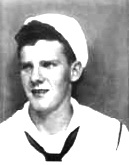
One incident sticks in my mind. It involved a really husky, strong, “farm” boy. He smelled !!!! Not just a little bit, but really bad. When the wind was just right, you knew he was coming when he was still blocks away. Those of us, who spent more time near him than others, decided we just had to do something. We didn't want to hurt his feelings and we certainly didn't want him in a rage. If it came to a fight, I was sure I knew who would win. Putting our heads together and chipping in some money, we bought body and laundry soap, toothbrush and toothpaste, under arm deodorant and some after-shave lotion. We slipped them in his room among his other belongings hoping he would take the hint. Nothing changed. Then we started dropping verbal hints and that didn't work. When we couldn't stand it any more, we decided we had to take drastic measures and if someone got hurt, so be it. One evening, we got together some of our bigger guys, went into his room, bodily picked him up, carried him into the shower clothes and all, stripped him and washed him down. Thank goodness, he thought it was a game and thoroughly enjoyed the whole episode. Well, so far, so good. Then we told him why we did what we did. We found it hard to believe when he told us that his family was so poor that they very seldom had any toiletries to maintain cleanliness. Not exactly his words but it boiled down to the fact that he wasn't taught these things. I think for the several weeks we lived with the smell, he wore the same socks, day after day after day, including our PT classes. Believe it or not, he really appreciated our doing what we did and after that, he was the epitome of cleanliness.
Another V-5er from Ada, Ohio had a girl friend from home with the first name of Laura. When the song came out, he bought the 78 record and played it loud and over and over again. Yeah. He was on my floor in the barracks, which didn't help matters any. When he wasn't playing it, he would be singing the song. Never got so sick of hearing a song in my life, before or since.
PT classes were designed to separate the men from the boys or the survival of the fittest. Touch football was more physical than tackling would have been. At least in the tackle game, you had on football gear and a lot of padding. All we had were shorts and that hot, double material, reversible, blue one side and gold the other, short sleeve jersey. Even though tackling wasn't allowed, blocking was. I caught an elbow in the mouth as I went out for a pass and ended up with several chipped teeth. I deserved it for I would grab the defender by the neck as I ran passed him and throw him to the ground. Guess I made him mad. Not all V-5ers were from Ohio. One was an Ohio farm boy and built like an ox. His neck was as wide as his head. And strong. I don't think he knew his own strength. I always tried to get Big Bill Miller on our team so that he could run interference. There wasn't anybody who could take him down. While touch football was fun, the game they devised with the medicine ball wasn't. This game was utter chaos. The medicine ball was placed in the middle of the field and each team started behind their own goal line. The object of the game was, once the whistle blew, each team was to race to the middle of the field, grab the ball and carry it over the opponents' goal line. This was a knock down, no holds barred, battle. Whom ever was carrying the ball was fair game. Have you ever been on the bottom of a pile of 10 or 15 people with a medicine ball under you in your stomach? If you haven't, you don't know panic or pain. You think you will never get a chance to breathe again. Maybe it wasn't as bad as it seemed, after all, we did survive.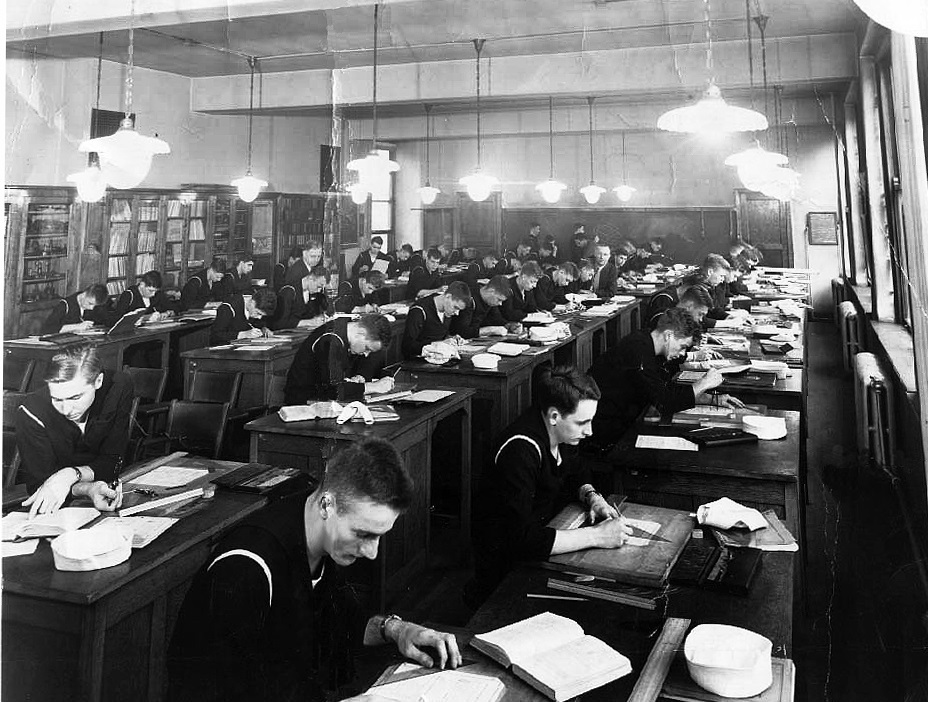
We thought we were real smart to ask our physics professor to explain the Atomic bomb to us. The first one had been dropped the day before and this was new to just about everyone. The professor stumbled through with some vague explanation that day. After all, we didn't know any better. Well, he must have done a lot of reading and research that night because for the next week, that is all we heard about. It got to be old hat and we were getting bored and behind in our regular work. All we expected was a brief respite in our class work and got over a week instead.
The sleepy town of Terra Haute, Indiana erupted on VJ day to a wild cheering, hugging and kissing crowd. The Navy gave us liberty to join in the celebration and some weren't sober for days, especially the V-12ers who had seen active duty before being selected for the program. Two events I will never frtejustifyrtejustifyrtp class=ejustifyrtejustifyrh3 class=tejustifyrtejustifyrtejustifyrtejustifyrh3 class=tejustifyorget. The Japanese attack on Pearl Harbor, 7 December 1941 and their surrender 14 August 1945, VJ day. After that, the urgency didn't seem to be on campus. We received our orders to our next duty station to arrive on my birthday, 31 October, Halloween, with a little leave in between.
And there I was IN HOBOKEN
31 OCTOBER 1945 – 20 JUNE 1946
A/S David A. Doll USNR 767-70-48 – V-5
CHAPTER FIVE
After a brief leave in Massillon, Ohio and a long train ride, I arrived at the Penn Station in New York City on Wednesday, 31 October. The porter couldn't find my sea bag nor those of the other Navy guys that had checked them through. He said to come back in about an hour, so several of us checked our other small gear at the Times Square USO and went sight seeing the Big Apple (don't think it was called that then). After two hours of walking around the Times Square area, we returned to Penn Station and they still hadn't located our sea bags. After getting directions at the USO, we got on the correct bus that took us through the Holland tunnel AND THERE I WAS IN HOBOKEN. Bob Kennelly and I went back to New York that evening (only takes 15 minutes), saw a movie and Les Brown and Orchestra on stage (almost all movies had a stage production as well). Going to like it here. Next day, we still didn't have our sea bags so we went to New York again. Why not? Classes wouldn't start until next week. Kennelly and I went to Rockefeller Center and toured NBC. Today, the following doesn't sound like a big deal but then it was. We were on television. Neither of us knew what it was. We sang a song and the rest of the tour group watched us in another room on a TV screen. Our singing probably held TV back at least a decade. Our sea bags were delivered to us three days after our arrival. Maybe we were lucky to get them at all.
At Stevens Institute of Technology, all the V-5ers were together rather than assigned to the older V-12ers. My "barracks" was the "Castle", the large two-story house, which had been the home of the founder of this higher place of learning. Stevens had made his fortune owning and operating steamboats on the Hudson River. It looked like one of the houses in a horror movie or a Sherlock Holmes story. It exterior was a weathered gray wood, built in 1870 and was located on the highest point on the campus and, in fact, the highest in the city. The rooms were quite large with ceiling heights of 12 feet making the two-story house appear much higher than one would expect. The entry was a more than ample vestibule leading into a large atrium open to a stained glass roof dome. All downstairs rooms opened off this space and a grand staircase led to the second floor circular balcony that surrounded the atrium and all "bedrooms" were accessed from this balcony. By luck or whatever, my room had the choice location on the second deck and had the least number of tenants. There were four of us sharing this space – Ed Bierly from North Canton, Ohio; Richard Safreed from Ada, Michigan and Dan Treacy from Lansing, Michigan. Our room was in the "tower" on the eastern side of the house. The view from our windows was a scene suitable for a painting. From the house, it was approximately 100 yards across a luscious lawn leading to the bluff along the Hudson River and a magnificent view of downtown New York City.
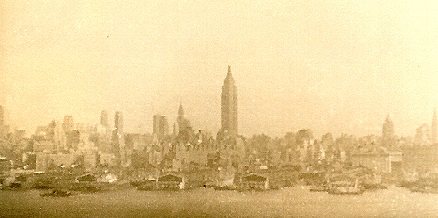
That first Sunday, we walked down the hill to the main drag of hoboken, found a corner drug store and all ordered milk shakes. We then discovered that the East Coast was different from the Midwest when the soda jerk asked if we wanted ice cream in our “milk" shakes. We couldn't believe it. Later found out that this was a city of 60,000 people within one square mile and 40 bars per every block along the docks. Frank Sinatra was born and raised in this city and rumors were that he would return periodically, visit many of the bars, and buy everyone a round. We could see the ships being loaded and unloaded from the higher vantage point of our room. Maxwell House had a plant near the docks and we could smell roasting coffee when the wind was from the south. Some of the V-12s and V-5s moonlighted by working as dock hands in their spare time, which wasn't much unless you count slipping out at night after bed check spare time.
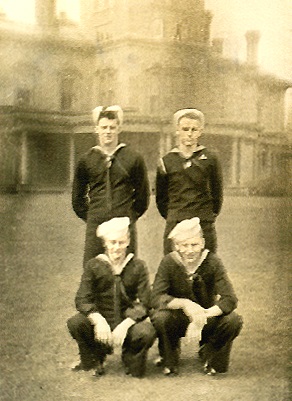
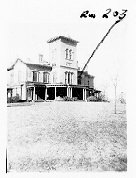
For some unknown reason, I was chosen to be the company commander of our barracks. Don't know whether that was a curse or a blessing. Responsibilities included getting everyone up in the morning, leading calisthenics, mustering for each of the daily activities, marching to these activities, and making bed check each night. Got rid of most of these jobs by assigning them to others and then seeing that they were doing them correctly. I maintained the company formations and the marching to classes and meals. I remembered enough from the training by the V-12ers at Indiana Teachers College to get by. Got better each and every day except those times we had dress parade with all the battalions. Each barracks was a battalion. Besides the Castle, there was Palmer Hall, Jacobus Hall and Navy Barracks.
We would "pass in review" to music provided by a band. After the first dress parade, my roommate, Safreed, told me on the Q-T, that I was to start the march on the drumbeat. I had no idea what he was talking about. He explained how it worked and that he learned all this while in the NROTC in high school. Didn't take me long to make him the right guide and for him to call cadence and get everyone off on the right foot. After that, the Castle looked great for all such formations. To this day, I march to a different drummer. I seem to clap on the off beat when at a concert and they ask the audience to put their hands together.
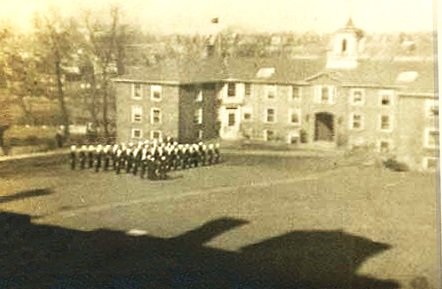
Our mess hall was in the basement of Jacobus Hall and under contract to a civilian food prep organization. They must have made a fortune from the Navy for this was, without a doubt, the worst food we ever had in our naval careers. There was one day that I didn't even bother to go to lunch. Once a week, Ma Pratt would have tongue on the menu. Maybe it was good, I don't know. I just couldn't get up enough nerve to try lt. Just the name was enough to turn me off.

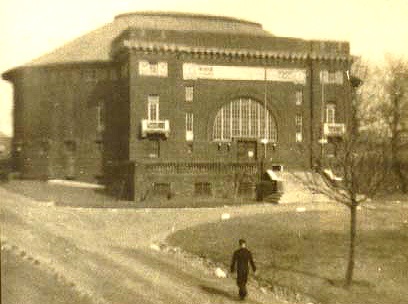
Played varsity basketball at good ole Stevens Hoboken Institute of Technology. The team consisted of civilians, V-12s and V-5s. Had a coach who we all thought did things the wrong way. If any of our players got a hot hand, he would take him out, saying he wanted to keep him rested for the push at the end of the game. Course, he was never hot again after cooling off. We didn't win many games.
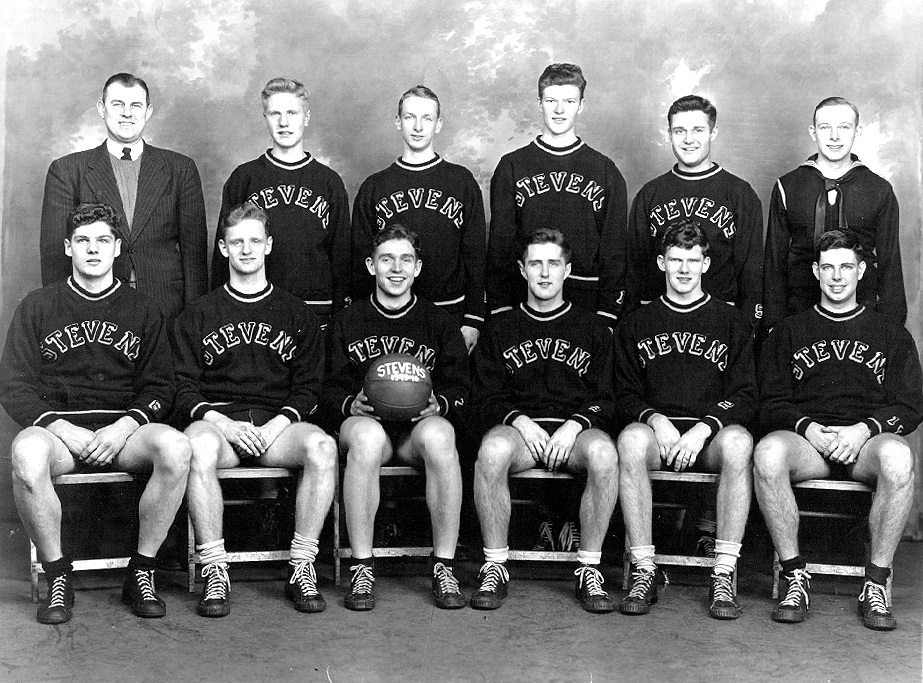
Played varsity baseball also but the Navy guys didn't get to play very much and I don't blame the coach. Since the war was over, both the V-12 and V-5 programs were to end following our second semester. He needed to give the civilians, who would be back the next year, the necessary experience. I did get to start pitching one game, but was knocked out of the box in the first inning. We played CCNY whose field had no grass and being city bound, had walls around the playing area. This isn't strange except the right field fence or wall was very close to first base. CCNY players knew how to play their field. They would stand in the front part of the batter's box, hit any breaking balls before they broke, and just sort of punch the ball over the right field fence. The distance to the wall was so short that it was a ground rule double and not a home run. Put enough doubles together and you don't need home runs. Never pitched in another game while there.
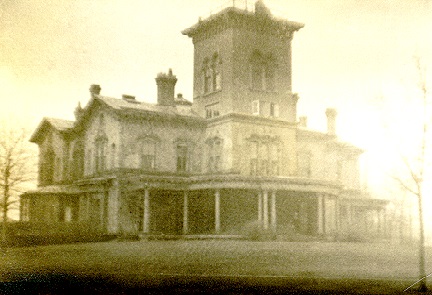
Kennelly found out that I had boxed in the American Legion Golden Gloves program and wanted me to teach him to box. In doing so, discovered right off the bat that he didn't know anything about boxing. I tried to take it easy on him but he would have none of that, so he got several bloody noses and black eyes before he learned to protect himself. The reason I am relating this is because "you never know!" He got out of the Navy when we had finished at Stevens and returned to his Indiana home. Later heard that he was boxing PROFESSIONALLY! As I said, "you never know!" Many years later, I received a phone call from him from Fort Wayne where he was a bank president. Boy! You sure never know.
Stevens was and is one of the top engineering schools in the country. It was said that it rated right behind MIT. It also was an "honors" college. That meant the students were on their honor not to cheat during an exam. This was quite different for all of us and strange to be taking a test or exam and the professor was nowhere to be found. As I recall, it was bandied around that Stevens had the Honor and the Navy had the System. For the most part, we honored the honor system. The Navy was a strong supporter of this program. So much so, that when several V-5ers were turned in for suspected cheating, an investigation was conducted and the perpetrators must have been found guilty for they were out of there within a week and the person or persons who turned them in was never revealed.
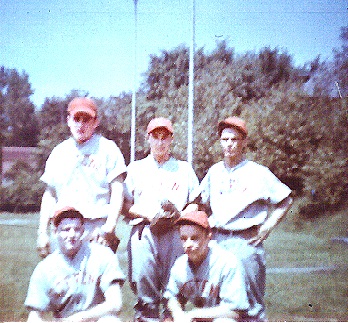 Our descriptive geometry professor had designed the Wright Cyclone engine for the B-29. He brought some drawings to class and taped them to the walls around the room. Rather than being on numerous sheets, these drawings were on a continuous roll and circled the room. He was very smart and probably a genius, but he was very difficult to understand. He had a very strong New England accent with a hair lip. It wasn't "bottle" but "bah-ul" and other words equally difficult to decipher. One got tired just trying to make out what he was saying, Another unforgettable professor taught History. He not only looked like Sidney Greenstreet but also sounded like him. Lots of humphs. He didn't seem to care much for our entirely Navy class. My guess is that he thought we were not at this school by our choice and could care less about learning as long as we could pass the courses. Course, our goofing around in class didn't help our image. He did one strange thing. He said if anyone would go to the opera in New York City and prove it, he would give him an A, weighted as if an exam. Surprisingly, quite a few of us took him up on it.
Our descriptive geometry professor had designed the Wright Cyclone engine for the B-29. He brought some drawings to class and taped them to the walls around the room. Rather than being on numerous sheets, these drawings were on a continuous roll and circled the room. He was very smart and probably a genius, but he was very difficult to understand. He had a very strong New England accent with a hair lip. It wasn't "bottle" but "bah-ul" and other words equally difficult to decipher. One got tired just trying to make out what he was saying, Another unforgettable professor taught History. He not only looked like Sidney Greenstreet but also sounded like him. Lots of humphs. He didn't seem to care much for our entirely Navy class. My guess is that he thought we were not at this school by our choice and could care less about learning as long as we could pass the courses. Course, our goofing around in class didn't help our image. He did one strange thing. He said if anyone would go to the opera in New York City and prove it, he would give him an A, weighted as if an exam. Surprisingly, quite a few of us took him up on it.
I think we all went to New York City every weekend. Where else could you ride the bus free through the Holland tunnel, be at Times Square in less than 15 minutes, get all the Pepsi you could drink free at the USO canteen right there on the square and eat hot dogs for a dime. At 99 Church Street, service men could get free tickets to just about every movie and stage production in town. While many movie lines would extend around the block, service men were allowed to go to the front of the line. Saw all the latest movies, two operas and several stage shows – “Up in Central Park” and “Showboat” were two that stand out. There were also the radio shows that we frequented. The favorite one was the Lucky Strike Hit Parade with Snooky Lansen, Johnny Mercer and Jo Stafford doing the vocals. Always saw two shows on Saturday, two on Sunday and spent 20 cents each day. Where else can you get a deal like that? Remember, the war was over but rationing was still on and there were shortages in most every item. Nevertheless, the service man was king. New Years Eve in New York City is an experience I will never forget. You haven't been in a crowd until you spend a New Years Eve at Times Square. I traveled several blocks and didn't move my feet. In comparison, sardines aren't packed that close together. Within 30 minutes after midnight, the streets were empty. What a weird feeling to be all alone in Times Square and I mean, there was no one else around. Found a church near the square with a dance going on in the basement. Had a good time until the wee hours.
The longer we stayed in New York the smarter we got. As I mentioned previously, rationing was still on and any kind of travel was done via public transportation. When going home by train between semesters or for the holidays (port and starboard leave at Christmas/New Years), we would go to Grand Central Station, buy our ticket, tip a red cap porter and he would see that the six or eight of us got on the train before the cleaning crew was through and before it was open to the public for boarding, so we always got a seat. Getting back to school was a different story. The train was so crowded one holiday that I had to stand in the aisle. Traveling between Ohio and New York City was usually 12 to 16 hours. I got so tired I crawled between two seats that had been flipped back to back and slept. Don't think I ever got those Blues clean. I was filthy.
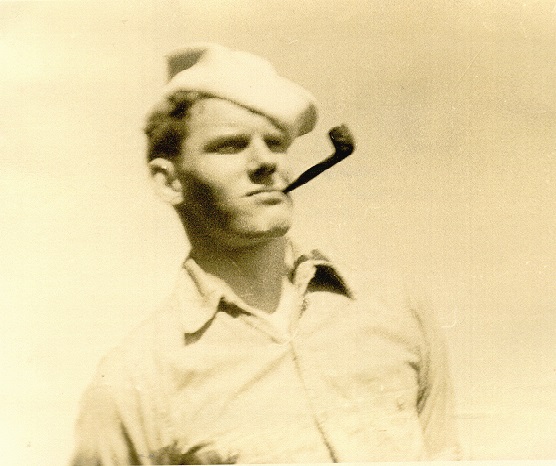 Near the end of our time at Stevens, our History professor realized that we were serious students even though we fooled around a lot. You could tell that he was enjoying us. He started smiling a little and even chuckled once or twice. We expressed our thanks and gratitude to him on our final day of class with a gift, a cheer and each shaking his hand and thanking him for what he had taught us. It was hard to believe but there were tears in his eyes.
Near the end of our time at Stevens, our History professor realized that we were serious students even though we fooled around a lot. You could tell that he was enjoying us. He started smiling a little and even chuckled once or twice. We expressed our thanks and gratitude to him on our final day of class with a gift, a cheer and each shaking his hand and thanking him for what he had taught us. It was hard to believe but there were tears in his eyes.
Being from the Midwest, we were seldom in a hurry for anything. When we first arrived, we would slowly stroll wherever we were going. I knew it was time to get out of the area when, spending one of our weekends in the city, I would find myself acting the same as the natives. Walking as fast as I could – and I had no place to go.
And there I was in BEREA
A/S David A. Doll USNR 767-70-48 – V-5
8 JULY – 31 AUGUST 1946
CHAPTER SIX
Military life was over for a while. The Navy gave each of us our choice of where we wanted to go to finish out our required "two" years of college before we started into the flight program. I had been offered a basketball scholarship to Baldwin Wallace and since it was close to home, it would give me a good opportunity to check out the facility in case I washed out of the Navy program and had to go somewhere to finish my higher education. My family had moved back to Portsmouth, Ohio so I had to hitch hike everywhere I wanted to go or, as a last resort, take a bus. I still had an Aunt and Uncle in Massillon so I could get wheels in a pinch. Had some time between Stevens and Baldwin Wallace so I spent the first part of July in Portsmouth. Mom and dad drove me to Massillon on the 6th where we spent the night with mom's sister and brought me to Baldwin Wallace on Sunday the 7th of July AND THERE I WAS IN BEREA, Ohio, just outside of Cleveland and very near the Cleveland Airport.
Didn't realize that we had been taking more than the normal class load in our two previous colleges until I found that all I needed for my two accredited years was two courses – English and Physics. That left me with lots of spare time, or so I thought. Two subjects in two months is REALLY an accelerated education which requires a lot of study time. As I recall, we had a book report every week. That is a lot of rapid reading and writing. Physics was a lot of lab work with all the experiments written up along with the normal expected class work. Time soon became a premium.
I think the Navy was not prepared for our being "civilians" again because they sure were not paying us at any regular basis and even after a long dry spell. I think I went several weeks without a penny to my name and that was after spending for only the bare necessities. Thankfully, the school was patient and believing that the Navy would finally come through. My believing was fading fast. My full pay didn't catch up until my next duty station.
The summer doldrums on campus were shattered one warm day when it seemed as though planes were flying through the buildings rather than over them. Discovered that the course that these souped up military planes were flying in the Cleveland Air Races put them right over the campus. To me, this was the best thing that had happened to me all summer. Not so for a fellow in our dorm. As soon as the first plane zoomed over, he was found in a fetal position in a comer, whimpering and trying to hide his head in his arms. Very pathetic looking. When we found out that he had been on a Navy ship that had sustained repeated attacks by the Japanese Kamikazes and had spent months in a hospital undergoing psychiatric treatment until this semester, our sympathy was without bounds. We had to take him to a local hospital since we couldn't stop the planes from flying over us. Went to the Air Show that weekend. Great!!!
A professor at Stevens had tried unsuccessfully to hypnotize several of our Navy men, because, as he said, there was too much distraction caused by the noisy construction going on right outside our window. He did show us some mind over matter tricks, however. Had several of us stare at a mark on the wall at eye height for several minutes then turn around, close our eyes and concentrate on the mark. Wham!!! Your head would uncontrollably hit the wall at the mark. Amazing!! Finally got to witness hypnosis. One of our dorm members could do it. With a little prodding and letting him think that we didn't believe him (we didn't), he found a willing subject after he assured him that no matter what he wanted him to do, if it was against his principles, beliefs, morals or whatever, he couldn't be made to do it. Besides, he wasn't going to do anything like that anyway. The victim went under without much trouble and, after a few simple demonstrations, he was given a post hypnotic suggestion that for the rest of the evening, when he heard the word "soap", he would be followed by a cat and, by the next morning, he would not remember any of this. We were rolling on the floor laughing when the cat first appeared to him while he was in the gang shower and someone asked for the soap. He kept saying "Look at that crazy cat in the shower with us." He swore that cat followed him all night. Orders came to report to Great Lakes Naval Training Station on 3 Sept.
And there I was IN SELECTIVE AT NAS GLENVIEW
9 Sept – 14 Oct '46
AvCad David A. Doll USNR 767-70-48, V-5
CHAPTER SEVEN
Orders arrived at Baldwin Wallace for me to report to Great Lakes Training Center on 3 September for further assignment. Didn't have much to do there until we received our orders to selective. They gave us three choices. Livermore California (had friends in the area), Dallas Texas (had aunt and uncle in Houston) and Glenview, Illinois (didn't know anyone in the area). My choices in descending order were Livermore, Dallas and then Glenview. With all kinds of time to kill, I did a lot of walking around the base. A lot of my high school friends had gone through Boot Camp there and I wanted to see what it was like. I learned a very important lesson there. Never, never, never get between a Marine and his prisoners. I saw these guys in prison garbs policing the grounds and the Marines with their armament standing well away from them. It so happened that they were on each side of the walk leading into the post office where I was going to mail a letter. I thought World War III had started. Talk about being chewed out. You have no idea until a Marine does it. In typical Navy tradition, finally got my orders to my next duty station –
And There I Was IN SELECTIVE AT NAS GLENVIEW proceeding with the check in and trying to get oriented. Just by chance and pure luck, I met some reservists that first weekend and they invited me along for a ride in a TBM. What a thrill! The first ride in an airplane and it was a type that had seen lots of combat in WW II. The TBM (Torpedo Bomber made by Martin) was similar to the type flown by President Bush. This must have been a special Sunday for we flew out over Lake Michigan and dropped wreaths of flowers. Do not recall what the ceremony was all about. But it was impressive.
BIG day. Met my instructor, Lt Wachsler, who proceeded to preflight the N2S and explain to me in detail, what to do and why. This is to be standard procedure on every flight and for every plane I fly.
This first flight I figured would be a demo flight and a fam for the area. WRONG. This was a working session. We spent the entire I hour and 15 minutes shooting touch and go landings. Near the end of the lesson, I was doing them by myself or at least I think I was for I didn't feel him on the controls near the end of the flight. His philosophy was that anyone could fly a plane but it took lots of practice and skill to land. I am grateful to this day for his approach to flying. If one can get through selective and primary in the Yellow Peril and not get a wing tip, you are either very good or very lucky. Those that don't ground loop probably consider themselves very good. Came close several times but managed to avoid the scrape. I think we spent more time inspecting the underside of the wings in our preflighting than anything else. No one wanted to take off in an N2S with scratch marks on the bottom of those lower wings. Who would believe you? Right? No one. The N2S was the Navy's designation for the Stearman "Yellow Peril". This was a fabric-covered bi-plane with two open cockpits. Communication between the instructor in the front cockpit and the student in the rear was via a tube called a "gosport.” The instructor would speak into the "mask" and the student would hear through earphones connected to the rubber tubes. Conversation was one way. There was no way the student could "talk back" to the instructor unless you idled the engine and shouted. Primitive, but it worked.
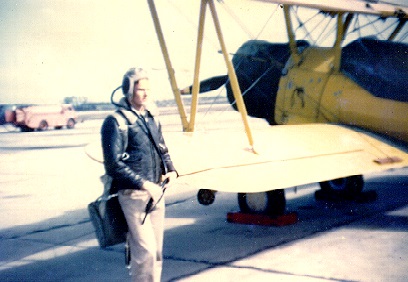
Chicago, that year, was quite cold in October. We flew with the leather helmet and the fleece lined flight jacket and gloves. Don't remember whether it was the concentration on the flying or the temperature but there were times that I had to take my left hand and pry my right hand fingers off the stick at the end of a hop.
The big day arrived on 14 Oct. 1946. Solo or wash out. After one hop with Lt Wachsler, Lt Taylor got in for my check ride. I showed him what I could do for 45 minutes and after one landing to a full stop, he got out, locked his straps over his seat and said, "Go for it." Didn't become aware of anything until I was flying the downwind leg. Then I woke up and said, probably out loud, "What am I doing up here by myself. Now I have to land this mother or else." That time, I was sweating no matter how cold it was, I can't be absolutely positive but I think we got, or had to do, only one landing.
An interesting event occurred, the same day I soloed, by a fellow student on his solo landing. The landing pattern that particular day was such that at about the 90, there was a rather tall tree. We made sure that we went around it, but unfortunately, this student started his turn a little early resulting in his engine blocking his forward view to the extent that he never saw the tree until he flew through the upper branches. He made a successful landing and his check ride instructor gave him an up, stating that anyone who could do what he had done and still complete the landing, deserved to pass. They had to clear the branches from the cross bracing wires before they could return to base. Never a dull moment.
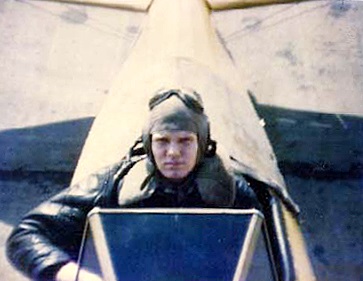 As I left NAS Glenview, they were installing canopies on all the planes. Thanks a lot!!!
As I left NAS Glenview, they were installing canopies on all the planes. Thanks a lot!!!
Whereas New York was a very metropolitan city, Chicago was like a small mid-western town that just got big, or so it seemed. Even though I wasn't at NAS Glenview very long, I got to see and do a lot of things in the windy city. That name is not a joke. Those tall buildings along Lakeshore act as venturies and the wind whistles through the canyons. When we weren't scheduled for flying, we were on our own. Shortly after getting there, a friend and I went to the Aragon Ballroom to dance to big name bands or, if we couldn't find anyone to dance with, just listen. As we started up the grand staircase, we saw two gorgeous gals at the top. We decided who would try for whom on the way up. To our surprise, they agreed to be our dates that night, and, as it turned out, Margie remained my date all the time I was at Glenview. She was a beautiful Swedish blonde. Girls could drink hard liquor at 18 but boys had to be 20. Didn't matter. I didn't drink and Margie would have one sip and her joints would ache. I thought she was putting me on for l thought she probably was thinking of Ogden Nash saying, "Candy's dandy, but liquor's quicker." Later, I found that there are some people that are so affected by alcohol. We spent my birthday and my last evening in Chicago together, walking along the lakefront parks enjoying the balmy breeze and the full moon.
And there I was IN PREFLIGHT SCHOOL
AvCad David A. Doll USNR 767 70 48, V-5,
20 November 1946 – 18 December 1946
Aviation Midshipman David A. Doll USN C-496528
18 December 1946 – 5 April 1947
Batt 1– class 16-46
CHAPTER EIGHT
I left Portsmouth Ohio Sunday evening at 2030, 17 November on the N and W's new passenger train, the "Powhatan Arrow". Changed trains in Columbus to the New York Central line and their old straight back uncomfortable seats. We arrived Chicago 1830 on Monday but didn't leave the windy city until 1730 on Wednesday. I think I must have planned this layover so I could see Margie again. I had been dating her while at NAS Glenview and had last been with her at the end of October. The trip from Chicago to Ottumwa, Iowa was 300 miles and it took the Burlington "Zepher" just 4 hours. At times we were hitting 120 MPH. The sound of the wheels hitting the joints in the tracks, which alternate 33 feet apart, didn't go clickedy click but cl-cl-cl-cl-cl. I arranged for transportation to NAS Ottumwa that evening AND THERE I WAS IN PRE-FLIGHT SCHOOL. For the record – I was reimbursed $1.00 for subsistence and $9.09 for mileage from Glenview to Ottumwa for a grand total of $10.09. Didn't remember the government being so generous.
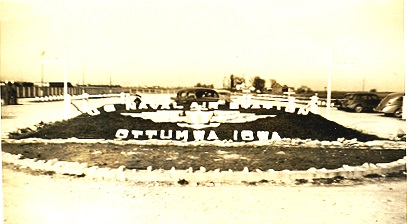
Things started moving rapidly. The next day we had another complete physical and were issued our clothes, books and athletic gear. The Navy moves in mysterious ways. We were issued brown work shoes and told to dye them black. The next day, we took our fitness (strength) tests. Besides the chin-ups, push ups, sit ups, we had a new one to most, if not all of us. This was the infamous step test. Works like this. Tight against a wall is a standard locker room type bench and on a table there is a clock that goes beep, beep, beep, BEEP once every second. On the count – left foot up, right foot up, left foot down, right foot down. This is repeated for 5 minutes, which equates to 75 up and downs. When you finish, they take your pulse three times spaced 30 seconds apart, I suppose, to see if you are going to survive. You also wonder the same thing.
I tried out for the varsity basketball team, the Ottumwa Seahawks, who were always in the top ten nationally during the war years along with the Navy pre-flight school at St. Mary's, California. Because I made the team, I got out of the daily Phys Ed class but could not get out of the daily 2-hour swim class for those first two weeks. Think my fat level was low for I floated like a rock, which made staying in the pool for those two hours without touching the sides very demanding strength wise. After swimming, I had basketball practice for a couple of hours. Even though I had made the team, I still had to prove myself so, as they say, I tried a little harder. Even without these two activities, the daily routine was quite strenuous. Early reveille, calisthenics, formation, marchrh3 class=tejustifyrtejustifyrtejustifyrtejustifyrh3 class=tejustifyorget. The Japanese attack on Pearl Harbor, 7 December 1941 and their surrender 14 August style=1945, VJ day. After that, the urgency didn/h3 to breakfast, march to barracks, clean space and make beds, formation, march to am. Two events I will never forget. The Japanese attack on Pearl Harbor, 7 December 1941 and their surrender 14 August 1945, VJ day. After that, the urgency didnmorning classes, march to lunch, march to afternoon classes finishing with the two hours of swimming. Then I would go to the basketball practice. Following the evening meal, we had study hours until 2130 and lights out at 2200. The first part of the second week, I started getting a fever and chills around 2lOO but was ok the next day. Each evening l got these chills and fever earlier and earlier. After about four days of this, I went to the sick bay. There were no doctors on duty at that time of the night and the medic on duty didn't want to admit me without a doctor's order. After I kept insisting he at least take my temperature, he did and put me in a bed immediately. Guess my temp was high enough to scare him. Gave me aspirin and I went to sleep. Felt great the next day but the doctors, who read my chart and examined me, would not release me. Every day for two weeks, they would listen and probe, ask a lot of questions, mostly if I had had malaria or been in the tropics or been near anyone who had. They were completely baffled when I would answer "no" to all of these. They listed my condition as "Cat Fever" and let me go after about two weeks. I enjoyed my rest. Years later, I found that if they couldn't diagnose a condition, it was listed as "Cat Fever". I knew what caused the chills and fever but I didn't tell them. It was simply, physical exhaustion.
In mid-December, our class was given a special lecture on the benefits of the Holloway Plan. Course, we had never heard of it for it was brand-new. It was named after the Admiral who authored it. Basically, for those who signed up, it would increase your monthly pay, make you a Midshipman, and almost guarantee you a career in the Navy for you would be USN rather than USNR. You would wear the same uniform as the Middies at Annapolis which is different than the uniform worn by the Aviation Cadets (AvCads). The down side was that we had to remain Midshipman for two years from the date we signed, no matter what. Most of us signed on as Midshipmen, more for the career guarantee than anything else. My date of "rank" as a Midshipman was 18 December 1946. Every set of orders I received after this would list me as either an Aviation Midshipman or just plain Midshipmen but would have a paragraph stating that I was to be a Midshipman until 18 December 1948. Guess the Navy didn't want you to forget it.
Received a letter from our basketball coach, Lt L. B. Shafland, dated December 27, 1946 and sent to my holiday leave address in Portsmouth, Ohio. Said we were going to play an informal game at 1430 on Jan. 4, 1947 against the U.S. Naval Academy. Interesting letter in that he gave us a choice of how we were to get to Annapolis. Be back in Ottumwa by the take off time of the R4D at 0800, Friday, Jan. 3 weather permitting or meeting the team in Annapolis on Jan.
3. Letter also stated that if the weather prevented departure, the game would be cancelled and those who are not in Ottumwa will be expected to report back as soon as possible for basketball practice. The trip to Annapolis was for some unknown reason, cancelled. However, we did get to leave the Iowa winters behind several times. (See schedule below) One such trip was the blimp base at NAS St. Simons, Brunswick, Ga then to the Banana River Naval Air Station (now Cape Canaveral) and swimming in the Atlantic, finishing with Havana University. (Can't remember where this university is located. Pretty sure it was not in Cuba).
To live in Iowa, you have to be one rugged person. The winter had blizzards where the winds hit 65 mph, temperature -25 degrees, with snowdrifts up to eaves of our barracks. We had to march to class in these severe weather conditions. The green coats issued did nothing but strain the air. Warmth wasn't their strong point. We would pull our watch caps down over our ears and face for a little relief as we leaned into the wind. We thought we were doing the right thing in protecting ourselves against the elements. The Marines thought differently. They put us all on report for being out of uniform. Seems that to pull the watch cap over your ears and face was a no-no. The base finally corrected that situation when several cadets or midshipmen reported to sick bay with rather severe frost bitten ears. On good weather days, there might be a band on one of the street corners we passed on our way to classes, playing some John Philip Sousa's marches. What a surprise that was the first time. Sometimes, the marines would march us and some times they would stand on a comer and observe our demeanor. The time we were freezing to death, this marine was in green dress uniform with jacket but no coat or gloves and wearing his fore and aft cap. (Most often referred to as a piss cutter or cunt cap). Why he didn't freeze, we never found out. If a marine has never drilled you, you don't know what drilling is. I don't believe any other service can match their unique style. Once we learned to decipher their guttural grunts and groans, we did pretty well. Nothing sounded like the normal commands like attention, right face, about face, forward march, column right march, to the rear march, etc. The cadence was really different. In a low guttural voice, it sounded something like "freep fo ee ep hop, freep fo ee ep” starting and ending on the left foot.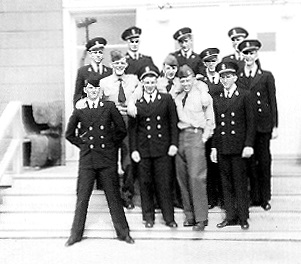
I had a terrible time passing Morse code. I went back to the lab, night after night to take extra lessons. I finally passed 2 words per minute, then 4 wpm but just could not pass 6 wpm, the minimum to pass the course. Try as I might, I just couldn't do it. The letters come almost slow enough to count the dots and dashes but not quite. I finally got exasperated and said give me 8 wpm and believe it or not, I passed the first time.
Unforgettable was the SURVIVAL course. This two-week course culmin-ated in our surviving in the wild. Started somewhere out in the boondocks after a bus ride from the base. We had a 10-mile hike with full backpacks containing tent, sleeping bag, various tools, clothes and "K"-rations for three days. Iowa is basically flat but wherever we ended, it was hilly. After pitching our tents, spreading out the sleeping bags and stowing our gear, digging latrines, making a road for the jeep, we went repelling. Jumping out off that cliff backward is quite a thrill. You are praying that you paid close attention during the instruction, had tied the "rabbit come out of the hole, go around the tree and go back through the hole" running bowline properly and had the rope around you the correct way. These were the days where ones' Boy Scout experiences came in mighty handy. We made use of everything, including the wax from the K-ration package to make candles. "Rules of the game" – we could eat anything we could catch, but the farmers' chickens, pigs, goats, cows, etc. were off limits. We were un-successful in trapping any bird or four-legged animal with our traps, or getting any fish with our spears, but the highlight of the day was when a squirrel was flushed out and everyone started chasing it. The squirrel made the mistake of running up within a hollow "tree". This tree was like a log on end and about twelve feet in height. Arky shinned to the top and we beat on the sides to chase the squirrel to the top where he succumbed to Arky's machete. The soup wasn't enough to go around, even watered down. I don't want to say that it was cold at night but the water in our canteens was frozen in the morning. For our last meal in the wilderness, the Navy supplied each of us with a big steak and potato. All we had to do was cook them. No sweat. Meat and taters never tasted so good.
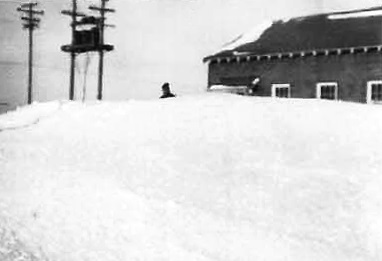
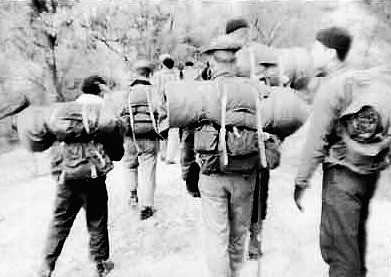
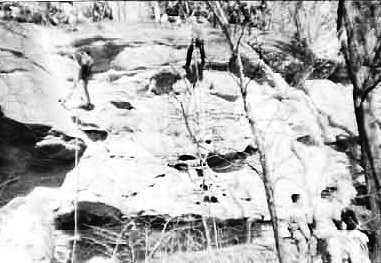
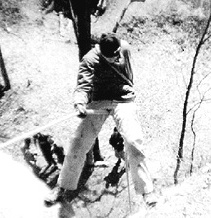
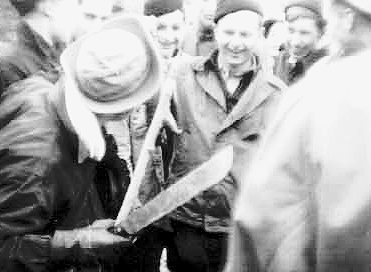
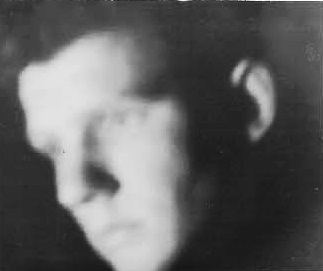 Before you could leave pre-flight school or rather “graduate” you had to pass the swimming test. Among other things, you had to rescue a drowning person, swim a large number of laps in the pool (I forget how many) or stay in the water an hour without touching the sides, and to jump off the 30 foot high catwalk into simulated burning oil on the water. As mentioned earlier, I float like a rock, but I was fortunate that Foster floated like a cork. He was my partner so he got the short end of the stick. I guess it is patterned after the First Aid Life Saving courses whereby you approach the arms-flailing drowning person, do a surface dive, grab his legs at the knees and rotate him 180 degrees, come up behind him and either do a head or chest carry to shore. If they don't settle down, you may cold cock them. We didn't get to do this part. There was no way I could swim the number of laps required (some did it in 20 minutes) so I tried to stay afloat for the time specified. I think I swallowed half the pool. Have you ever tried to float with your head laid way back and the water almost covering your nose and you have these other people swimming past making waves? The jump into the "burning water" was from the catwalk built within the space of the roof trusses. One ladder led up and the catwalk just stopped with an open end. The entire class lines up, goes up the ladder in single file, proceeds to the end of the catwalk, jumps off with legs crossed, holding your crotch with one hand and your nose with the other. Upon entering the water you try to stay oriented and swim underwater towards the closest "shore". On the way up to the surface for air, you break the surface with a fanning motion to spread the flames enough for you to get a breath, dive, and continue swimming underwater until out of breath and repeat the procedure until clear of the burning fuel. One classmate froze at the end of the catwalk and couldn't get up enough nerve to jump. The next guy in line helped him change his mind with a friendly assisting shove. He would have been better off to jump on his own rather than the way he left the catwalk and the unusual attitude his body was in entering the water. He didn't get hurt too bad.
Before you could leave pre-flight school or rather “graduate” you had to pass the swimming test. Among other things, you had to rescue a drowning person, swim a large number of laps in the pool (I forget how many) or stay in the water an hour without touching the sides, and to jump off the 30 foot high catwalk into simulated burning oil on the water. As mentioned earlier, I float like a rock, but I was fortunate that Foster floated like a cork. He was my partner so he got the short end of the stick. I guess it is patterned after the First Aid Life Saving courses whereby you approach the arms-flailing drowning person, do a surface dive, grab his legs at the knees and rotate him 180 degrees, come up behind him and either do a head or chest carry to shore. If they don't settle down, you may cold cock them. We didn't get to do this part. There was no way I could swim the number of laps required (some did it in 20 minutes) so I tried to stay afloat for the time specified. I think I swallowed half the pool. Have you ever tried to float with your head laid way back and the water almost covering your nose and you have these other people swimming past making waves? The jump into the "burning water" was from the catwalk built within the space of the roof trusses. One ladder led up and the catwalk just stopped with an open end. The entire class lines up, goes up the ladder in single file, proceeds to the end of the catwalk, jumps off with legs crossed, holding your crotch with one hand and your nose with the other. Upon entering the water you try to stay oriented and swim underwater towards the closest "shore". On the way up to the surface for air, you break the surface with a fanning motion to spread the flames enough for you to get a breath, dive, and continue swimming underwater until out of breath and repeat the procedure until clear of the burning fuel. One classmate froze at the end of the catwalk and couldn't get up enough nerve to jump. The next guy in line helped him change his mind with a friendly assisting shove. He would have been better off to jump on his own rather than the way he left the catwalk and the unusual attitude his body was in entering the water. He didn't get hurt too bad.
At the same time basketball is going on, the wrestlers are doing their thing. I don't think I could ever have the dedication to a sport as much as they did. Not really knowing the sport, their training seemed a little strange. Besides all their practice wrestling, they had to keep their weight down at least two weight classes below their normal weight. They said that gave them the advantage over an opponent who was only down one weight class for they still maintained their strength from the heavier weight. I still think that those in the Navy flight program were heads and shoulders over others their age, both mentally and physically. The Ottumwa Pre-Flight Wrestling team participated against the leading and best Colleges/Universities in the country and never lost a match. Iowa State was the National Champion the year before and was picked to repeat. Their heavyweight class was world renowned as the perennial national champion and had never lost a match. An advantage to being in the heavyweight class is that you didn't have to diet but rather tried to gain weight. The fellow in that class at Ottumwa was an Ohio farm boy and we had been together throughout our time in the Navy. I always tried to have Bill Miller on my team in our intramural sports at the various colleges we attended together. He was a very quiet and unassuming person but strong as a bull. I don't think he knew his own strength. He was undefeated in his wrestling career at Ottumwa and wiped up the mat with the reining National Champion from Iowa State. He got out of the Navy after Pre-Flight school, returned to Ohio and played football for Ohio State University. I found out later that he never did much in football, even though he had earned a starting position, because he said he was afraid of hurting the opponent. He never played to his potential. After college, he became a professional wrestler, originally the good guy but later in his career, the bad guy. He must have been good at acting also. Following their season, those that had lost the weight by enemas, dieting, vomiting, and anything else they could think of, reversed the trend in a hurry and ballooned up in weight and looked like chipmunks with their cheeks full of food. My hat is off to them for their dedication to a sport.
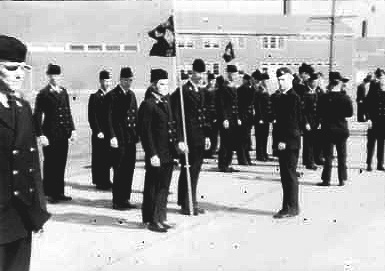
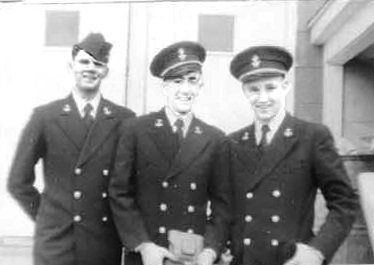
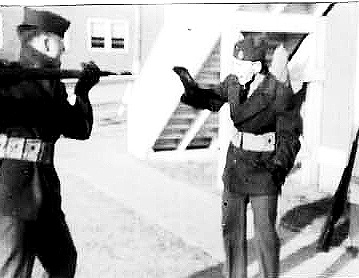
When basketball season was over, I wanted to get ready for baseball at my next duty station, Corpus Christi. Because of the many basketball trips and spending two weeks with the “cat fever,” I fell behind my class. They graduated and I was still in Ottumwa. George Schrauth and I would go to the field house after duty hours and on weekends and practice. He would catch and I would pitch. This almost equaled spring practice for me for it got my arm in shape and my accuracy steadily improved.
I left Ottumwa under orders made out to just me and not a group, like they usually were. I was lucky to get out of town when I did for heavy rains had flooded the town and the area. All the midshipmen and cadets were called to emergency duty to aid the flood victims but my orders were cut and luckily, I got out and on my way south.
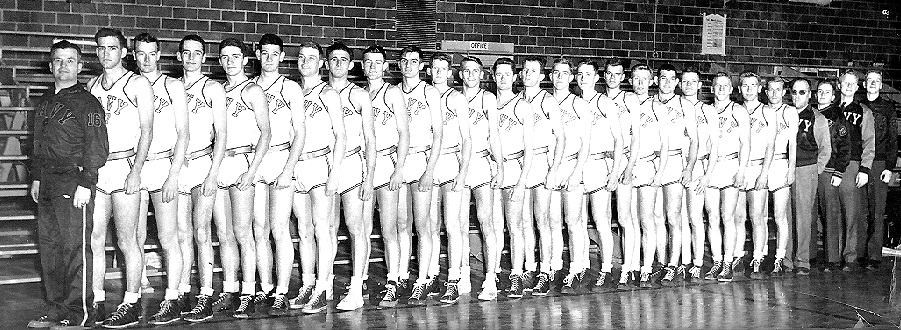
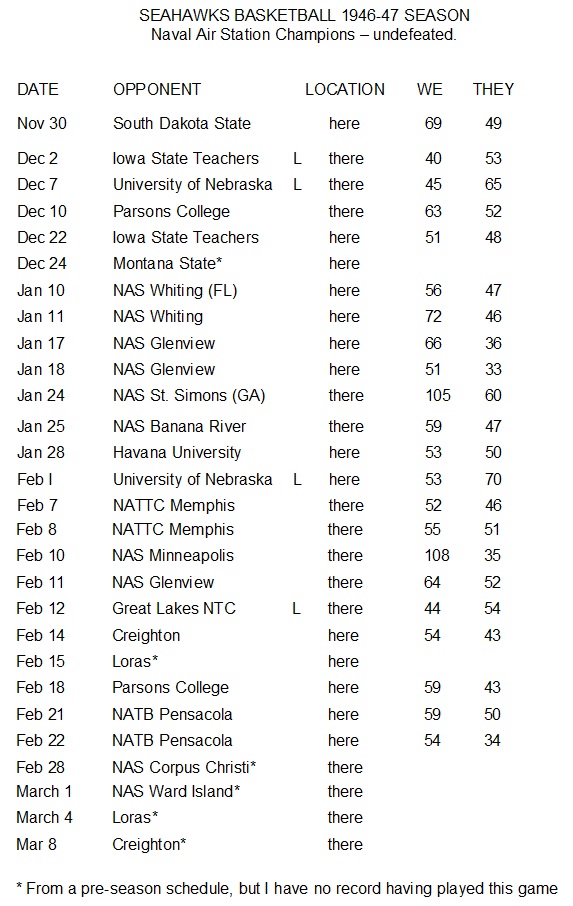
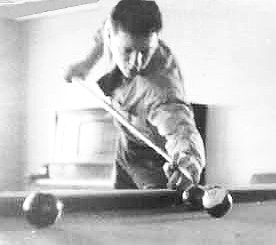
And there I was THE LAST STUDENT TO FLY THE N2S
NAAS Rodd Field-Corpus Christi, Texas
Project "X"
8 April 1947 – 10 June 1947
Class 16-46
CHAPTER NINE
I had fallen so far behind my Pre-Flight class because of the time in sick bay and the time on the road with the basketball team that my classmates were long gone to our next duty station. I received my change of duty orders as an individual, rather than with a group as most would have been written. My T/R was for first class Pullman from Ottumwa to Corpus Christi.
George Schrauth preceded me to Corpus by several weeks. He must have been telling a lot of tall tales to the baseball coach because as I was checking into the duty officer at 0800 on the morning of 8 April, I was told to report to the baseball diamond as soon as possible. What was going on? I reported to Coach LT Gross and he told me to get fitted with a uniform for I was to be the starting pitcher against NAAS Rodd Field that afternoon. Questioned the coach how that could be since he had not seen me pitch. Said it didn't matter for he had heard how good I was from George. Boy! George sure put me in a spot. I was lucky that day and we won the game. That was some great ball team with a lot of good players. We were undefeated in winning the Naval Air Stations tournament. On our way to NAS Pensacola to play in the All Navy Tournament, our DC-3 had a little problem so we stopped in Galveston for repairs. Then we ran into some bad weather and had to stop in Baton Rouge for the night. Won all our games in Pensacola and went to Jacksonville for another leg up in the All Navy. We were the champions of the 7th, 8th, and 9th Naval districts by winning a double header in NAS Jacksonville where I pitched the first game and won by the score of 4 to I and Whit pitched the second game, winning 7 to 3. We ended our season as runner up at the Eastern All Navy tournament played at Mainside Naval Station, Norfolk, Virginia. Midshipman Ward Whitten won our first game against the Quantico Marines and I lost our second game against Parris Island. We were winning I to 0 going into the ninth inning and then the roof fell in. We lost 5 to 1. It was the last of the ninth with Parris Island at bat, two outs and the bases loaded. A line drive was hit to dead center field. Dugan was playing center that day and he came charging in to make a shoe string catch of that line drive. Unfortunately, he didn't quite make it. So close. Had he been successful, we would have won the game and probably the All Navy Baseball Tournament. Even though Dugan didn't make the catch, I think he did the right thing and I think every one else on the team felt the same way. Whit came back the following day against Quantico (double elimination) with just one day's rest. We were winning when the rains came. It had gone the necessary number of innings to be an official game but, since it was for the championship of the Eastern All Navy, they delayed the game for one and one half-hours until the rain had stopped. Anyone who has pitched knows that you can't sit around that long without your arm getting stiff. Whit tried but couldn't finish. Used another pitcher, we were wining 5 to 3 in the ninth, Quantico rallied and we lost. Ironically, Quantico went on to win the All Navy championship. Should have been NAS Corpus.
Several members of that team went on to play professional ball in the Minors. Our coach was also a scout for the Phillys, a podiatrist, and had a collection of Bunny Barrigan that would be the envy of any disc jockey.
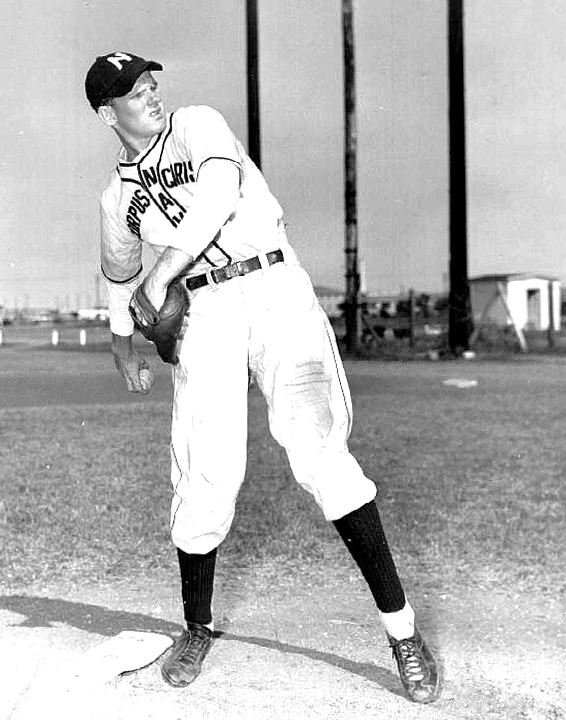
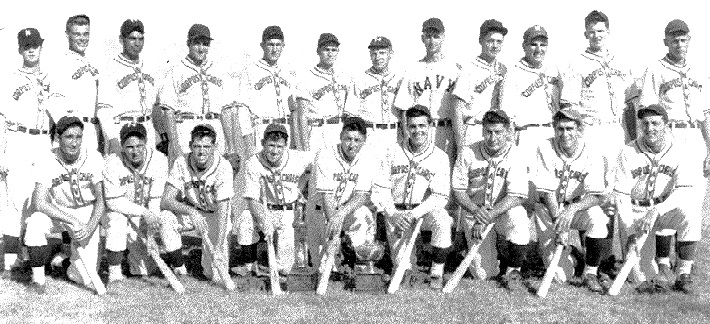
Reported to Squadron Project "X" on 11 April with LTjg Kinney as my instructor. Ironically, he was a pitcher on the Rodd baseball team. We finally pitched against each other and Mainside won a very close game. We both threw junk balls (lots of breaking pitches and very few fast balls – neither of us could throw anything fast). After that game, the next hop all Kinney did was talk about the game. Course, those in the rear seat could do nothing but nod or shake our head with those "speaking tubes" going only one way. I got to do little to no flying that day.
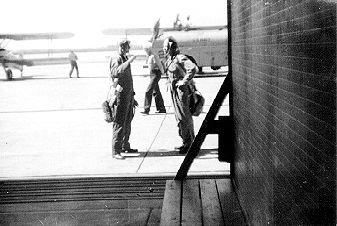
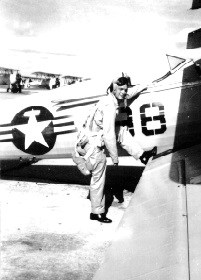
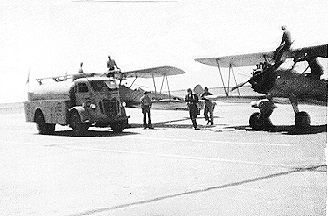
Project "X" was an effort on the Navy's part to see if there wasn't a way to both shorten the program and still have skilled pilots or, in other words, eliminate the N2S from the program and start classes directly in the SNJ. By the luck of the draw or whatever, I started in the Stearman while others started in the SNJ at the same time. It became obvious, in a short time, that the students were having no trouble with the SNJ program. The word got around that we, in the Project X program, would be the last class to fly the "Yellow Peril".
The N2S had a very narrow landing gear and, unless the pilot stayed alert, it would ground loop on landing. In any kind of cross wind, it tended to weathe-cock and turn idly into the wind causing the outside wing to scrape the ground. Even without a rapid crosswind, it seemed to want to do this. The scourge of all N2S pilots. Whatever else you might do, never, never ground loop. Didn't look good on your flight record. After signing the yellow sheet accepting the plane for this hop, you made damn sure the underside of the wings showed no sign of having been in a ground loop. If it had and you failed to report it before you started the engine and moved the plane, no matter how slight, you would be held responsible for someone else's mistake. It is a wonder that there weren't more accidents during take-offs and landings than there were. Where those flying the SNJs took-off and landed on runways, those flying the Yellow Perils used what was called mats. These were large circular black top areas. The advantage to using the mats was that you should never have to land or take-off in a cross wind. The BIG disadvantage, at least as the training command was using them, was that multiple planes would take-off and land at the same time. You tried to squeeze between any two that had, what you estimated to be, enough space for a safe take-off or landing, hoping and praying that no one swerved or ground looped. Anything like that would cause a serious chain reaction affecting quite a few planes. I was either very skilled or very lucky for I never got a wing tip.
Texas was an excellent place to do any flying. First, and maybe the most important, was there were emergency landing fields as far as you could see anywhere you were. It seemed that the entire state was suitable for landings. Second were the beautiful isolated thunderstorms. What a thrill it was, when flying solo, to fly around the perimeter of the storm and see the churning of the clouds and the rapid rising air currents. I think the Stearman was the perfect plane to do this. The open cockpit gave you the feeling of being a bird as you zoomed up a cloud, rolled and crossed over inverted hanging on the safety straps, the only thing overcoming gravity and keeping you "in" the plane. You had to have faith. I don't think you could damage the N2S in the air. The stresses that plane was put through by students learning to fly had to be excessive. When practicing aerobatics doing loops, snap rolls, regular spins, inverted spins with the negative G forces, and just the thrill of a terminal velocity dive just to see how fast you can get her to go, you know certain forces were maximized. The wind whistling through the guy wires is a sound you never forget. Overall, the Yellow Peril was the most exciting plane I ever flew.
We lived and had ground school on Mainside and we were bused to the outlying fields for our flying. It sure was hot riding in those pre WW II dark blue buses with the engine sticking out front with the lift up side panels for access to it. Some relief was obtained by opening all the windows – but not much. The only way to cool off was to get a plane up to altitude where you had the adiabatic cooling effect. Our "friends" the Marines were the guards on the entry gates to all the Navy bases in the area. We would do every thing we could think of to get under their skin. The most effective was to be singing the Marine Hymn to the tune of "Clementine" as we approached the gate. When they heard that, they would stop the bus, come on board madder than hornets and make each and every one show their ID cards. They would delay us as long as they could and not get themselves in trouble. Course, all singing stopped when they came on board but resumed when we drove away. Obviously, there was no love lost between the Marines and the Aviation Midshipmen/Cadets.
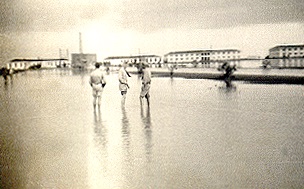 The U. S Navy provided flight training for foreign countries. Those in the program from Cuba were from rich families and had flight time before they
The U. S Navy provided flight training for foreign countries. Those in the program from Cuba were from rich families and had flight time before they
started in our program. Even though it was against all policies, we would see them coming back from solo flights in formation. As part of their training, they would progress to flying the N2S equipped for operating from the water. That wasn't in the syllabus I was pursuing.
I had my last hop in the syllabus on Thursday, the 5th of June, and LTjg Kinney pronounced me ready for my check ride. On Friday, the baseball team left for San Antonio by Navy bus to play in a tournament against Army bases in the area. Brooks Army Medical was one base and Sacks Field was another. I don't remember if the others had become Air Force or were still Army Air. We were scheduled to play the weekend and into the first part of the following week. Whitten and I went into San Antonio to see all the sights and, after going through the Alamo, we were downtown around sundown, standing on a bridge admiring the beauty of the river running through the town. The city had developed a landscaped river walk that was very inviting for anyone looking for both beauty and solitude. We had decided to take the walk after we had gotten something to eat, when a policeman came up and, I guess, read our minds. He said, in essence, "If you are thinking of going down there, I wouldn't. Even the police won't go along the river at night. There is robbery and murder there almost every night." That changed our minds in a hurry.
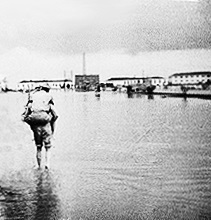 I am guessing now, but at the end of the day on the Friday that the baseball team left Corpus, the officers of Project X discovered all students had received "ups" on their check ride except one. It hit the proverbial fan when they found that Doll had been ready for his check ride and wasn't even in the area. This meant that they could not close down the Project until all students had finished. Some one pulled some strings and they sent a plane to San Antonio for the sole purpose of bringing Doll back to NAS Rodd to take his check ride. They had to wait till I finished pitching my game on Sunday afternoon before we could return to Corpus. Students lived on Mainside NAS Corpus Christi and bussed to the outlying fields for our flight lessons. One half of our working day was spent in ground school and the other half flying. It certainly was a lonely ride in that huge bus with just myself and the driver as we went to NAS Rodd that Monday the 9th of June 1947. What a strange feeling it was when we got to NAS Rodd. There was hardly anyone around and was so quiet. No hustle and bustle as it had been each working day. Met my instructor check pilot, LT Moore, for my check ride, listed as B-15x in the syllabus. And there I was, THE LAST STUDENT TO FLY THE N2S. I think it was the worst hop I ever had. Had to "clear" the engine repeatedly in order to make it over the fence for my small field approaches, missed my "s" turns to a circle or had to slipped the plane in to hit them, wingovers were lousy, and on and on. I knew I had gotten my first "down" check ride. Standing in the hanger after the flight, LT Moore reviewed all the things I had done wrong. I wasn't feeling too good about the situation either. I was in shock when he said, "This has been the worst check ride I have ever had and if it weren't for the fact that you are the last student in the program, you would receive a down, but, against my better judgement, I will give you an UP."
I am guessing now, but at the end of the day on the Friday that the baseball team left Corpus, the officers of Project X discovered all students had received "ups" on their check ride except one. It hit the proverbial fan when they found that Doll had been ready for his check ride and wasn't even in the area. This meant that they could not close down the Project until all students had finished. Some one pulled some strings and they sent a plane to San Antonio for the sole purpose of bringing Doll back to NAS Rodd to take his check ride. They had to wait till I finished pitching my game on Sunday afternoon before we could return to Corpus. Students lived on Mainside NAS Corpus Christi and bussed to the outlying fields for our flight lessons. One half of our working day was spent in ground school and the other half flying. It certainly was a lonely ride in that huge bus with just myself and the driver as we went to NAS Rodd that Monday the 9th of June 1947. What a strange feeling it was when we got to NAS Rodd. There was hardly anyone around and was so quiet. No hustle and bustle as it had been each working day. Met my instructor check pilot, LT Moore, for my check ride, listed as B-15x in the syllabus. And there I was, THE LAST STUDENT TO FLY THE N2S. I think it was the worst hop I ever had. Had to "clear" the engine repeatedly in order to make it over the fence for my small field approaches, missed my "s" turns to a circle or had to slipped the plane in to hit them, wingovers were lousy, and on and on. I knew I had gotten my first "down" check ride. Standing in the hanger after the flight, LT Moore reviewed all the things I had done wrong. I wasn't feeling too good about the situation either. I was in shock when he said, "This has been the worst check ride I have ever had and if it weren't for the fact that you are the last student in the program, you would receive a down, but, against my better judgement, I will give you an UP."
And there I was FLYING THE SNJ
VT-2A NAIFS
NAAS Cabaniss Field, Corpus Christi, Texas
30 June 1947- 13 October 1947
CHAPTER TEN
It was several weeks before I was flying again. Met my new instructor, LT R. E. Collins on 2 July and even though it is listed as a demo hop, he gave me the stick And there I was FLYING THE SNJ. Basic Stage "N” was all dual and titled "the familiarization stage". This was for 15 flights witt a way to both shorten the program and still have skilled pilots or, in other words, eliminate the N2S from the program and start classes directly in the SNJ. By the luck of the draw or whatever, I started shorein the Stearman whilein others started in the SNJ at the same time. It became obvious, in a short time, that the students were having no trouble with the SNJ program. The word got around that we, in the Project X program, would be the last class to fly the h a check ride at 11 and 14 and the 15th being solo.
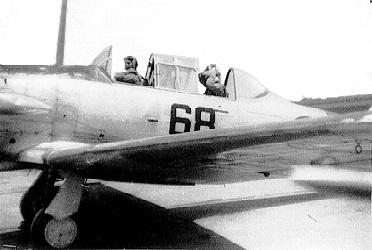
Basic Stage "B" is combination dual and solo where the student is shown how to do the various and necessary maneuvers and then hp class=Yellow Perile practices them alone. Some of the maneuvers, which are graded by the instructor, are as follows: taxiing, takeoffs, stalls, slow flying, spins, vertical turns, chandelles, x-wind takeoffs and landings, wingovers, lazy 8s, steep turns, spirals, small fields, emergencies, landings and basic airwork. Stage "B" consisted of 17 hops with number 17 the check ride. Of the 17, 10 were solo.
Basic Stage "C" is classified as acrobatics and is both dual and solo. After my 5th hop, my instructor was changed to LT J. McCabe. Maneuvers graded in this stage were: takeoffs, basic air work, progressive spins, small field procedures and landings, wingovers, chandelles, stalls, precision spins, high speed reversals, loops, Immelmans, barrel rolls, wingover with R.O.T., emergencies, power approach to precision landings, slow rolls, x-wind takeoffs and landings, lazy 8's, slow flight, steep turns and landings. Basic Stage "C" consisted of 18 hops with 12 being solo.
Basic Stage "D" is Instruments and Radio with a different instructor – LT W. M. Crapo. The instrument curriculum included the following: Instrument Take Offs, steep turns, climbs, descents, straight and level, turns, patterns – A, B, C and 0, partial panel with unusual attitude, and practical problems. The radio phase consisted of. recognition of signals, beam interception, initial approach – HC (High Cone), course out, procedure turns, final approach, low cone, over field with tower contact.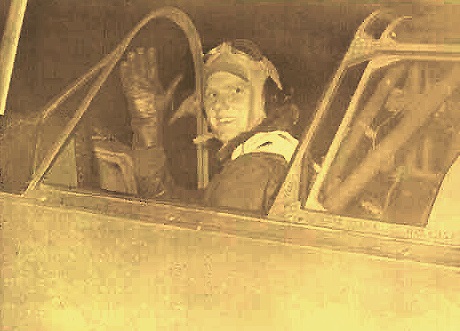
Stage "E" was night flying. two flights with the instructor followed by two flights solo. I never had any trouble landing at night as some people did. I made all my night approaches and landings just like I did in daylight. This was against standard procedures but I just wasn't comfortable setting up a rate of descent and waiting for impact. I would rather grease it on with the normal 3-point stall.
Safety is everyone's concern who flies. If someone thinks something will prevent an accident, then it is issued as a mandatory directive or order. Such an order was issued for all the wrong reasons. I don't know how extensive the order was, but I know that everyone I knew in the command had to comply with wearing rubber bands around the cuffs of the sleeves of our khaki flight suits. The reason for doing so was logical but the reason was based upon a lie. Rumor went around that one of the students wanted to try out parachuting, so one day while on an acrobatic hop with an instructor and while inverted during a maneuver, he released his safety harness by pulling up on the "handle" of the locking mechanism thereby getting rid of the only thing holding him in the airplane. The SNJ has an antenna wire running from a stanchion in front of the cockpit to the top of the vertical stabilizer or tail. The exiting student hit this wire with his shoulder, cutting himself slightly. Of course, this was treated as an accident and written up accordingly with the reason it occurred being the student had reached for something and his sleeve had caught on the lever and released his safety harness. Solution, so it wouldn't happen again, being to have all personnel wear rubber bands around the cuffs of their sleeves. We weren't too happy with that solution, since we knew what propagated it, but we didn't want to give away our fellow student, so we quietly complied – for a while.
Corpus and vicinity was an interesting and beautiful area including Padre Island, Buccaneer Day, and the King Ranch where barbecues were held regularly for the naval personnel from the base. Summertime in Corpus, without air conditioning, feels like hell on earth. We all looked forward to our time in the air for this was a way to cool off during duty hours. The heat is so bad that none of the baseball games played at Corpus were played in the daytime – all at night. There seemed to always be a "sea" breeze after the sun went down, which cooled things off considerably.
The baseball team played a game in McAllen, Texas one weekend. McAllen is a small town, south of Corpus and right on the border with Mexico. The ball diamond where we played had no grass in the infield which, with the temperature at 110 degrees Fahrenheit, felt like you were in an oven. I started pitching that game and lasted until the sixth when I got dizzy and couldn't go on any further. I didn't feel bad about giving up because our catcher, of Mexican extraction, passed out in the third. Course, all that gear a catcher had to wear didn't help matters one iota. Everyone on the team would remove as much clothing as possible and still be "decent” when we were at bat and pour water all over our bodies trying to stay cool. I don't think any of us had ever played under such difficult conditions. We got soundly beaten that day but told them, "Just wait until we get you at Corpus for our night games." Didn't matter. They clobbered us again. I think they were a professional team. They sure played like they were.
One nice thing about playing on the team representing the base, whether it is baseball, football or basketball, were the training meals. About 3 hours before a game, we got a special meal in the enlisted men's mess hall. This meal usually consisted of steak, potatoes, another vegetable, bread or rolls, butter, salad, tea, coffee or Kool-Ade and maybe a desert. Following the game we got another meal. This one was more like soup and sandwiches, gallons of ice cold milk, cake and/or ice cream. Since we played our baseball games at night here in Texas, this meal was somewhere around 22 to 2300. This seemed to be the norm throughout the services, for no matter whether we were playing on Navy, Army, Air Force or Marine bases, we still got the meals. I never could go to sleep right away after I pitched, whether it was because I was still hyped up or because my arm ached, I don't remember. Probably, a little of both. So, I would take a blanket outside and go down to the waters edge, lay down and enjoy the evening breeze and gaze at the stars. This was before pollution of the air and the author of the song was certainly right, for the stars at night, are big and bright, deep in the heart of Texas.
Some may say this was cruelty to birds but it didn't seem to bother them in the long run. After the evening meal, and nothing important to do for an hour or so, we would feed the sea gulls. There always seemed to be a flock of them down on the sea plane ramps, and always hungry. We would bring lots of bread from the mess hall, roll it up into balls, toss them into the air and watch the gulls grab them before they would even start dropping. That was interesting but the fun was watching them head for the water when they realized the bread was concealing, pepper, hot sauce, mustard or any like substance we could find. They never caught on but just came back for more.
Looking back at those days, we were actually living at a country club. I don't know what else you would call it when your leisure time was filled with swimming, tennis, golf, boating, hand ball, gymnasium, weight lifting, movies, bowling, snack bars and all of it free, except the snack bars, and all within walking distance of your living space. It had to be within walking distance because we were not allowed to have cars or be married. Those two have nothing to do with each other; they were just the rules, All bases had a regular bus service that would transport you around the base if you were too lazy to walk or if it was too far to where you were going. Some bases were compact and some were spread out. As the saying goes, "You don't appreciate what you've got 'til it's gone".
Living in the barracks was always a challenge. A challenge to see who was smarter, the cockroaches and mice or us'ens. Overall, I think we lost. Texas cockroaches are probably the opposite of what you would imagine if you weren't from Texas. In Ohio, we had "water bugs" in our basements, which may have been an unobtrusive name for cockroaches. These were large, dark brown to black and didn't move very fast. Texas cockroaches were rather small (about ½ inch long) but very fast and flew a lot. We would open our wall medicine cabinet and these buggers would come flying out at you. You soon learned to open the cabinet and stand back 'til everything settled down. I can certainly believe that these critters had survived from the beginning of time for we would catch several in a glass jar, put in some cockroach killer powder and watch them die. The only problem that we saw with the poison was that the cockroaches not only didn't die, but they seemed to thrive on the stuff. Resolved ourselves to the fact that we would have to live together so we just got used to their living habits. We may have outsmarted the mice though. Most of us would keep snacks in our bureau drawers for those times at night that we might get hungry. The same night you put candy, crackers or such in the drawer, if you couldn't sleep, you would hear the paper crackle, jump out of bed, pull the light string of the ceiling light, open the drawer always too late to catch the varmint, but there would be your snack with the comer of the paper tom or, more correctly, chewed off and a portion of the goodie missing. I think we got the better of the mice when we started tying the candy to the light string. The mice would have to walk across the ceiling to the light and down the string before they could reach the sweets. The only trouble with that method was the cockroaches. That didn't stop them. I finally gave up and went hungry.
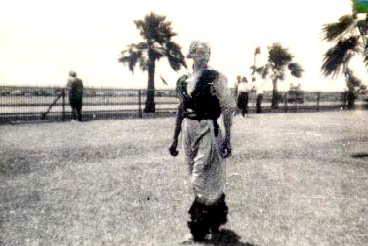 I had relatives in Houston, an aunt Carrie, my father's sister, and her husband, uncle Fain. They had invited a friend and me over for a visit any weekend we chose. Whit and I finally had a weekend free so I contacted them with the news and, much to my pleasant surprise, said that they would fix up dates for us. We were rather skeptical at that suggestion since my aunt and uncle had no children and we had no idea what their tastes in young girls might be. We went anyway, or rather, we started towards Houston early one Saturday morning. Our method of travel was via thumbs. We bused to the edge of town and started hitchhiking. Since we were in uniform, we didn't think we would have any trouble getting rides. We got our first ride right away. Two elderly ladies picked us up in what could have been a Maxwell. We should have turned this ride down, but we didn't. At least we were smart enough to ask how far they were going. They said about 20 miles. We asked if that would be a good spot to catch another ride. Oh yes, they assured us. This is a busy intersection of two roads. Well, their idea of busy intersection differs from ours by a wide margin. This "intersection" was a dirt road leading, goodness only knows where, in one direction. Texas has some great highways. Wide, two lanes with smooth surface, straight as an arrow and just made for speed. And that is exactly what they did. The cars would whip by us going 90 miles an hour, or so it seemed. And there weren't many, even at that. There was such a long time between cars that we would lay down on the highway and almost go to sleep. Even after we could hear or barely see a car coming, it seemed like ages before it got to us. Hours went by and we had not moved from that spot. We became worried that we might have to spend the night there and that the rattlesnakes would want to share the warmth of the highway with us. We became so desperate that we were ready to stand in the middle of the highway and make a car stop – or so we hoped. About mid- afternoon, we got the opportunity to do just that. We saw a dust cloud coming towards us down this old dirt road. We didn't care where he was going; we were going to be on board. This was an old Ford pickup truck. It may have had chain drive it was so old. Definitely, it was pre-war and I am not sure which war. He agreed to take us to the next town where he thought there was a Greyhound Bus station. He was correct so we bought tickets to Houston. Don't remember how long we waited for the bus but we did get to Houston about 2030. My Aunt and Uncle picked us up, took us to their cottage and fixed us something to eat and drink. Thought we had better call our dates and explain what happened. Called my date and she said that she had given up on us and had gone to bed. After all, it was after 11 PM. Then we called Whit's date and she was ready to party. Said she would call her friend for me. Borrowed my uncle's car to pick up our dates and went to the house party we were supposed to have been to hours earlier. To me, this house was a mansion. I just wasn't used to associating with the rich and famous. Maybe not famous, but certainly rich. We really had a good time. I had never seen so many beautiful girls in one place in my life. Usually, there may be a couple of beauties in a group of friends but never where anyone could win a beauty contest. Everyone there was a knock out. Got back to my Aunt's home around 3 or 4 in the morning and collapsed on the "beds" she had fixed for us on the floor of the living room since theirs' was a one bedroom house. They woke us Sunday morning with Bloody Marys. I think they were alcoholics. Later that day, we got on a bus and returned to Corpus. No more hitchhiking in Texas for us. Never saw Joanne Youngblood again but we did correspond for a while. I always wonder what happens to those I meet along life's path. Must admit, I don't do anything to find out, just wonder.
I had relatives in Houston, an aunt Carrie, my father's sister, and her husband, uncle Fain. They had invited a friend and me over for a visit any weekend we chose. Whit and I finally had a weekend free so I contacted them with the news and, much to my pleasant surprise, said that they would fix up dates for us. We were rather skeptical at that suggestion since my aunt and uncle had no children and we had no idea what their tastes in young girls might be. We went anyway, or rather, we started towards Houston early one Saturday morning. Our method of travel was via thumbs. We bused to the edge of town and started hitchhiking. Since we were in uniform, we didn't think we would have any trouble getting rides. We got our first ride right away. Two elderly ladies picked us up in what could have been a Maxwell. We should have turned this ride down, but we didn't. At least we were smart enough to ask how far they were going. They said about 20 miles. We asked if that would be a good spot to catch another ride. Oh yes, they assured us. This is a busy intersection of two roads. Well, their idea of busy intersection differs from ours by a wide margin. This "intersection" was a dirt road leading, goodness only knows where, in one direction. Texas has some great highways. Wide, two lanes with smooth surface, straight as an arrow and just made for speed. And that is exactly what they did. The cars would whip by us going 90 miles an hour, or so it seemed. And there weren't many, even at that. There was such a long time between cars that we would lay down on the highway and almost go to sleep. Even after we could hear or barely see a car coming, it seemed like ages before it got to us. Hours went by and we had not moved from that spot. We became worried that we might have to spend the night there and that the rattlesnakes would want to share the warmth of the highway with us. We became so desperate that we were ready to stand in the middle of the highway and make a car stop – or so we hoped. About mid- afternoon, we got the opportunity to do just that. We saw a dust cloud coming towards us down this old dirt road. We didn't care where he was going; we were going to be on board. This was an old Ford pickup truck. It may have had chain drive it was so old. Definitely, it was pre-war and I am not sure which war. He agreed to take us to the next town where he thought there was a Greyhound Bus station. He was correct so we bought tickets to Houston. Don't remember how long we waited for the bus but we did get to Houston about 2030. My Aunt and Uncle picked us up, took us to their cottage and fixed us something to eat and drink. Thought we had better call our dates and explain what happened. Called my date and she said that she had given up on us and had gone to bed. After all, it was after 11 PM. Then we called Whit's date and she was ready to party. Said she would call her friend for me. Borrowed my uncle's car to pick up our dates and went to the house party we were supposed to have been to hours earlier. To me, this house was a mansion. I just wasn't used to associating with the rich and famous. Maybe not famous, but certainly rich. We really had a good time. I had never seen so many beautiful girls in one place in my life. Usually, there may be a couple of beauties in a group of friends but never where anyone could win a beauty contest. Everyone there was a knock out. Got back to my Aunt's home around 3 or 4 in the morning and collapsed on the "beds" she had fixed for us on the floor of the living room since theirs' was a one bedroom house. They woke us Sunday morning with Bloody Marys. I think they were alcoholics. Later that day, we got on a bus and returned to Corpus. No more hitchhiking in Texas for us. Never saw Joanne Youngblood again but we did correspond for a while. I always wonder what happens to those I meet along life's path. Must admit, I don't do anything to find out, just wonder.
I have never been associated with such brilliant and talented fellows before or after my time in the training command, The Navy had their Dilbert long before the one that is presently in the comics. Our Dilbert was created to help us learn our jobs by showing what not to do in a humorous way. Dilbert was a klutz and did everything the wrong way. Another teaching tool was Grandpaw Pettibone, created and drawn by Osborne and continues to appear in the U.S. Navy Aviation News (NavAirNews) but is now being drawn by Ted Wilbur. I can't speak for others but those cartoon characters and their lessons stayed with me to this day. This seems like a long round about way to relate one of my most unforgettable characters. Jack "Blacky" Sugrue. His sketching and drawing talent was, without a doubt, the greatest I have ever seen. In high school, he was doing portraits of such quality that people would pay him for his skill and he had to turn a lot down. He just didn't have the time to do them all. In the Navy Flight Program, he turned his talents to sketching our trials and tribulations in cartoon form. He could draw our planes in detail, from any angle, very quickly and all from memory. One that I still remember was a student solo in an SNJ, the SNJ to normal scale and detail but the pilot's head sticking out of the cockpit considerably larger than the scale of the plane, listening to Alice radio and giant tears spraying the air. Rather than a diary, he recorded our progress through the program with his cartoons. I lost all my Year Books somewhere along life's way so l can't say which ones his drawings were featured in from what station. 10-4 from Corpus was one I am almost certain was filled with drawings by Sugrue. (10-4 was a very appropriate name for a book record of your stay at a station for it meant 10 demerits and 4 hours marching, which befell on many students, yours truly included. The worst hours marching that I had were with a parachute banging on my legs as I marched. It doesn't take long and it starts hitting bare skin. takes a while for the raw areas to heal and the scabs to fall off.) He was a lover of boxing and a lot of his sketches depicted this sport. Don't believe he stayed in the program but returned to his home in Forrest Hills N.Y. and worked for one of the National TV stations. He worked his way up and I saw one show he had the credits for. It was terrible. I can only guess that he didn't have full authority in producing the show. He picked me up and took me back to the airport when I was on Long Island for Ward Whitten's wedding. I thought we would be late for my flight out but he said not to worry as he speeded to the airport, took me in the back way by flashing his ID and stating "TV film pick up" and they waved us on through right up to the ramp. Never had it so easy getting to and on a commercial plane before or since.
And there I was AT NAAS SAUFLEY FIELD
BTU-3, Pensacola, Florida
23 October 1947 – 10 February 1948
CHAPTER ELEVEN
Along with Midshipmen George R. BONNER, Jr., Allen M. BOSWORTH, III, Ralph FOSTER, Jr, Donald H. HOWARD, Francis W. JOYCE, Joseph L. KAIN, William D. Morse, James R. PETERSON, and Ward B. WHITTEN on orders dated 17 October, 1947, we proceeded to NATB Pensacola via Government Air with reimbursement for travel on a per diem basis in accordance with paragraph 6001 of Navy Travel Instructions. (Whatever that was) Every set of orders we got had the following paragraph included: "The records of the Bureau indicate that you are under contract to serve on active duty as Midshipman until completion of two years of flight duty or until you are separated from the aeronautical." Seems like they didn't want us to forget it.
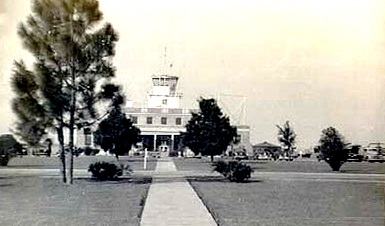 Before we went to Saufley field to live, we had to go through an indoctrination week at NAS Pensacola. First came a number of lectures on a number of subjects that were related to our program and survival. Then we had another very thorough physical exam. The next day we had a tour through the survival building. A lot of time, effort and talent were put in making up the displays. Several are as follows: a life raft completely set up with life size manikins adrift at sea (all the scenes used manikins suitably dressed for the depicted activity and for additional realism, stuffed animals in snares); a jungle scene using live plants; Arctic scenes below and above the timber line; and one half of a PBY showing the escape hatches, correct use of the oxygen and the first aid equipment. Next came another Dilbert only this one was a diabolical contraption designed and engineered to put fear in the minds of flight students. The full name was "The Dilbert Dunker". This consisted of a mock up of a fighter plane cockpit, mounted on rails leading into the pool at about a 60-degree angle from the horizontal and about 20 feet in length. This is to teach a pilot how to get out of a plane after a water landing and the plane sinking. A person is strapped in just as he would be under actual conditions, fitted with a parachute, which acts as a seat cushion in the plane. In this case, instead of the chute being packed with the silk, it was
Before we went to Saufley field to live, we had to go through an indoctrination week at NAS Pensacola. First came a number of lectures on a number of subjects that were related to our program and survival. Then we had another very thorough physical exam. The next day we had a tour through the survival building. A lot of time, effort and talent were put in making up the displays. Several are as follows: a life raft completely set up with life size manikins adrift at sea (all the scenes used manikins suitably dressed for the depicted activity and for additional realism, stuffed animals in snares); a jungle scene using live plants; Arctic scenes below and above the timber line; and one half of a PBY showing the escape hatches, correct use of the oxygen and the first aid equipment. Next came another Dilbert only this one was a diabolical contraption designed and engineered to put fear in the minds of flight students. The full name was "The Dilbert Dunker". This consisted of a mock up of a fighter plane cockpit, mounted on rails leading into the pool at about a 60-degree angle from the horizontal and about 20 feet in length. This is to teach a pilot how to get out of a plane after a water landing and the plane sinking. A person is strapped in just as he would be under actual conditions, fitted with a parachute, which acts as a seat cushion in the plane. In this case, instead of the chute being packed with the silk, it was 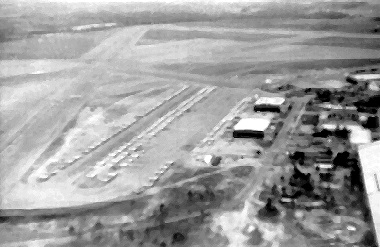 filled with wood to give it the necessary bulk. When I was all strapped in and my shoulder harness snugged up real tight, I gave the signal that I was ready by a nod of my head, the catch was sprung and I plummeted towards the water. Upon contact with the water, the Dunker flips you upside down and you continue to sink towards the bottom of the deep end of the pool, the cockpit still riding the rails. To keep from drowning, you have taken a huge gulp of air just before going under then, when the pressure has neutralized, you release your restraining harness, grab the upper part of the windshield, pull yourself straight down and out of the cockpit without kicking and ascend to the surface. The trouble I had may have been due to the wood in the parachute wanting to float up before I was ready to. I wondered why the Navy became so kind that they put in wood instead of lead. I also think I started kicking before I should have because I left all the skin from my shins on the edge of the canopy as I started up before clearing the cockpit. As a safety feature, the Navy had divers under the water in case anyone needed assistance in exiting the cockpit. The next day was the low-pressure chamber, which simulates high altitude. We donned our oxygen masks as we entered and were on oxygen until we were at 30,000 feet pressure altitude. After we reached this altitude, volunteers removed their masks and performed various tasks. One was writing your name over and over again. Another was putting cards in
filled with wood to give it the necessary bulk. When I was all strapped in and my shoulder harness snugged up real tight, I gave the signal that I was ready by a nod of my head, the catch was sprung and I plummeted towards the water. Upon contact with the water, the Dunker flips you upside down and you continue to sink towards the bottom of the deep end of the pool, the cockpit still riding the rails. To keep from drowning, you have taken a huge gulp of air just before going under then, when the pressure has neutralized, you release your restraining harness, grab the upper part of the windshield, pull yourself straight down and out of the cockpit without kicking and ascend to the surface. The trouble I had may have been due to the wood in the parachute wanting to float up before I was ready to. I wondered why the Navy became so kind that they put in wood instead of lead. I also think I started kicking before I should have because I left all the skin from my shins on the edge of the canopy as I started up before clearing the cockpit. As a safety feature, the Navy had divers under the water in case anyone needed assistance in exiting the cockpit. The next day was the low-pressure chamber, which simulates high altitude. We donned our oxygen masks as we entered and were on oxygen until we were at 30,000 feet pressure altitude. After we reached this altitude, volunteers removed their masks and performed various tasks. One was writing your name over and over again. Another was putting cards in 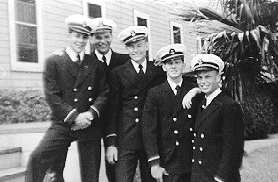 designated slots like all hearts in the heart slot and so on. Another was reciting nursery rhymes. At that altitude, without oxygen, a person will pass out in I½ to 3 minutes. The face is flush then slowly turning blue as do the cuticle of the fingernails and the lips. Shortly thereafter, the eyes become bloodshot and your physical reactions become ridiculous. Before you completely pass out, the medical corpsmen slap the oxygen mask back on you. At that stage, you don't have enough sense to do this yourself. Each of those persons doing the various tasks would swear they knew exactly what they were doing at all times. The only thing wrong with that was the person writing his name was scribbling up and down, the card sorter had cards all over the floor and not in the slots, and the nursery rhymes became gibberish. This was a very graphic way to prove to you that you think you know what you are doing, but don't. A very fatal situation. Coming "back down" from altitude can be very difficult for some. You can't equalize the pressure in your ears (clearing them) by just swallowing and you feel the pressure on the sinuses. One student almost passed out from the pain caused by these two problems.
designated slots like all hearts in the heart slot and so on. Another was reciting nursery rhymes. At that altitude, without oxygen, a person will pass out in I½ to 3 minutes. The face is flush then slowly turning blue as do the cuticle of the fingernails and the lips. Shortly thereafter, the eyes become bloodshot and your physical reactions become ridiculous. Before you completely pass out, the medical corpsmen slap the oxygen mask back on you. At that stage, you don't have enough sense to do this yourself. Each of those persons doing the various tasks would swear they knew exactly what they were doing at all times. The only thing wrong with that was the person writing his name was scribbling up and down, the card sorter had cards all over the floor and not in the slots, and the nursery rhymes became gibberish. This was a very graphic way to prove to you that you think you know what you are doing, but don't. A very fatal situation. Coming "back down" from altitude can be very difficult for some. You can't equalize the pressure in your ears (clearing them) by just swallowing and you feel the pressure on the sinuses. One student almost passed out from the pain caused by these two problems.
The next phase of our training was getting to the good stuff. We lived and flew out of Saufley Field. Basic CV included formation flying, primary combat, navigation cross-country, more night flying, and gunnery. Loved formation flying. As is the case before each and every hop, there is a complete and thorough briefing going over everything we were going to do on that hop including emergency procedures. Following take-off, we would rendezvous at a pre-determined location as defined by a prominent ground object or place. When done properly, it is an easy maneuver. There have been quite a few mid-air collisions when done improperly. I think the biggest mistake that is made is coming in too fast and throwing a wing up to stop the approach. If on the inside of the turn (the leader and others in the formation are circling) the rest of the formation is in the blind spot. It takes some time to stop any motion, so the plane wants to continue on and it mushes into the other planes. Trying to stop after you have passed under the formation results in an "out-of-position" and sucked rendezvous. Knowing all of this, until we got proficient, rendezvousing took a lot of time. The proper way was to put the leader at your 45 degree position and maintaining your speed slightly more than you were briefed for the rendezvous speed, you would slowly close the circle and join up. Joining up for the two plane section tactics was easy, but the three plane division sometimes got exas-perating when the jockey ahead of you took too long and you had to wait your turn.
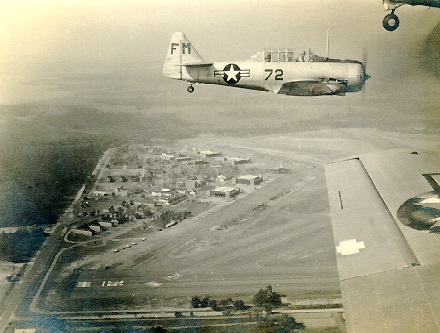
I some times joined up ahead of time and we made the rendezvous as a section. The Navy operated in the fleet as four plane divisions so we, later on, did a lot of our flying likewise. The leader had his wingman and the section leader had his wingman. The division might split up for certain maneuvers, but the wingman always stayed with his leader.
Depending upon the situation, there could be a lot of position changing. The leader's wingman was always on the opposite side of the section with the section leader's wingman on the outside of the formation. While the wingmen flew close, the section was spread out enough to allow for rapid maneuvering. For special functions, right or left echelons were used. This is when all the planes are on one side of the leader in a step down position with equal spacing between planes. These formations were used for gunnery, bombing, and field breakups for landing. Navy takes great pride in looking good over the field with the break interval being the same for all planes (prebriefed as to that time or count – one thousand one, one thousand two, etc.).
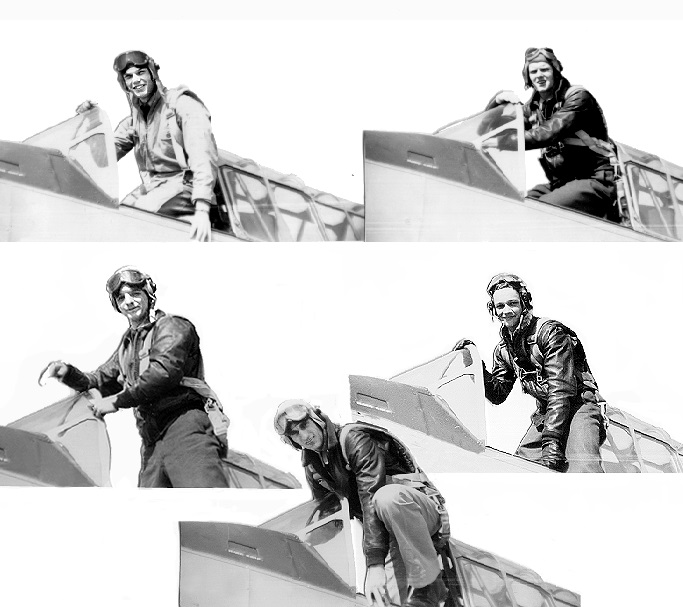
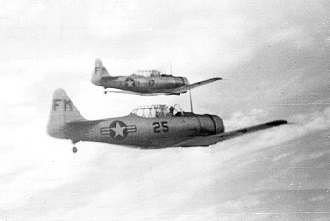
Allan Marshall Bosworth III and Ward Whitten were roommates while at Saufley Field. That, in itself is not earth shattering but, looking back upon it, the situation was rather amusing. For some reason, maybe over who was to clean the room for inspections or just normally keeping it shipshape or something else, they stopped talking to each other. This condition didn't just exist for a couple of days, or a couple of weeks but it was approaching months.
Bosworth returned from Christmas leave with a brand new dark green Plymouth Coupe. Naturally, he was quite proud of that car, keeping it immac-ulately clean and shining. One Sunday morning I was going to brunch at our mess hall and passed Bosworth's car in the parking lot. The windshields were shattered and the passenger's side post was heavily damaged. Looked him up in the mess hall and asked him what had happened? Said as he was coming up the back road to the base, a horse jumped out of the dark and hit his car. This was highly possible for at that time, Florida had open range and most areas were not fenced in. It wasn't unusual to see horses, cattle, snakes, armadillos, and pigs, etc. either crossing the road or as road kill. Bosworth was not injured but his passenger, Julian Hansen, got some glass in his eye. 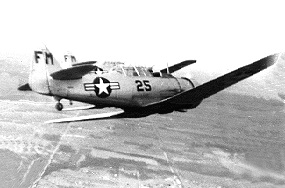 The glass was removed that night at the hospital and there was no damage to the eyeball. Well, when Whit came in, (he told me this later) he had seen the damage to the car, decided to break the silence and show his concern for Bosworth's pride and joy. When Whit inquired as to what had happened, Bos, still mad as to the accident, answered in a pissed off attitude voice, "A damn horse ran into my car". Whit thought that he was just being a smart-ass and said to himself, "If he can't give me a civil answer and wants to be that way, so be it". They didn't speak to each other again for months.
The glass was removed that night at the hospital and there was no damage to the eyeball. Well, when Whit came in, (he told me this later) he had seen the damage to the car, decided to break the silence and show his concern for Bosworth's pride and joy. When Whit inquired as to what had happened, Bos, still mad as to the accident, answered in a pissed off attitude voice, "A damn horse ran into my car". Whit thought that he was just being a smart-ass and said to himself, "If he can't give me a civil answer and wants to be that way, so be it". They didn't speak to each other again for months.
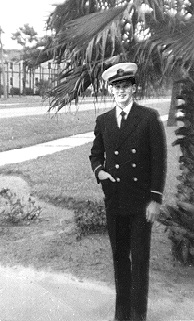
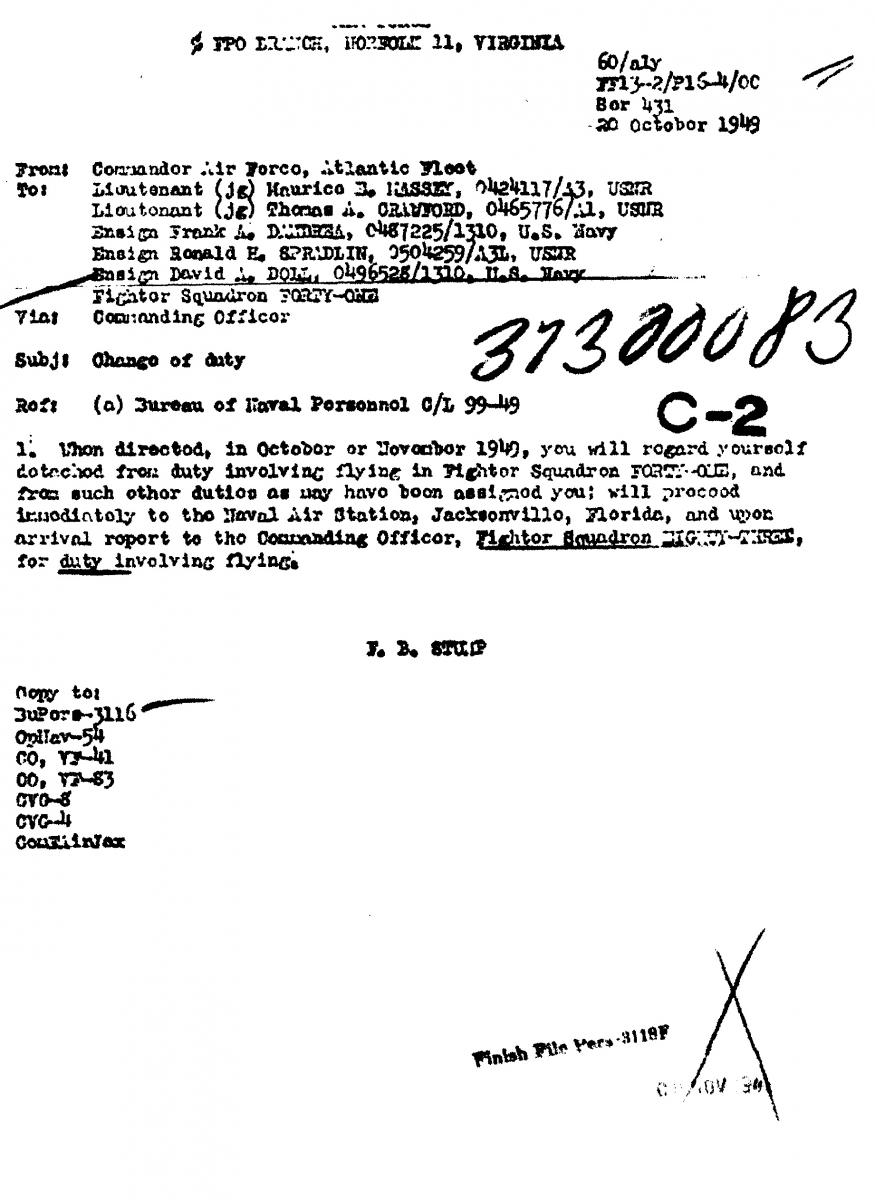
And there I was AT NAS PENSACOLA
BTU-5
27 February 1948 – 10 March 1948
CHAPTER Twelve
Following formation was primary combat, navigation, night flying and gunnery. My gunnery flight consisted of Ward Whitten, Don Howard, Allen Marshall Bosworth III, and LTjg Ed Clayton, an Annapolis grad who, having spent a year in the fleet, was accepted for flight training.
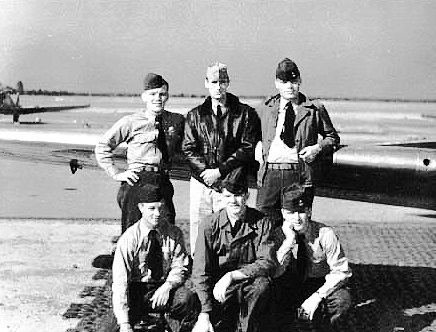 I would not have thought that our ground school was tougher than the Academy but a number of these students did, in fact, wash out of the flight program due to flunking some course in ground school. Some of the subjects we had in ground school were code, aerology, engines, instruments, survival, and the biggie – navigation. Navigation over the land is a snap compared to over the water. There aren't too many landmarks over the ocean. Included in Navigation was celestial, which required you to shoot the sun and stars with the sextant and then locate where you were based upon your readings and using the published tables. Learning to use the plotting board, which you carried with you when flying off the ship, was also an important part of the course. This would indicate where the ship was supposed to be upon your return and as long as you kept track of your own positions and the ship didn't change their plans, you should find the ship. Dead reckoning was just like it says. By plotting where you started to where you are going, using the E6B computer (a circular slide rule) and throwing in the winds' direction and force and your airspeed, you would calculate the magnetic heading to fly. If everything held constant, you would end up at your destination without using any radio or other navigational aids. Over land, you would pick out checkpoints and if you didn't hit them on the money (time and track) you would make adjustments to your D. R. calculations for the reminder of the flight. We also learned about the radio ranges and the direction finder instrument, which pointed to the radio station tuned in, whether it is navigational or a commercial station.
I would not have thought that our ground school was tougher than the Academy but a number of these students did, in fact, wash out of the flight program due to flunking some course in ground school. Some of the subjects we had in ground school were code, aerology, engines, instruments, survival, and the biggie – navigation. Navigation over the land is a snap compared to over the water. There aren't too many landmarks over the ocean. Included in Navigation was celestial, which required you to shoot the sun and stars with the sextant and then locate where you were based upon your readings and using the published tables. Learning to use the plotting board, which you carried with you when flying off the ship, was also an important part of the course. This would indicate where the ship was supposed to be upon your return and as long as you kept track of your own positions and the ship didn't change their plans, you should find the ship. Dead reckoning was just like it says. By plotting where you started to where you are going, using the E6B computer (a circular slide rule) and throwing in the winds' direction and force and your airspeed, you would calculate the magnetic heading to fly. If everything held constant, you would end up at your destination without using any radio or other navigational aids. Over land, you would pick out checkpoints and if you didn't hit them on the money (time and track) you would make adjustments to your D. R. calculations for the reminder of the flight. We also learned about the radio ranges and the direction finder instrument, which pointed to the radio station tuned in, whether it is navigational or a commercial station.
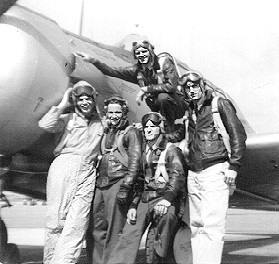
Gunnery was frustrating for me. I always thought that I was making a smooth run, ball centered, holding the proper lead on the banner, firing my guns at the correct range but I never got many h src=its. Eac src=h person in the flight had the "bullets" painted a different color. Even though it was recorded who had what colo and they waved us on through right up to the ramp. Never had it so easy getting to and on a commercial plane before or since.r, everyone made sure he knew what color was on those 50 caliber projectiles. Each time we went out, someone in the flight had to tow the banner. It may have been a Rube Goldberg arrangement but it worked. The banner was laid out on the ground about half way down a normal take off run with the tow rope running a little way in the direction of the take-off and then doubling back upon itself to where the tow plane was to start the take-off (determined by the length of the rope). The tow plane was airborne by the time he got to the end of his rope and jerked the banner off the ground. Dragging the bann/peCorpus Christi Buccaneer Days r along on the ground usually ruined it. The end of the towrope was attached to the SNJ in such a way that the pilot could pull the release level and drop the banner back on the field at the end of the hop. This didn't always work. Several times, I had to land with the banner still tied to the plane. Done properly, it wasn't hard to do. You just had to make sure you stayed high enough that the banner didn't catch on any obstacle, (like the fence around the field) maintained a safe speed and not to land until the banner was over the field. When things worked as they were designed to do, the tow pilot would bring the banner in about 100 feet or less above the ground, parallel the runway over the grass and pull the release when directed by the tower operator. If the tow pilot goofed and lost the tow by towing too fast, catching on an obstacle or something, the troops weren't happy. Those lost banners were the banners that everyone had 100 percent hits on. Gunnery practice can be very dangerous, both for the tow pilot and those making the runs. If a pilot gets sucked behind the banner and doesn't stop shooting, he could hit the tow plane. If he makes a good run and doesn't break off the run at the correct point, he could run into the banner. Each hop, our instructor would ride with one of the students and grade everyone on such things as position in the formation, starting position and initial turn in for the run, reversal turn, position when firing was started and how long it lasted (supposed to be short bursts), dive angle, deflection angle and recovery. All our gunnery was conducted over the Gulf of Mexico in designated ranges. It wasn't unusual for different flights to be in sight of each other with one following behind another. I was the tow plane with our instructor in the rear seat when we saw a mid-air collision in the flight ahead of us. As often happens, the plane causing the mid-air isn't the one damaged. The plane he hit caused extensive damage and the pilot had to bail out. The chute functioned properly and he slowly drifted towards the water. My instructor, LT Leslie, told me to drop the banner and he took control of the plane. We circled the pilot as he descended and watched as he entered the water. LT Leslie told me to keep him in sight at all times, as he was busy radioing and directing the rescue. This was the first time I had seen anyone in the water from a plane. There was a pretty good wind that day as evidenced by the white caps which made "keeping him in sight" very difficult. Lost sight of him several times and thought I never would see him again. Fortunately, he spread his dye marker and stayed within it as best he could. There was a ship in the vicinity and was there for the pick up within a short time. We found out later that the pilot had died by drowning. That incident ended that gunnery hop for the day but we returned to base and went up for another. Same arrangement. I had the tow with the instructor in the back seat. The odds of the following happening are astronomical. One of the planes in the flight just ahead of us had one wing come off as he was starting the reversal on his high side run. It hits you right in the pit of the stomach to see a plane separate in the air and a wing go fluttering away by itself. I don't know how the pilot got out of the gyrating plane but he did. He must have reacted rapidly and exited before the violent tumbling began. The parachute opened as advertised, he entered the water safely and got into his inflated raft waving to let us know that he was ok. The instructor of that flight did the circling this time but, once again, I was instructed to drop the banner and the instructor took over control of the plane. We found that there was a Destroyer not too far away so we proceeded on the heading provided until we sighted him. He must not have been up on the guard frequency because we could not raise him on the radio. We tried to get him to understand what we wanted by flying low over his ship, pointed in the direction we wanted him to go and popping the stick down and up making like a porpoise. That didn't work so LT Leslie wrote a message, enclosed it in the weighted container attached to a streamer, and dropped it on the destroyer. When the skipper of the destroyer finally "got the message" and understood, he called for full steam ahead and that baby settled at the stem and left such a wake that he looked like a speedboat. This pilot was picked up in good shape and was making the best of a bad situation by eating the rations stowed aboard and had a line in the water to see if he could catch any fish. Both pilots who balled out were Cubans. One lived and one didn't. We later learned that the Navy had installed "experimental" wings on some of the Js. After the wing departure, the Navy, not always known to act wisely, in this case did, by removing all such planes from service until the wings could be replaced with the original designed ones.
To become proficient in any endeavor, practice makes perfect, or so the saying goes, and should be on a steady and regular basis. Flying out of Pensacola in the wintertime is anything but regular. Rain, low clouds, and fog that would hang around for days. It was so bad that the sea gulls were walking. The half day that you were scheduled for flying was set aside just for that and if you didn't fly, you just sat around in the ready room killing time. That is when and where I learned to play Acey Duecy, bridge and worked on a thousand cross- word puzzles. Bridge was a real puzzler for me. I watched game after game, asking a million questions and still was confused. Finally, they were a player short one day and out of desperation, asked me to be the fourth. I still felt like the fifth but I guess you have to get your feet wet someday. My partner got a little perturbed at times, but he realized the situation and helped me learn the game. Now, to me, there is no card game that even compares to its intricacies.
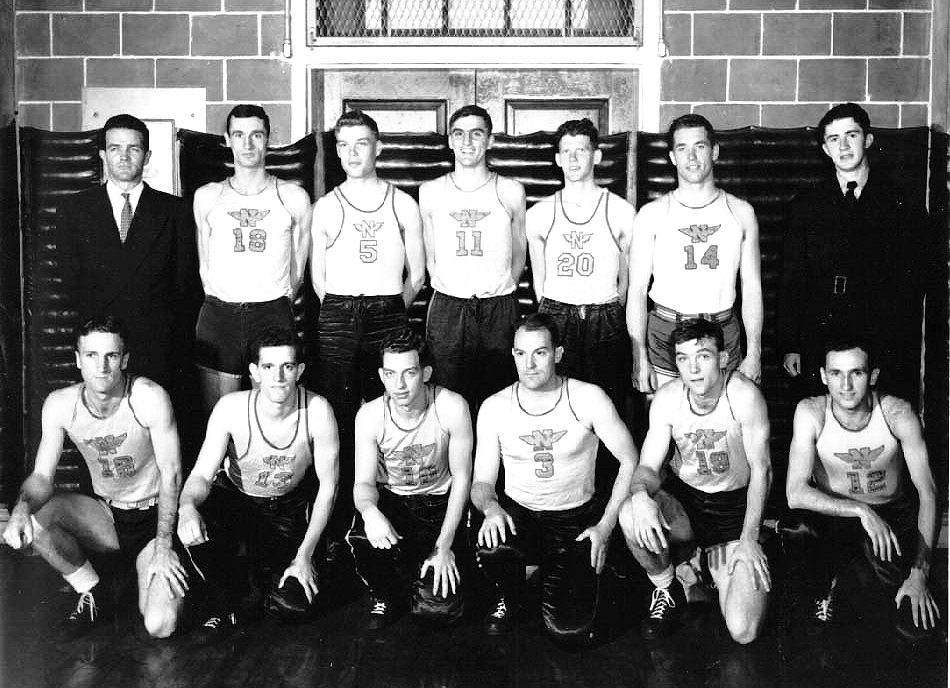
While it was during the baseball season that we were at Corpus, it was the basketball season at Pensacola. I would recommend to anyone entering the service, to get on the varsity or the station team. It wasn't known as perks then, but it was a good deal. No watches, no extra duty, special meals and frequent trips at the government’s expense. The down side might be that it took us longer to complete the syllabus.
While Whitten, Clayton and myself, started in the gunnery flight previously mentioned, we kept slipping back and flying catch as catch can. The scheduling officer made a mistake when he scheduled Whitten and myself for make up solo night flying. Formation night flying was not in the syllabus but Whit and I decided to do it anyway. Following take-off, I joined up on Whit's wing for whatever he had in mind. We did a few climbs, turns, descents but nothing drastic. We finally ended up circling the paper mill to kill the time until we had to return to base. The mill was north of the station and was easily visible that clear night with a full moon. I wanted to show Whit what a great pilot I was so I was working up a sweat staying exactly in position. My concentration was intense with constant rudder, stick and throttle movements necessary to maintain a tight formation. It was immediately following one of my slight retraction of the throttle that I almost had a heart attack when a loud klaxon horn went off in my ear. I didn't know what was going on for several seconds as my heart raced faster than it ever had before, until I realized what that so-‘n-so Whitten had done to me. There is a safety feature built into the SNJ to prevent wheels up landings. If a pilot forgets to put his wheels down for landing, the klaxon horn sounds when he cuts the throttle, hopefully, allowing the pilot enough time to add power and go around and do it right. Whitten had been slowly reducing our power requirements as we circled the paper mill until I, being on the inside of his turn and normally requiring less power, pulled the throttle back far enough to set off the horn. When I settled down, I had to laugh at the episode and appreciate how subtle and patient he had been to work the "trick". Not only didn't I realize he was reducing the power but also how much I had to retrim the plane as it slowed. The rest of the flight was anticlimactic.
And there I was CARRIER QUALIFIED
CQTU-4-NAAS SAUFLEY FIELD
NATB PENSACOLA, FLORIDA
10 February 1948 – 26 February 1948
CHAPTER THIRTEEN
The last phase in the SNJ program was, to me, the most exciting. We were not only allowed to fly low and slow, but we had to. This is what Navy flying hinged upon. Landing and taking off from a carrier. But first, we had to practice. We had a series of hops, which simulated, as best as possible, landing on the carrier. These were called Field Carrier Landing Practice or FCLP. The outlines of a ship were laid out on the runway of an outlying field with the required landing area delineated. If you landed within this area, it was assumed that under actual conditions, you would catch a wire. The instructor in this phase was also our LSO (Landing Signal Officer) when we went aboard ship. The reason for this was logical. Who better to know the individual idiosyncrasies of each pilot than one who had taught them during FCLP? Our LSO was LT Whitehouse.
This program starts with a short hop lasting about 15 minutes with an instructor demonstrating slow flight. Following the demo, each student went solo to practice. There was a very strong wind at altitude that day and I was blown quite a ways north of the base as I was flying with my wheels and flaps down. Since the visibility wasn't too good, I decided I had better head south and get back over the station so I lined up with a road that went that way. I was indicating 60 knots and checked my position on the ground, noticing that I was over a crossroad. Flew about 5 minutes and looked down and there was the same crossroad. Hadn't moved a foot. So I slowed up even more and sure enough, I started flying backwards. I thought this was great. Never got that opportunity again.
The next demo hop lasted about 30 minutes and showed how a FCLP flight should be done. From then on, it was all solo with a total of 14 hops before we were declared ready for the Carrier.
The big day was on the 26th of February 1948 aboard the USS Wright (CVL-49), a small carrier, a very small carrier or so it seemed. Looking up at the ship as we walked up the dock to the gangplank, it appeared that the wings of the SNJs that were aboard, extended over the sides of the flight deck. When all the students scheduled for carrier qualification that day were on board, the ship put to sea.
There was room for only six to eight planes on the flight deck because the SNJ was not designed to operate from a carrier, therefore, the wings didn't fold and the hook was Jerry rigged. I don't know exactly how it was attached to the plane but the SNJ was NOT designed to land on a carrier so it had to be something someone added later. Because it was later, the method to raise and lower the hook was also an afterthought. The method on the planes we flew was all manual. To hold the hook "up", it was attached to a rope and the rope was wrapped around the pilot's armrest. To lower the hook, the pilot unwound the rope and tossed it out of the plane. Landings and take offs in prop planes were always with the canopy open. This allowed for rapid exit of the plane if you had to go into the water on take off and allowed the pilot to stick his head out to see the LSO when making his landing approach. Any more planes and there would not have been enough space and clear distance for deck run takeoffs. I was in one of the first groups to fly. They simulated the operations of fleet squadrons by having us wait in the ready room for flight ops and then having us scramble to our assigned plane when the word was passed over the intercom, "Pilots, man your planes." While I was quite excited on the takeoff (you pray that you have enough flying speed by the time you reach the end of the flight deck), I was pleasantly surprised to find that I was actually airborne before I reached that point. After the first trap, I was calm for the remaining five. Because a plane making a water landing with the wheels down would flip over on contact with the water, planes leaving a carrier will raise their wheels as soon as they can. As soon as you leave the deck and you have sufficient speed, you jog to the right in order to clear the deck of your slipstream so that it won't interfere with the next takeoff. After flying straight ahead for several minutes along the direction of the carrier and climbing to about 150 feet, you start a standard rate turn to the opposite heading resulting in the landing pattern around the ship in the shape of a racetrack. I said about 150 feet because your altitude will vary based upon the size of the carrier. To establish the correct altitude above the water, you position the top of the island on the horizon while your standard rate turn established the correct distance out for the downwind leg. On the downwind leg, you start slowing down, dropping your hook and flaps and constantly retriming for hands-off flying. Under normal wind conditions, at the position opposite the island, you drop the wheels and adjust the throttle for approach speed. When the barber poles indicate that the wheels are down and locked, you call this fact out when you reach the spot opposite the stern of the ship along with your plane’s side number. It might sound something like this. “104 turning base, wheels down and locked." Even though the spotter at the area of the LSO can see that your hook is down through the binoculars, he can also see that your wheels are down but only the pilot can see the instruments indicating the wheels are locked. By the time you reach the 90-degree position, you should be at your landing speed, in a three-point attitude and "hanging on the prop" and flying 5 knots above stall speed. At this point, you visually pick up the LSO and follow his signals the rest of the way to the landing.
You must still be in control of the plane and doing the flying but the LSO will suggest certain conditions to you and it is up to you to make any corrections. These might be: you are too fast; you are too slow; you are too high; you are too low; bank more; bank less; take a wave off, and take a cut. The last two, the wave off and the cut, are the only mandatory signals that a pilot must comply with, all others just suggestions, albeit, strong suggestions. You probably won't get a cut unless you follow his signals and get your plane in the right position and speed to come aboard. When you get the wave off signal from the LSO (rapidly waving both flags in a crossing pattern in front of his face or above his head), the pilot rapidly adds full power and immediately starts a turn, to the right if far enough out to miss the island or to the left, when close in. Most wave offs are of the later type since the LSO will work a pilot in as close to the carrier as he can before giving the wave off signal. This signal could be the result of the pilot or it could be that the deck is fouled and the ship just isn't prepared to take a plane aboard. The other mandatory signal is the “cut" (the right flag, very rapidly, once across his 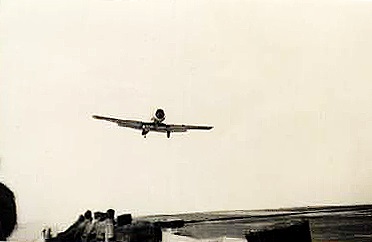 face with the left dropped to his side) and when received, the pilot cuts the throttle, dips the nose to see the deck and to spill the air out from under his plane, then a rapid back on the stick to get the tail down so you can make a three point landing, less chance for the plane to bounce and the best position for the hook to pick up a wire. Getting the wire obviously brings you to a rather rapid stop. If you aren't in the habit of taking your hand off the throttle or have learned to completely relax the left arm, the sudden stop results in everything in and on the plane to want to continue straight ahead. It means only one thing when the engine revs up during this part of the landing. Very embarrassing for the pilot. The hop only lasted about 40 minutes And there I was CARRIER QUALIFIED after the sixth landing. I unstrapped, got out of the plane and another student climbed in for a "hot" change of pilots, whereby the engine continues to run and the wheels are fully chocked. After each landing, the hook is raised and the rope wrapped around the arm rest, the plane is positioned on the centerline of the deck, and a running takeoff is executed as opposed to a catapult shot. To be carrier qualified, six takeoffs and landings are required. I thought I had done pretty good and when I saw the note "very good hop" and the marks for pattern, landings, final approach, and signals in the "top 20 pct column' and marks for takeoff, wave off, and speed in the "middle 60 pct column", I knew I had "done good".
face with the left dropped to his side) and when received, the pilot cuts the throttle, dips the nose to see the deck and to spill the air out from under his plane, then a rapid back on the stick to get the tail down so you can make a three point landing, less chance for the plane to bounce and the best position for the hook to pick up a wire. Getting the wire obviously brings you to a rather rapid stop. If you aren't in the habit of taking your hand off the throttle or have learned to completely relax the left arm, the sudden stop results in everything in and on the plane to want to continue straight ahead. It means only one thing when the engine revs up during this part of the landing. Very embarrassing for the pilot. The hop only lasted about 40 minutes And there I was CARRIER QUALIFIED after the sixth landing. I unstrapped, got out of the plane and another student climbed in for a "hot" change of pilots, whereby the engine continues to run and the wheels are fully chocked. After each landing, the hook is raised and the rope wrapped around the arm rest, the plane is positioned on the centerline of the deck, and a running takeoff is executed as opposed to a catapult shot. To be carrier qualified, six takeoffs and landings are required. I thought I had done pretty good and when I saw the note "very good hop" and the marks for pattern, landings, final approach, and signals in the "top 20 pct column' and marks for takeoff, wave off, and speed in the "middle 60 pct column", I knew I had "done good".
This was the final phase of the SNJ syllabus. Next was multi engine in the JRB or SNB (twin Beech) and then possibly to PBYs, the Black Cat of WW II fame.
And there I was FLYING THE HELLCAT
VF-ATU-2-NAS JACKSONVIILLE
15 APRIIL 1948 – 07 AUGUST 1948
CHAPTER FOURTEEN
Being the champions of the 7th, 8th, and 9th Naval Districts, put us in the All Navy Basketball Tournament at NAS Norfolk, Virginia from the 1st until the 8th of March. Once again, the Marines from Quantico defeated us 52 to 50 eliminating us from the tournament, just as they had done in baseball when we were at NAS Corpus Christi. The score was tied with 14 seconds remaining and they lucked out for the win of this semi-final game. Ironically, they went on to win the final 41 to 40. Members of the team who were also in the flight program were LTjg Adrian Back, LTjg Ed Clayton (both graduates of the Naval Academy), Midshipmen Kyle Woodbury, Ward Whitten, Paul Petty, "Chet" Cheshire and myself.
Upon our return to NATB Pensacola, it didn't take us long to figure that something was drastically wrong. There wasn't a soul at the base that we knew. All our friends were gone. In checking around, we found out that, whereas the advanced fighter program had been full and closed and all who had progressed to that stage were automatically sent to multi-engines, for some reason, they needed students NOW. Anyone who wanted single engine could have it. The SNB and PBY programs were cancelled and these students were sent either to multi engine at NAS Corpus or single engine at NAS Jacksonville. When we finally tracked down where we were going, it was a definite shock to find that we were all to go to multi engine. The Navy's reasoning was that since we were not here at the time and since more students wanted single engine than there were slots available, we were assigned to NAS Corpus. Talk about some unhappy campers. Thank goodness, rank does have some privileges. LTjgs Back and Clayton went to personnel and started raising hell. This doesn't happen too often but the Navy changed their mind and issued us orders to JAX. We had to accept with the understanding that we were going over without slots and would have to wait for openings and in the meantime, TARMAC, which was working on the flight line alongside the enlisted men. Petty and Cheshire had not qualified aboard the carrier at the time so did not get orders. They were lucky and followed later, ironically, in time to start flying with us. For some reason, the Navy was very kind to us and gave us our choice for F6F training versus F4Us or SB2Cs.
TARMAC was both a curse and a blessing. As the saying goes and to greatly paraphrase, "You don't know what it is like until you walk in my shoes." Working as a plane captain is a dirty, hot, sweaty, tiring but rewarding job.
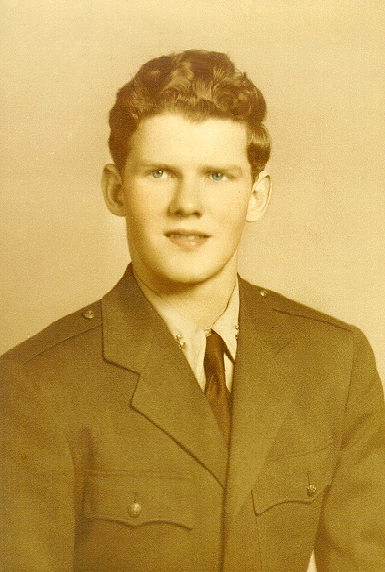
Getting on the line at dawn, preflighting the plane includes checking the fuel and oil levels and topping off as necessary, pulling the prop through and sometimes, either towing or taxiing to a new location. Until the pilots get there for their hops, you spend what spare time you have from doing the required chores, to cleaning and polishing the plane. Each person on the line is assigned a particular plane and takes pride in keeping it looking its' best. The toughest days are those that have night flying scheduled. Then you are on the line from dawn until after midnight but you are back on the line the same time the next morning. Talk about a day of asses dragging – that's the day. I believe it was months after getting off this duty until my hands and nails were clean, the cracking skin had healed from being exposed to the fuel and sun, and my sunburns had turned to what red heads call tan. My nose remained a bleeding scab all the time I remained in a flying status. Up there above the clouds and with the birds, there just aren't many places you can find shade. Tried Noxzema, zinc oxide and that piece of paper shaped to fit over your nose and scotched taped on. Nothing seemed to work. This tender skin on my nose was caused prior to entering the Navy by diving into shallow water and dragging my nose across the concrete bottom of the pool. The plus side of working on the line, and it was a definite plus, was by the time we were ready to fly, we had started, taxied and just sat in the plane so much that it felt like an old shoe. In other words, we knew that plane inside and out. Flying was going to be a snap, or so we thought.
We were finally scheduled to start flying on 11 April but before we could start we had to go through the parachute drop simulator and the bail out trainer. There wasn't much to the parachute drop. From a platform approximately 30 feet high, you strap on a parachute harness with the shroud lines connected to a wheel riding on a sloping cable. The slope of the wire was such that by the time you reached the bottom of the run and the wheel automatically released you, you should be at the speed you could expect upon landing if you were really making a descent in a parachute. Once you are released, you are supposed to hit the ground and roll. Most everyone did it correctly. The bail out trainer was a full size Corsair in a two-point attitude (fuselage level with the ground) with a full prop, a working engine and netting stretched along one side of the plane. After a complete briefing on the correct procedure in executing the exit from the plane, we each took our turn. Of the seven in our flight who did this, only one person did it correctly. With the engine idling, you enter the cockpit, strap on the parachute which you then sit on as a cushion, attach the shoulder and seat belt harness, rev up the engine so that there is a strong wind blowing past the cockpit. We had on our summer flight suits, light leather gloves, cloth helmet, goggles and our earphones plugged into the radio system. Now you are ready for the bailout. Done correctly, you unplug the radio, unstrap 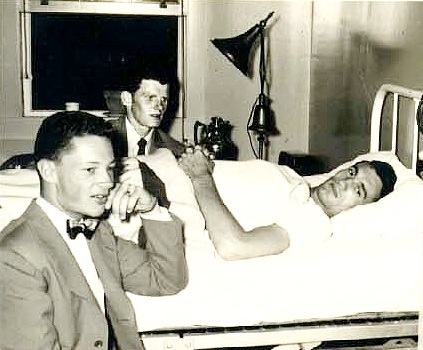 the seat harness, dive over the side doing a flip on the way and landing in the net on your back. Some ended up on their head, some on their stomach. I drove my shoulder into the net and so it went. LTjg Ed Clayton did it perfectly. The only problem he had was the parachute bundle ended up in the middle of his back and when he hit the net, he broke his back. All the time we were completing our training there in JAX, he spent his time in the hospital. We all visited him quite often and kept him up to date on events and our progress. We sure missed him in our flight but not half as much as he did. Following recovery, he finally got his wings.
the seat harness, dive over the side doing a flip on the way and landing in the net on your back. Some ended up on their head, some on their stomach. I drove my shoulder into the net and so it went. LTjg Ed Clayton did it perfectly. The only problem he had was the parachute bundle ended up in the middle of his back and when he hit the net, he broke his back. All the time we were completing our training there in JAX, he spent his time in the hospital. We all visited him quite often and kept him up to date on events and our progress. We sure missed him in our flight but not half as much as he did. Following recovery, he finally got his wings.
The Navy didn’t have any two seat training planes in type, so our first hop had to be solo. What with delays for one reason or another, we finally got our first hop on 28 April. I had a successful takeoff. And there I was FLYING THE HELLCAT. My childhood dream had come true.
The Navy assigns members to a flight and they stay together throughout Advanced Training. Our “Spider” flight consisted of ENS Gatewood (took LTjg Ed Clayton’s place), ENS Plummer, LT Hambsch, Midshipmen Ward Whitten, Don Howard, “Chet” Cheshire, and myself. With our instructor, LT Sargent, it made a flight of eight, or two, four plane divisions. LT Sargent was a serious, small, slender combat veteran of WW II. He was also a bachelor who must have imbibed considerable on the weekends for he would come to fly Monday mornings with bloodshot eyes. After we got to know him a little better as time went on, Whit cracked us up one Monday morning when he said he wished he had a helmet the same color as his eyes. Sargent, against regulation, had dyed his helmet red. I don’t know that for a fact. It may have been the color of his former squadron’s helmets. Anyway, he took Whit’s comment very well.
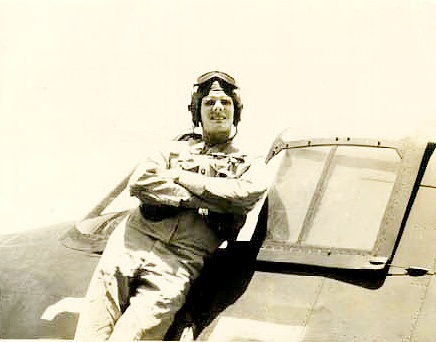
Whit and I decided that baseball and flying in this advanced program wasn’t going to work, so we quit. Didn’t last long, however. Don’t remember what they held over our heads, but we were back on the team before you could say “Geehossaphat”. Basketball and baseball stayed with me throughout my active Naval career, as will become apparent as we go on.
Flying operational type planes in the Advanced Program was greatly accelerated over the earlier programs. Most days we flew two hops, either in the morning or in the afternoon, with the other half of the day in ground school. Most all our flights were either gunnery, bombing, rockets, strafing or tactics. After all, the Hellcat is a fighter. I didn't have any trouble with bombing but gunnery was another matter. To qualify in bombing you have to have an average of 120 feet from the center of the bulls eye over 5 dives. My last bombing flight was a 68.7 feet average. I never had any drops over 120 feet. The bombing dive is at about a 60-degree angle with the drop or the "pickle" off of the bomb at 2000 feet and the pull out by 1000 feet. If you do start your pull out at the correct altitude with the airspeed around 280 knots, it takes about 7 gs to make it. In the fleet, pilots are issued what the Navy lists on inventory as the anti-gravity suit but everyone else calls it the g-suit. Unfortunately, we were not issued g-suits in the training command so you sometimes grayed out and sometimes came close to blacking out. It is easy to get target fixation while dive-bombing. Or you might want to stay in the dive "just a little bit longer” in order to get that pipper where it is supposed to be to hit the target. Either way, it can, and most times is, fatal. Midshipman Blood went straight in and another student pulled out late, struck the ground in a level attitude but too hard for the plane to survive. He spent many months in the hospital, never to fly again.
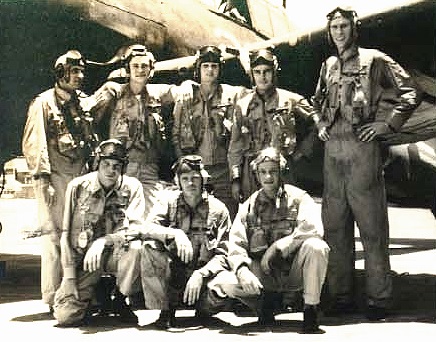 The F6F Hellcat made by Grumman Aircraft Engineering Corporation was the premier fighter for the Navy in the WW II Pacific operations. Hellcats accounted for 75% of all the Navy's air-to-air combat victories downing 5,156 Japanese planes and the F4U Corsair taking out 2,139. Not only is it a great fighter but it is an easy plane to fly. Very stable and very forgiving of mistakes. I call it "a grandma's plane". If you get into a spin, you really don't have to go through the set of steps to recover. Just let go of everything and she will come out of the spin all by herself. Not so the Corsair. On 12 April, one of my friends was doing a slow roll at 10,000 feet, stalled out and went into a spin from which he never recovered nor did he bail out. The way the Corsair spins, the centrifugal force makes it very difficult, if not impossible, to exit the plane. The handbook says, very plainly and emphasized by capital letters and underlined "DO NOT SPIN THIS PLANE". The Friday before this, another student I knew blacked out in gunnery run and went into the Atlantic. Witnesses said they saw him hanging onto the upside down life raft and later on top of it. He must have been hurt pretty bad for he never waved at the planes circling above. They also saw about 50 sharks around the raft and they finally got him before rescue got there. About two weeks before that, a student officer also blacked out in a gunnery run, never became conscious and went straight into the water. All these were in the Corsair. This may be why it is referred to as the "flying coffin" [also, the “widow-maker”]. It seems like the Corsair was
The F6F Hellcat made by Grumman Aircraft Engineering Corporation was the premier fighter for the Navy in the WW II Pacific operations. Hellcats accounted for 75% of all the Navy's air-to-air combat victories downing 5,156 Japanese planes and the F4U Corsair taking out 2,139. Not only is it a great fighter but it is an easy plane to fly. Very stable and very forgiving of mistakes. I call it "a grandma's plane". If you get into a spin, you really don't have to go through the set of steps to recover. Just let go of everything and she will come out of the spin all by herself. Not so the Corsair. On 12 April, one of my friends was doing a slow roll at 10,000 feet, stalled out and went into a spin from which he never recovered nor did he bail out. The way the Corsair spins, the centrifugal force makes it very difficult, if not impossible, to exit the plane. The handbook says, very plainly and emphasized by capital letters and underlined "DO NOT SPIN THIS PLANE". The Friday before this, another student I knew blacked out in gunnery run and went into the Atlantic. Witnesses said they saw him hanging onto the upside down life raft and later on top of it. He must have been hurt pretty bad for he never waved at the planes circling above. They also saw about 50 sharks around the raft and they finally got him before rescue got there. About two weeks before that, a student officer also blacked out in a gunnery run, never became conscious and went straight into the water. All these were in the Corsair. This may be why it is referred to as the "flying coffin" [also, the “widow-maker”]. It seems like the Corsair was 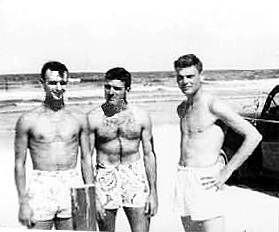 always involved in accidents. Course it is always attributed to pilot error but, if you compare it's record to the Hellcat, you know the plane has a lot to do with it. The catcher on our baseball team at Corpus and here at Jacksonville, LT Barksdale, upon landing, ran off the runway in a Corsair, hit the dirt, flipped upside down and slid for a considerable distance backwards. The force bent the back armor plate over the pilot forcing him to bend over double, breaking his neck and causing his head to graze the stick enough to split his head open and give him a concussion. Hemiddle 60 pct column/u survived, completed flight training and got his wings. I didn't know this until years later when I had reserve orders for two weeks training aboard the USS Lake Champlain docked at a pier in NAS Quonset Point, R. I. She was supposed to go sea for the two weeks but for some reason didn't. When I reported to the Air Boss for assignment of duties, CDR Barksdale was that person. He was a very strong, well-built fellow who starred in football at the Academy. (Every one's a star after they leave a place and a few years have crept by.) The accident would probably have killed anyone else.
always involved in accidents. Course it is always attributed to pilot error but, if you compare it's record to the Hellcat, you know the plane has a lot to do with it. The catcher on our baseball team at Corpus and here at Jacksonville, LT Barksdale, upon landing, ran off the runway in a Corsair, hit the dirt, flipped upside down and slid for a considerable distance backwards. The force bent the back armor plate over the pilot forcing him to bend over double, breaking his neck and causing his head to graze the stick enough to split his head open and give him a concussion. Hemiddle 60 pct column/u survived, completed flight training and got his wings. I didn't know this until years later when I had reserve orders for two weeks training aboard the USS Lake Champlain docked at a pier in NAS Quonset Point, R. I. She was supposed to go sea for the two weeks but for some reason didn't. When I reported to the Air Boss for assignment of duties, CDR Barksdale was that person. He was a very strong, well-built fellow who starred in football at the Academy. (Every one's a star after they leave a place and a few years have crept by.) The accident would probably have killed anyone else.
The following episodes lend credence to the belief that the Hellcat is a very stable and safe plane to fly. As I mentioned earlier, I land at night the same as I do in the daylight. Not all pilots do it that way, and, matter of fact, the book says otherwise. In the training command and sometimes in the fleet squadrons, the Navy places a team (usually two) at the landing end of the duty runway. Again, usually an Officer and an enlisted man. The officer has an Aldis Lamp, which he aims at the undercarriage as a plane passes overhead to see if the wheels are down. It they are not, he instructs the enlisted man to fire the flare in such a direction that the pilot will see it and take a wave-off. As cocky and sure as a pilot is, he wonders "What the Hell?" as he adds full power and not until he reaches for the wheel handle to raise his wheels does he realize why he got the wave off. An SB2C pilot had his head up and locked and landed wheels up anyway. If he wasn't, he should have been, washed out of the program. Anyway, back to night flying. Whit made a beautiful, full stall, three point landing following a night of formation flying. The only problem was that he was still 50 feet in the air. No one was aware of this but Whit. When he told me, I asked what he did when he realized what he had done. He said he just walked the rudder and came down like a falling leaf. Said he did hit pretty hard. Any other operational plane would probably have dropped a wing and crashed.
I was on a gunnery hop, starting a high side run, when part way down to the target, speed approaching 300 knots, when all of a sudden, it seemed like the cockpit exploded. I was momentarily knocked unconscious, saw stars and had strong winds blowing in my face. It seemed like forever before I came to my senses, regained control of the plane and determined what had happened. The safety pin became dislodged from one side of the canopy; air got under that side of the canopy and tore it up. The glass was gone and the aluminum that formed the frame of the canopy was bent, broken and twisted. It was these aluminum bars which had broken and hit me in the head. Pulled out of the diving gunnery run and notified our instructor of my situation. He sent me back to the base with an escort. On the way back, I slowed down enough so that the wind entering the cockpit wasn't unbearable. Safety standards were that we land with the canopy open in case of any accident. When I realized that this canopy was not going to come open no matter what, I began to sweat wondering how I would be extradited if I did have trouble with the landing. Needless to say, this landing had all of my attention and I don't think I had made a better landing anytime in my short flying career. It was better than a half-hour before they could get me out of the plane. Had to use saws to cut through the aluminum.
I don't know whether our flight was any different from other flights but we sure lost a lot of our tow targets. Some we shot off, some came off by towing too fast, some the connection gave way, and some we don't know what caused it to happen. I remember one time that the target sleeve was shot off LTjg Gatewood did not fly the best formation so I assumed he wasn't too sharp in aerobatics, instruments and possibly, the link trainer. However, I did know that he always had the greater number of hits in our gunnery flights. Shortly after we had finished all of our gunnery hops, I asked him how he was able to get so many hits when none of the others in the flight got very many. Where the correct procedure is to get your lead on the target, hold your plane rock solid steady, ball in the center indicating no slip, and fire off a short burst. As it turned out, Gatewood was pretty smart. He figured if his lead was right and he was a little bit off in the trim of the plane (ball not centered), his bullets would go on either one side of the target or the other. So, he figured, lets average out this possible error by kicking the rudder from one side to the other and the fishtailing would cause the bullets to spray across the target and he would get some hits. It sure worked cause he got lots of hits. Back to my story. This particular day we were doing overheads. An overhead requires you to approach the tow plane and target from the opposite direction, roll upside down at the proper time, pull through like a split "s", pull to get the correct lead on the target, fire the quick burst as you go screaming down past the target sleeve, having turned just enough to miss hitting it, pulling out of the 320 plus knot dive with the "g" meter registering 7 to 8 "gs", yelling your head off trying not to gray and certainly not black out, climbing back up to the formation and make another run. If you don't start the overhead from the correct position, you can go past the target at a negative angle with no chance to lead the target and if you do, you stand a good chance of flying into it or you can be flat and sucked behind. The latter is the worst scenario because, if you fire, the chances are you could hit the tow plane. Tow plane pilots get very nervous when they see someone get sucked. We all know because we took turns being that person. Gatewood made, I suppose, a decent overhead run but unfortunately, he led the target a little too much and his spraying caused one or more projectiles to hit the towrope (steel cable) and sever the connection with the tow plane. This permitted the sleeve and the cable that was still attached to sort of flutter in the breeze, so to speak. Again, unfortunately, Gatewood could not avoid this obstacle in his flight path so he flew into it. When everything settled down and the excitement was over, we assessed the damage to Gatewood’s plane. He was still flying and seemed to have everything under control. A considerable amount of steel cable was wrapped around the shaft of the propeller with the sleeve whipping in the breeze along side the fuselage. Needless to say, that terminated that gunnery hop so we all escorted Gatewood back to the base where he made a successful landing. It took the mechanics quite some time to unravel the cable from around the prop. Ended up with no damage to the plane.
As part of the syllabus, we were to have a RON cross country flight. RON stands for Remain Over Night. However, we had a baseball game in Memphis and another player on the team was an instructor in Corsairs. He finagled it so Whit and I could use this as our scheduled RON. LT Newport would fly the Corsair and we would fly the Hellcat. When you fly for long distances and fuel is a factor, you like to have your power settings the same as the leader. I found out that you cannot do that between a F4U and a F6F. With the same type, you slip behind the leader and synchronize your rpms by "stopping" his prop when looking through yours. The strobe effect. Once you get the RPMs set, match your speed to his via the throttle setting and you should have the same settings as the leader. It didn't work with the Corsair. They can decrease their rpms which will increase the prop pitch and adjust the throttle setting for the most economical fuel consumption for a certain speed and when the F6F tries to duplicate these settings, he can't stay in the air at such low matching rpms. As a result, the F6F uses more fuel than the Corsair does when flying together. The trip was about 500 nautical miles, had some headwinds going up so we stopped to refuel in Birmingham. We played one game, stayed overnight, played the second game, stayed overnight, and flew back Monday morning arriving around noon. Lost both games. The F6F has a little over 3 hours of 100 octane AvGas under normal flying conditions. The right and left main tanks hold 87.5 gallons each and the reserve tank holds 75. The flight was calculated to take 2 hours and 45 minutes so I was conserving all the fuel I could. I wanted to use all the fuel available so I decided to run the tanks dry. When the operating tank started to cause the engine to sputter, I switched tanks. But, the engine didn't catch like it was supposed to. I started to sweat and my heart rate went sky high. Lost 2000 feet altitude before I got the engine restarted. We calculated the flight taking 2 hrs and 45 minutes and that is exactly how long it was. We got excellent grades on that flight. Our navigation, radio procedures and time between fixes were right on the money.
Whit and I pooled our money and bought a 37 Hudson Terraplane from the catcher of our baseball team. He was a mechanic and had rebuilt the engine himself. Showed us all his bills for the new parts used. We sure thought it to be worth $300. More about the car later.
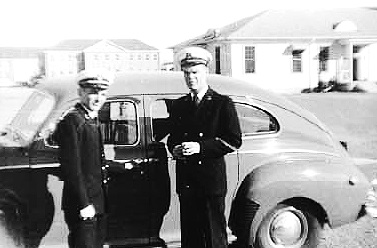
On the 15 of May, we went to NATB Pensacola to play two games. We won both games. Whit pitched the first and I pitched the second game and won 7 to 3. On the weekend of 12 June, I pitched another game against Pensacola, won 9 to 1, gave up 7 scattered hits and struck out 9. The strikeouts were a record for me. I don't usually get that many. If I didn't have a good fielding team behind me, I wouldn't have the record I had. I usually scatter 5 to 7 hits, so you see, most balls are either hit on the ground or fly balls to the outfield. The reason I mentioned these games against Pensacola will be apparent later.
Our flight went on a cross-country RON to Miami. I don't know how he did it but LT Sargent was able to get permission for Whit and me to make this one with our flight, even though we had been on a previous RON to Memphis. Only supposed to get one. The flight had $30 in the "kitty" so our flight party was a success. Had it at the “O” Club and then later in the evening went downtown to Flagler Gardens and danced the night away. We were not too impressed with Miami, but then again, we didn't get to Miami Beach. That flight took 1 hour and 30 minutes down and I hour and 10 minutes back. Navigation was a cinch. It is hard to get lost just following the coastline.
It isn't always all work and no play. One Friday, the squadron knocked off duties for the afternoon and we had a stag picnic. The beer flowed like Niagara Falls. The original eight kegs were gone in two hours and they had to go get some more. Had a softball game with a keg on every base. What a party and what a country!
We had finished all except Carrier Qualifications of the advanced syllabus in type aircraft on 1 July. CarrierQuals were back at NATB Pensacola. With the Holidays upon us, we didn't have to report in until after the fourth. Whit and I drove our Hudson the 400 miles, leaving JAX on the fourth. It was a typical Florida day. Hot and muggy. The car never ran better. Cruising along between 55 and 60 and getting 17 MPG. Near Tallahassee, we saw a sign "To Wakulla Springs". We decided we needed to cool off so we took the 20-mile side trip. On this two-lane road, a convertible full of girls passed us. Thought we would have some fun so we passed them and started dropping lighted doughboy firecrackers out the window, timing them to explode under their car. The first few scared the bejeezus out of them for we could see them jump and look all around, wondering what was going on. After that, they were having as much fun as we were trying to run over the cracker before or at the time it went off. The water was as cold as it was at Silver Springs. 72 degrees. We thought it had Silver Springs beat a mile. On the site was a beautiful Southern style, very exclusive hotel. Don't think we would have had the money to stay there even if we had had the time. We spent more time there than we had intended for it was almost dark when we left.
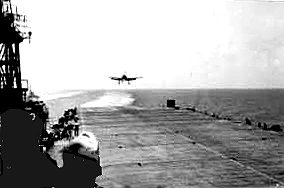 It was a beautiful night. A full moon and the stars shining in a cloudless sky. Around 2300 and about 50 miles from Pensacola, the generator light came on and shortly thereafter, the radiator boiled over. What a lousy predicament. We were in the boondocks and miles from anywhere. We remembered passing some gas stations miles back and since that was a known factor in comparison to not having a clue how far it would be to a station if we continued on towards Pensacola, after the radiator cooled down some, we turned around and drove without headlights (thank goodness for the full moon) until the radiator boiled over then we would pull over and wait for it to cool again. This was repeated several times before we reached a gas station that was still open. Passed several that were closed for the night, getting desperate, we pounded on the door of one until someone came to the door and let us in. He wasn't too mad for he did look through his supply but couldn't find a fan belt our size. As bad as our luck was, it got worse. The open station didn't have a fan belt that would fit our car either. We tried everything imaginable to make them fit but they just don't stretch. This station owner said there weren't any other stations opened in the near vicinity that he knew of. Did tell us of a Motel several miles back where we might get a room for the rest of the night. Yep. More bad luck. No room at the Inn. They gave us permission to stay in their parking lot, which we did and, I use the term loosely, slept in the car. We sure were a sorry sight that morning. Gets cold around 0300 and the mosquitoes don't sleep. The Motel owners were very kind and allowed us to use their facilities to freshen up and look somewhat presentable. We returned to the station where we had awakened the proprietor the night before and, he must have been too sleepy to see straight then because, in the morning, he found that he did have a fan belt for the Hudson. Got to the base early enough to check in on time.
It was a beautiful night. A full moon and the stars shining in a cloudless sky. Around 2300 and about 50 miles from Pensacola, the generator light came on and shortly thereafter, the radiator boiled over. What a lousy predicament. We were in the boondocks and miles from anywhere. We remembered passing some gas stations miles back and since that was a known factor in comparison to not having a clue how far it would be to a station if we continued on towards Pensacola, after the radiator cooled down some, we turned around and drove without headlights (thank goodness for the full moon) until the radiator boiled over then we would pull over and wait for it to cool again. This was repeated several times before we reached a gas station that was still open. Passed several that were closed for the night, getting desperate, we pounded on the door of one until someone came to the door and let us in. He wasn't too mad for he did look through his supply but couldn't find a fan belt our size. As bad as our luck was, it got worse. The open station didn't have a fan belt that would fit our car either. We tried everything imaginable to make them fit but they just don't stretch. This station owner said there weren't any other stations opened in the near vicinity that he knew of. Did tell us of a Motel several miles back where we might get a room for the rest of the night. Yep. More bad luck. No room at the Inn. They gave us permission to stay in their parking lot, which we did and, I use the term loosely, slept in the car. We sure were a sorry sight that morning. Gets cold around 0300 and the mosquitoes don't sleep. The Motel owners were very kind and allowed us to use their facilities to freshen up and look somewhat presentable. We returned to the station where we had awakened the proprietor the night before and, he must have been too sleepy to see straight then because, in the morning, he found that he did have a fan belt for the Hudson. Got to the base early enough to check in on time.
As soon as we had checked in, LCDR Wells called us up to his office. He wanted Whit and me to pitch for his team (Pensacola) in the Navy Tournament. He was well aware of our abilities since we had beaten his team ever time we had pitched against them this year. I was strongly against doing this as we were really members of the NAS Jacksonville team and we would be pitching on that team, virtually, in the same tournament. Just didn't seem legal to me. I was overruled so we pitched for Pensacola. Whit pitched the first game against NAS Corpus Christi. The game was called because of darkness at the end of the 12th inning with the score tied 3 to 3. Another pitcher finished the game the next morning and won the game as I also did that afternoon. However, NAS Memphis eliminated Pensacola in the next two games.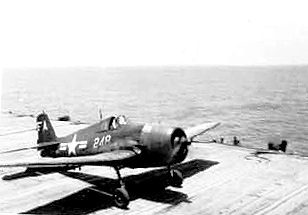
We flew our slow air flights that Thursday and had two FCLP hops on Friday. Because of the bad weather that they had been having, the powers that be made Saturday a half working day. Had one more FCLP hop and our LSO said that Cheshire and I were ready for the carrier. This was most unusual after just 3 field carrier landing practice sessions when it normally takes 6 to 8. The LSO has the final say as to whom is ready to go aboard. The only thing that kept us from going aboard was that the carrier's schedule was full. They had something like 22 service type planes to qualify and it takes 7 landings and take off for each to qualify. Simple arithmetic makes that 152 of each. That would keep them very busy all day and then some.
Friday, we received a dispatch from NATB JAX saying that a plane would be over Saturday to bring both of us I back to pitch in the tournament. Imagine that. A plane coming 400 miles to pick up two lowly Midshipmen to play ball. Midshipmen are sort of in no-mans' land when it comes to status. We weren't enlisted, we weren't Warrant Officers, and we certainly weren't Officers. It was said that a Midshipman had as much rank as a whore had virtue. So Whit and must have been deemed important to the team for them to go to all that trouble. As it turned out, it was a wasted effort. The games were rained out. The weather was so bad on Sunday, we didn't think we would be able to fly back. Since we had to be in Saufley by 2400 Sunday, we took a bus back. Whit didn't have any money so I bought both our tickets and that busted me.
We all field qualified on the 14th of July and were scheduled to go aboard on the 16th. I don't remember how many were to qualify that day but our flight was chosen to fly the planes from the base. Somewhere between the time I got into the Hellcat and was to take off, I had to down the plane, return to the line and get another plane. This obviously was going to make me late. The line chief was most cooperative and had one for me by the time I had the downed plane in the chocks. I had worked up a routine for preflighting the plane. I would follow the written checklist but I would start one procedure and go to the next rather than waiting for the prior one to be completed. For example, the check list upon entering the cockpit reads like this: (1) Adjust seat, shoulder harness, rudder pedals, and rear view mirror; (2) Landing gear control – “DOWN“; (3) Check oxygen supply and regulator; (4) Check to see if the controls are as follows: (a) Mixture – “IDLE CUT-OFF“; (b) Propeller – Increase RPM; (c) Blower – “NEUTRAL“; (5) Check operation of auxiliary pump; (6) Check landing gear and flap position indicator; (7) Ignition switch “ON BOTH”; (8) Check gun sight illumination and armament controls; (9) Check radio controls; and (10) Cowl flaps “OPEN”. The checklist for starting the engine is: (1) Set the throttle approximately 115 open. Throttle should be retarded to limit RPM to not over 800 until oil pressure shows after starting; (2) Mixture - “IDLE CUT-OFF“; (3) Supercharger – “NEUTRAL“; (4) Battery – “ON“; (5) Auxiliary fuel pump “ON“; (6) Hold primer switch on for three to five seconds. (Less if engine is warm); (7) Ignition 91 switch “ON BOTH”; (8) Starter switch “ON“. When engine fires advance mixture control to “AUTO RICH“; & (9) Do not exceed 1000 RPM until oil temperature reaches at least 40 degrees C.
The GROUND TEST is usually done near the end of the active runway, just prior to take off. (a) When the oil temperature has reached 40 degrees C., open the throttle to get approximately 1500 RPM with the propeller in full low pitch (control lever full down). Then move propeller control lever through its full range several times, pausing in the extreme positions until RPM stabilizes. A consistent change of RPM should result when the control is shifted from one extreme position to the other, if the propeller governor is operating satisfactorily.
(b) Make idle mixture check with throttle set for 600 RPM and auxiliary fuel pump ”ON”. Move the mixture control lever smoothly and steadily into the ”IDLE CUT-OFF” position and observe the tachometer for any change in RPM. Return the mixture control to the ”AUTO-RICH” position before the engine cuts out. A rise of more than 10 RPM indicates too rich an idle mixture, and no change or a drop in
RPM indicates that the mixture is too lean. A rise of 5 to 10 RPM is recommended in order to permit idling at low speeds without danger of fouling plugs and at the same time to afford good acceleration characteristics.
(c) With propeller in full low pitch (control full down) set throttle for 1200-1400 RPM. Shift rapidly from NEUTRAL to LOW blower, wait 15 seconds, and shift from LOW to HIGH blower. Watch for slight changes of oil pressure and RPM as the shifts are made. Such changes indicate satisfactory operation of the engaging mechanisms. No variation of manifold pressure should occur (unless the field is well above sea level) if auxiliary stage regulator is operating properly.
(d) Open the throttle to approximately 30” Hg. manifold pressure which should give 2000-2200 RPM in low pitch. Then check the functioning of the magnetos by putting ignition switch on ”LEFT”. The normal drop-off in RPM is 50 to 75 and does not usually exceed 100 RPM. Return switch to both until RPM stabilizes then turn to "RIGHT" and note RPM drop-off. Do not operate longer than 15 seconds on single magneto. This check should be made in as short a time as practicable.
(e) Check generator out-put. (28.0 volts.)
WARNING: Do not change tanks before take-off. Allow several minutes ground run after change.
TAKE-OFF CHECK LIST
a. Spread and lock wings.
b. Rev up engine to clear it.
c. Cowl flaps ½ ”OPEN”.
d. Oil cooler shutter ”OPEN” (F6F-5).
e. Propeller control ”FULL INCREASE” RPM position.
f Mixture control ”AUTO-RICH”.
g. Supercharger control ”NEUTRAL”.
h. Fuel selector valve ”RIGHT MAIN”.
i. Carburetor protected air control ”FULL IN”.
j. Fuel pressure 16 to 18.5 p.s.i.
k. Manifold pressure 54.0 Hg (Maximum).
l. Tail wheel ”LOCKED” for land operations and ”UNLOCKED” FOR CARRIER.
m. Cockpit enclosure ”OPEN”.
n. Cockpit heater switch ”OFF”.
o. Auxiliary fuel pump ”ON”.
p. Wing flaps ”AS REQUIRED”.
q. Rudder tab – two marks "NOSE RIGHT” – aileron and elevator trim tabs “NEUTRAL”.
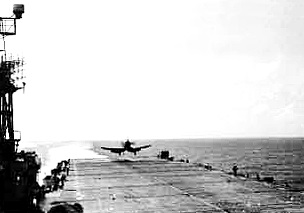 In order to conserve line space, all the F6Fs are parked with their wings folded. The pilot controls the locking and unlocking of the wings and must rely upon outside help to complete the folding or the spreading. Upon unlocking from the spread position, the wings fall away from the wing root and rotate 90 degrees. At this point, they will sort of swing like a pendulum until they stop at which point they must be manhandled and pushed up against the fuselage until the folded latch is engaged. Sharp, on the ball line personnel will catch the wing as it starts its swing from either the folded or spread positions and use the momentum of the wing to aid in moving it the rest of the way. In performing my check list, I not only check the position of the flap handle, but I lower the flaps to their fullest and then raise them for the taxi to the take off runway. The lowering of the flaps can be done while the wings are folded and takes time for the flaps to fully extend. While the flaps were extending, I would continue with other items on the checklist and come back to raise the flaps a little later on. Most of the time, the line is full of planes and you must wait your turn to move out from your parking space where you can have room to spread your wings. By the time this happens, you have performed the entire warm up checks, leaving just the ones necessary for take off. The pilot releases the latch to unfold the wings only upon the signal of the plane captain. He is the eyes of the pilot, for with the wings folded, the pilot can't see to either side. I had lowered the flaps with the wings folded and was proceeding with the rest of the check list when I saw the plane captain signal to spread my wings. As in all other flights in the Hellcat, I automatically, and without thinking, reached down and released the latch holding the wings in the folded position. Any other time, I would have completed the checklist long before I would get this signal but unfortunately, today all the planes had left the line around my plane and it wasn't necessary to taxi it out of the parking space before spreading wings. As soon as I pulled the release latch, I said "Oh no!" Never spread the wings of an F6F with the flaps down. A large portion of those flaps end up in the cockpit with the pilot, pining his arms tight to his body with considerable force. I know. I was black and blue for several weeks. This action didn't do the flaps any good either. I don't know whether they were damaged from the movement or when they were getting me free of the cockpit. Boy was I sick. I mentioned to the chief that now, was I not only going to be much later getting to the carrier but now I had an accident on my record. Chief said, "Don't you worry none about that. You won't have anything show up on your record. I'll get the flaps fixed before anyone knows any different". Playing station ball does have its advantages. He fixed me up with another plane; I proceeded to the USS Wright, joined in the landing pattern and got my qualifying 7 carrier landings.
In order to conserve line space, all the F6Fs are parked with their wings folded. The pilot controls the locking and unlocking of the wings and must rely upon outside help to complete the folding or the spreading. Upon unlocking from the spread position, the wings fall away from the wing root and rotate 90 degrees. At this point, they will sort of swing like a pendulum until they stop at which point they must be manhandled and pushed up against the fuselage until the folded latch is engaged. Sharp, on the ball line personnel will catch the wing as it starts its swing from either the folded or spread positions and use the momentum of the wing to aid in moving it the rest of the way. In performing my check list, I not only check the position of the flap handle, but I lower the flaps to their fullest and then raise them for the taxi to the take off runway. The lowering of the flaps can be done while the wings are folded and takes time for the flaps to fully extend. While the flaps were extending, I would continue with other items on the checklist and come back to raise the flaps a little later on. Most of the time, the line is full of planes and you must wait your turn to move out from your parking space where you can have room to spread your wings. By the time this happens, you have performed the entire warm up checks, leaving just the ones necessary for take off. The pilot releases the latch to unfold the wings only upon the signal of the plane captain. He is the eyes of the pilot, for with the wings folded, the pilot can't see to either side. I had lowered the flaps with the wings folded and was proceeding with the rest of the check list when I saw the plane captain signal to spread my wings. As in all other flights in the Hellcat, I automatically, and without thinking, reached down and released the latch holding the wings in the folded position. Any other time, I would have completed the checklist long before I would get this signal but unfortunately, today all the planes had left the line around my plane and it wasn't necessary to taxi it out of the parking space before spreading wings. As soon as I pulled the release latch, I said "Oh no!" Never spread the wings of an F6F with the flaps down. A large portion of those flaps end up in the cockpit with the pilot, pining his arms tight to his body with considerable force. I know. I was black and blue for several weeks. This action didn't do the flaps any good either. I don't know whether they were damaged from the movement or when they were getting me free of the cockpit. Boy was I sick. I mentioned to the chief that now, was I not only going to be much later getting to the carrier but now I had an accident on my record. Chief said, "Don't you worry none about that. You won't have anything show up on your record. I'll get the flaps fixed before anyone knows any different". Playing station ball does have its advantages. He fixed me up with another plane; I proceeded to the USS Wright, joined in the landing pattern and got my qualifying 7 carrier landings.
And there I was PINNING ON THOSE WINGS OF GOLD
VF-ATU-2-NAS JACKSONVILLE
15 APRIL 1948 – 07 AUGUST 1948
Naval Aviator #J-1494
24 JULY 1948
CHAPTER FIFTEEN
Our flying days were over in the training command, so we had very little to do between qualifying aboard the USS Wright, getting our wings and getting our orders to our next assignment. For Whit and me, it was mostly baseball. We were finishing up our season and getting ready for the Navy tournament.
I don't know of anyone happier than I was at this phase in my life. My mother and father were able to drive down for the ceremony and my high school sweetheart, who I had been corresponding with several times a week since I had entered the service, was also able to get time off and travel to sunny Florida, since she was working for TWA and could fly for nothing on a space available basis. I didn't realize what she had to promise in order to get the time off to come to my graduation. She had not been at the Pittsburgh reservation department very long (not counter work), having transferred from Kansas City. The list I found among my letters read: 1) Shine shoes daily; 2) Buy iced tea 3 (three) times daily until October; 3) Relieve ½ hour. early for next 2 (two) years; 4) Bring back eligible Ensign from Florida; and 5) Do all strenuous work during the course of each shift for next 6 (six) months. My folks arrived Thursday morning and Mickey Reynolds Friday afternoon. My folk's trip was touch and go. One of my uncles had borrowed their car and was involved in a wreck while in Cincinnati. Don't remember whether they got it fixed or that it wasn't as bad as they thought. Anyway, it got them to Florida and back.
The afternoon of my folks' arrival, I took our Hudson and gave them a little tour of the sites of northern Florida. Either on the way to St. Augustine or in the near vicinity, we stopped at the Marine Aquarium (I think that was the name). As I remember, there were two huge round tanks full of seawater containing a variety of sea life. The Atlantic Ocean was in clear view just beyond the tanks. I thought it really a neat place. It may have been the forerunner of Sea World. Sea World would be a much better attraction if it were near the Ocean like the Aquarium had been. Course, being near Disney certainly helps Sea World's attendance.
When we got to advanced training, we were allowed to wear civilian clothes and all the uniforms of the officers. With our meager salary, it took quite a number of months to save up the money necessary for these "extravaganzas". First were the civvies. I really don't remember whether we got an allowance for the uniforms or whether they were given to us or whether we had to pay for part or all of the cost. The work khaki was with long sleeve shirt worn with tie in the "winter" or with a short sleeve shirt worn without a tie in the "summer" time. This uniform was washed, heavily starched and ironed. Sometimes, you had to drive a board down through the legs before you get your leg down in the pant. This was worn with the fore and aft or the bridge cap and brown shoes. Collar insignias indicating your rank were worn on both collars and on your fore and aft cap. Later, your wings were worn on the cap and above your left shirt or coat pocket. The fore and aft cap was also referred to as a piss cutter or cunt cap. Aviators were in, what is called, "the brown shoe" Navy and very proud of it. Unfortunately, we did have to wear black shoes with our blues and white shoes with our whites. There was a coat that went with those "working" khakis but I don't know anyone who wore them, especially those in the aviation part of the Navy. Instead, we wore our flight jackets. The dress khaki was made from tropical worsted, didn't wrinkle easily but needed dry cleaning. Most wore these for the working uniform if their duty wasn't one where they might get dirty. Hated the dress khaki and white coats because of the shoulder boards. I tore more of these off getting into cars than I care to count. The whites were the formal summer uniform and not worn very often. These were washed, starched and ironed making the high neck collar very uncomfortable. The blues were the winter work uniform worn with a white shirt and black tie, coat with gold braid on the sleeves indicating rank, black socks and black shoes. The bridge cap could be with either the white or the blue cover. I never bought a formal dress blue uniform with the sword and luckily was never required to wear one. The favorite uniform of all aviators and aviators in training were the "greens". With greens, you wore a khaki shirt and black tie. Not only were they a very practical and comfortable uniform but only brown shoes were allowed to wear them. This may appear snobbish to some but it certainly set us apart from the rest of the Navy. The fore and aft cap could be worn with the khakis and greens but not with the whites or blues. As a way of remembering – wear a bridge cap when in a uniform with shoulder boards. Ribbons were worn above the left pocket on all coats, except the greens, with wings, dolphins and like special insignias just above the ribbons. Wings were also worn on the khaki shirt when without a coat. The collar insignias were only worn on the khaki shirt. Midshipmen wore anchors as collar insignias just like those worn at the Naval Academy and ½ stripe on sleeves and shoulder boards.
As mentioned before, it gets pretty hot in Texas and in Florida. Actually, hot and muggy. Then picture yourself in the back row of a formation, on concrete or blacktop and everyone wearing whites. It isn't long before you are soaking wet and blind. There were usually one or two who passed out in formations such as this. Welcome to "graduation" day. This day we were fortunate that the weather was cooperating with several dry days so the ceremonies were held on a grassy field. We survived the parade where the different squadrons passed in review. We even survived the speeches. And then they called the names of those who had successfully completed Naval Flight Training and were presented with our certificate designating us as Naval Aviators/p (HTA) (Heavier Than Air). My certificate had a drawing across the upper quarter showing a fleet consisting of a carrier, two cruisers and four destroyers. Flying over is a close up of a F6F and six more in the background. Also shown is a PB4Y2 and two Kingfishers or OS-2Us. Below the picture it says:
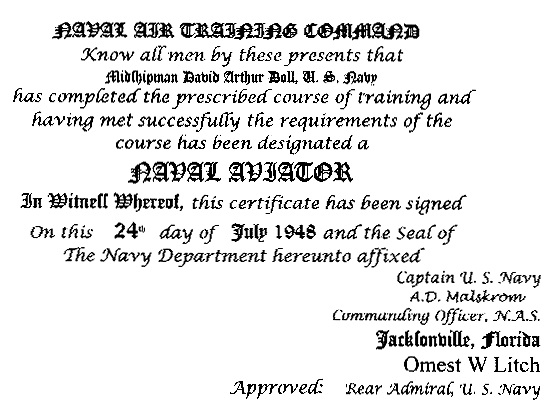
And there I was PINNING ON THOSE WINGS OF GOLD with Mickey doing the honors. Whitten had his fatherimg alt= pin on his wings for him.
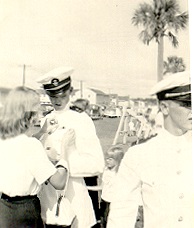 My mom and dad left shortly after the ceremony, heading for the Hialeah Racetrack in Miami. Ed Clayton was still laid up in the hospital and he very graciously lent me his new Dodge coupe with fluid drive so I could show Mickey a good time for the only night she could stay. Whitten was using the Hudson with his family. After a very nice dinner at the 0 Club, I thought it would be very romantic on the Jacksonville Beach with the full moon, pleasant breeze and the sound of the waves breaking upon the white sand. On the way to the beach, we passed a jeep full of boys and girls having a joyous time. We made some remark to them as we went by and they jokingly responded. They didn't seem to be in a hurry so we left them behind in no time flat. I had been to the beach several times and knew that cars were allowed to drive on the beach, just like at Daytona. I pulled onto the beach looking for a secluded spot and following the tracks of a vehicle that had recently gone down the sandy beach. After we had traveled some distance south on the beach, the car began to labor and slow down considerably. I felt the rear end slowing sinking in the sand and the then the wheels started to spin. The more they spun, the deeper we went until I was resting on the axle. I tried rocking it – first in drive and then quickly in reverse much like getting out of snow in the north. A fluid drive car is not the kind to have in a situation like this. We took off our shoes and searched the beach for objects to put under the wheels but nothing seemed to work. Then I began to sweat and wonder how the hell we were going to get back to the base and to Mickey's motel. Now it was after midnight and we were definitely stuck. Then we heard this laughter coming up the beach and soon saw a vehicle approach. The moon was so bright that headlights weren't needed. It turned out to be the same jeep we had passed and they remembered us. Their first remark was that these damn Yankees didn't know how to drive on the sands of Florida. I said I had been following these tracks and they had no trouble traveling the beach. Not too kindly, they pointed out to my dismay that I had been following 4 wheel jeep tracks. They took a vote and decided to leave us where we were. One of them was kind enough to go to rear and see how bad we were stuck. Heard him holler that we weren't Yankees but were from Kentucky. Thank God for Clayton being from the Blue Grass State. Their attitude changed immediately and they started figuring how they were going to get us out of there. Luckily, they had some heavy rope in the jeep and after considerable time and effort, finally got us clear of that very soft sand and I was able to get to the harder sand that would support the Dodge. I tried to pay them for their kindness but they would have none of that. My thanks were profuse, needless to say. That car had sand all through the inside of the car, in the trunk, on the engine and anyplace else you looked. Clayton was going to kill me if I didn't get it back to
My mom and dad left shortly after the ceremony, heading for the Hialeah Racetrack in Miami. Ed Clayton was still laid up in the hospital and he very graciously lent me his new Dodge coupe with fluid drive so I could show Mickey a good time for the only night she could stay. Whitten was using the Hudson with his family. After a very nice dinner at the 0 Club, I thought it would be very romantic on the Jacksonville Beach with the full moon, pleasant breeze and the sound of the waves breaking upon the white sand. On the way to the beach, we passed a jeep full of boys and girls having a joyous time. We made some remark to them as we went by and they jokingly responded. They didn't seem to be in a hurry so we left them behind in no time flat. I had been to the beach several times and knew that cars were allowed to drive on the beach, just like at Daytona. I pulled onto the beach looking for a secluded spot and following the tracks of a vehicle that had recently gone down the sandy beach. After we had traveled some distance south on the beach, the car began to labor and slow down considerably. I felt the rear end slowing sinking in the sand and the then the wheels started to spin. The more they spun, the deeper we went until I was resting on the axle. I tried rocking it – first in drive and then quickly in reverse much like getting out of snow in the north. A fluid drive car is not the kind to have in a situation like this. We took off our shoes and searched the beach for objects to put under the wheels but nothing seemed to work. Then I began to sweat and wonder how the hell we were going to get back to the base and to Mickey's motel. Now it was after midnight and we were definitely stuck. Then we heard this laughter coming up the beach and soon saw a vehicle approach. The moon was so bright that headlights weren't needed. It turned out to be the same jeep we had passed and they remembered us. Their first remark was that these damn Yankees didn't know how to drive on the sands of Florida. I said I had been following these tracks and they had no trouble traveling the beach. Not too kindly, they pointed out to my dismay that I had been following 4 wheel jeep tracks. They took a vote and decided to leave us where we were. One of them was kind enough to go to rear and see how bad we were stuck. Heard him holler that we weren't Yankees but were from Kentucky. Thank God for Clayton being from the Blue Grass State. Their attitude changed immediately and they started figuring how they were going to get us out of there. Luckily, they had some heavy rope in the jeep and after considerable time and effort, finally got us clear of that very soft sand and I was able to get to the harder sand that would support the Dodge. I tried to pay them for their kindness but they would have none of that. My thanks were profuse, needless to say. That car had sand all through the inside of the car, in the trunk, on the engine and anyplace else you looked. Clayton was going to kill me if I didn't get it back to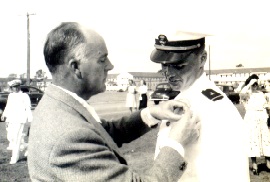 normal so he would never know, cause I sure as hell wasn't going to tell him. Got Mickey to her Motel around 3 A.M. and she had to catch a morning plane back to Pittsburgh. Don't think either of us slept very much but she did make her flight. I returned to the base and started getting the sand out of the passenger part of the car since I was scheduled to take the Whittens into town for Sunday dinner with the Scattergoods. Upon returning to the base, I spent several hours removing the rest of the sand and giving the car a very careful and complete wash job. Took the car back to Ed, thanked him from the bottom of my heart and we played two games of chess, each winning one. Man I was beat. The next day, we were scheduled to go to Camp Lejeune in North Carolina to play two baseball games on Tuesday. I wasn't looking forward to that outing since six of our starting eight were not making the trip – the entire infield and one outfielder. My fears were well founded for we lost 11 to 2 in the game I pitched, giving up a record 15 hits. I mentioned earlier, I needed a good fielding team behind me and this wasn't it. Our team got 4 hits that game and I got one of them and scored one of our two runs. You know something is wrong with the team when the pitcher does this. We didn't do any better in the second game.
normal so he would never know, cause I sure as hell wasn't going to tell him. Got Mickey to her Motel around 3 A.M. and she had to catch a morning plane back to Pittsburgh. Don't think either of us slept very much but she did make her flight. I returned to the base and started getting the sand out of the passenger part of the car since I was scheduled to take the Whittens into town for Sunday dinner with the Scattergoods. Upon returning to the base, I spent several hours removing the rest of the sand and giving the car a very careful and complete wash job. Took the car back to Ed, thanked him from the bottom of my heart and we played two games of chess, each winning one. Man I was beat. The next day, we were scheduled to go to Camp Lejeune in North Carolina to play two baseball games on Tuesday. I wasn't looking forward to that outing since six of our starting eight were not making the trip – the entire infield and one outfielder. My fears were well founded for we lost 11 to 2 in the game I pitched, giving up a record 15 hits. I mentioned earlier, I needed a good fielding team behind me and this wasn't it. Our team got 4 hits that game and I got one of them and scored one of our two runs. You know something is wrong with the team when the pitcher does this. We didn't do any better in the second game.
We were just starting the all Navy tournament and the base was holding up Whit's and my orders until we either won the All Navy or else was eliminated. This could be over as early as the 4th of August or go until somewhere near the 15th. It is hard to make plans under such conditions.

And there I was IN COMAIRLANT
NORFOLK, VA.
07 AUGUST 1948
CHAPTER SIXTEEN
Between the time we carrier qualified and the time we got our wings, we had the opportunity to select where we would like to go for our first assignment. All we could select was which coast, the Atlantic or the Pacific. You would think they were in different Navies they way they ran things. (Only found this out much later in my career) Whitten wanted to stay on the east coast since that would be close to home but I convinced him to put in for the Pacific, to see places we had never seen and might never get the chance again. When our orders finally came, he got the West Coast and I got the East. Man, I sure didn't want to see our friendship split up. We both went to Personnel to see about getting my orders changed. We must not have had any pull for we were unsuccessful in getting them to make any changes. Found out that it was even their mistake. Seems that the list had the Aviators name on the left side of the sheet and their assignment on the right. When the Yeoman was typing up my orders, he didn't go straight across the sheet but dropped down one space. Had he done it correctly, I would have gotten the West Coast with Whit.
Not that we really wanted to, but we learned a lot about a car – mostly the hard way. It never ran right after that episode when the fan belt broke and the engine overheated. Whit and I took the carburetor off and found a couple parts in backwards. Since then, it ran beautifully, once you got it started. We found that it started quicker if one person reversed the spark plugs on two specific cylinders while the other persons went through the starting procedures inside the car. All of our troubles weren't over however. Got a call from Whit one evening with the news that the floor mounted gearshift had come off in his hand. Right at the busiest intersection in downtown Jacksonville. To make matters worse, it was in neutral at the time and he couldn't get it out of neutral so he could drive it to a service station. Got it towed to a station and had it welded or brazed back together. It had been done before, but obviously, not well enough. At one time in the life of this car as we owned it, it took two to drive it. When the driver took his foot off the gas pedal in order to brake and at the same time shoving in the clutch to change gears, the engine would die unless the passenger would reach over and put his foot on the accelerator. That made driving interesting. Thank goodness, we got that fixed before we were to drive it home on our scheduled leave before reporting to our next assignment. Without much of a team left, we were through playing baseball on Wednesday, the 4th of August and planning our trip home at 0001 on the 8th, our release date, which was just after midnight on Friday. We figured it would take a little over 24 hours for us to drive non-stop to East Liverpool, Ohio. My aunt and uncle lived there and agreed to take me on to Massillon and then I would go on to Portsmouth. The way Ward and I had it figured out, the shortest distance between two points is a straight line. Sooooo, we drew a straight line from Jacksonville to Pittsburgh and decided to take any road that came close to that line. We drew it to Pittsburgh because I knew we had to intercept The Lincoln Highway or route 30 and then follow it into East Liverpool. That approach to a long trip is not recommended to make for the fastest trip. When we left Jacksonville, we were on bald tires but we did have a spare with less tread. We certainly took the scenic route. Each of us drove a tank full before we changed drivers. By midnight Saturday, we should have been at our destination but we were still a long way off. About 2000 Saturday, Whit was through with his stint and we filled up the tanks in this small town somewhere in the boondocks. I asked him where we were. He showed me on the map and said to follow route 9 just after we got out of town. I really made what I thought was good time and was really covering the mileage even though this was all mountain roads. No straight stretches but only curves – up, down and around the mountains. The roads were all narrow two lanes and dark, which made for difficult driving, but it sure kept the driver awake. Once I woke Whit up momentarily, when I side swiped the side of the hill. No damage was done but it was a little scary. About 0200 on Sunday morning, I found a gas station that was open and we changed drivers. Whit wanted to know where we were so we both searched the map for the name of this town, looking towards Pittsburgh and estimating about where we should be. We just couldn't find the town until one of us spotted it. As it turned out, route 9 split where I started driving and I took the wrong leg. I drove in a huge circle and we were 20 miles south of where I had started driving. Talk about two depressed guys. Whit drove again until about 0800 and we were getting close to our objective. I was driving and Whit was sleeping when I came over the crest of a steep hill and saw that our road dead-ended into Route 30 at the bottom. Oh, happy day. Except, as it turned out, it wasn't to be. I didn't want to pick up too much speed going down this hill since I had to stop at the bottom. When I went to put on the brake, the pedal went to the floor without any braking action whatsoever. Thinking quickly, I tried shifting into second to let the engine slow us some. Too late. I couldn't get into any lower gear. I woke Whit and told him we had a slight problem. The time was about 1000 on Sunday morning and the traffic on Route 30 was steady from both directions. I think we both thought we would be lucky to survive this. To make matters worse, at the foot of our hill the road split to the left and to the right with a huge stop sign in the middle of the "Y" surrounded with concrete posts. Since we would normally have turned to the left, I started a turn that way but the car started skidding into the concrete poles on Whit’s side. I said to myself, "I can't do this to Whit, so I whipped the wheel the opposite way and we spun around the poles but facing in the opposite direction or to the right. The Lord was on our side for there was a break in the traffic as we skidded across the road and came to a stop beside gasoline pumps in a service station. Running through my mind, as we started skidding across Route 30, was that if we didn't hit anything, we were going to blow all the tires. It didn't happen. We sat there in the gas station for about a half an hour, smoking cigarettes and shaking. The service station was closed so we couldn't get any work done on the brakes. Fortunately, East Liverpool was only about 30 miles away so we drove it in first gear, getting up to maybe 15 or 20 miles per hour speed. I think the line behind us stretched clear back to Pittsburgh because, just like the road in the mountains, this one had a lot of curves with the double yellow lines where no one was supposed to pass. A few did though. Monday, we got the brakes fixed and Whit took off for Mineola, Long Island. He called that night saying he picked up a hitchhiker just out of East Liverpool, in case he needed any help along the way, but everything went smoothly so he just had company. Years later, he sent me the money I had paid for the car saying that it had been sitting in his back yard for over a year and then his brother bought it. I tried returning the money saying his brother must be crazy, for that thing wasn't worth even a penny.
After my leave, I reported in at Norfolk, Virginia And there I was IN COMAIRLANT. The first thing they did was cut us orders to FAETU for a three-week course in electronics. All the billets in the fleet were filled, so everyone reporting in got sent to the Fleet Air Electronics Training Unit but I couldn't get into the class until 20 September. I was a day late and a penny short for I was in the process of checking in to COMAIRLANT when the base had a hurricane fly away to Columbus, Ohio, Rome and Buffalo, New York. I miss all the fun. Had I been a day earlier, I would have gotten to go since they were looking all over for pilots to man the planes.
Well, not really ALL the fun. On Sunday, the 5th of September, I went down to operations and got a ride on one of the two R4D's the Navy was sending on a "training" cross country flight scheduled to land at the Cleveland airport and return later that same day. Unbeknown to anyone, Cleveland was having their annual Air Show that day and, wonders of wonders, the Blue Angels were performing. We sure lucked out. The Blue Angels were flying the F8F Bearcat and being lead by LCDR "Dusty" Rhodes.
Checked into COMAIRLANT with LT Philip P. Hambsch; Midshipmen Manuel 0. Delgado, Paul E. Petty and Richard G. Jones. Jones had a brand new Pontiac convertible so we stayed rather close to him for obvious reasons. We four midshipmen decided to drive to Chapel Hill, North Carolina to see Texas play North Carolina. This was billed as the game of the week, if not the year, as N. C. had Choo Choo Justice who was being touted to be the winner of the Heisman Trophy for 1948. The fact that all the tickets had been sold out for two months didn't stop us from going. We knew we could get in. When we got there, the scalpers wanted the unheard sum of $25. We also found to our chagrin, the NROTC unit couldn't even get tickets. Did that deter us? No siree. We hung around the gates for 2½ hours before the game but couldn't talk our way in or chance upon any tickets. We had scouted the entire perimeter of the stadium during our 2½ hours so we ended up scaling the fence on the back or hillside of the stadium. We did this just after the game started so that everyone’s attention should be on the game. We guessed right. We had "seats" in the aisle on the 35-yard line and only missed two minutes of the game. The only thing wrong with that was that we missed two touchdowns. Choo Choo was awesome and deserved being nominated for the trophy. Final score was 34 to 7.
Before we started the course, they gave us a test to see how much we knew. My test results proved I didn't know anything pertaining to the course. This was a three-week course with one week of operational training in anti-submarine warfare. I earned a 3.6 in that subject. The other two weeks were taken up with Airborne Electronics Equipment. We had 48 hours of ground school and 5.3 hours of in-flight training. FAETULANT was pretty much run by the A. P.s (Aviation Pilots), who were chiefs with wings. The air training was done in DC-3s. Routine except for one hop. One engine started sputtering shortly after take off and we just made it safely back to the field. The course covered the following communication equipment: AN/ARC-1; AN/ARC-2; AN/ARC-5; AN/APN-1; AN/ARR-2; AN/ART-13and ARB. The Radar portion included the AN/APS-4 and the AN/APX-2. The third portion covered the RCM gear, which included AN/APR-1; AN/APR-5; AN/APA-11; AN/APA-38; AN/APT-1; AN/APQ-2 and AN/APT-3. My average grade for the three was 3.57 out of a possible 4.0.
And there I was IN BOUGANVILLE
NAAS OCEANA, VA.
12 October-30 – November 1948
CHAPTER SEVENTEEN
Received orders dated 12 October 1948 along with Midshipmen Richard G. Jones, Manuel 0. Delgado and James E. May which read ”1. Proceed to the place (or places in the order given) indicated below for temporary duty. This is in addition to your present duties and upon completion thereof you will return to your station: On or about 12 October 1948, to the Naval Auxiliary Air Station, Oceana, Virginia, and report to the Commanding Officer, Fleet Aircraft Service Squadron FIVE, for temporary duty involving flying, for a period of approximately thirty (30) days. 2. No per diem is involved in the execution of these orders and none is authorized.”
And there I was IN BOUGANVILLE, otherwise known as NAAS Oceana. This was a new airfield out in the middle of nowhere. There was one, maybe two hangers and several Quonset huts out near the line and very few planes that belonged to the FASRON. There were several air groups on the base flying Corsairs and ADs. As it later turned out, one must have been Air Group 2. The place was D-E-A-D! The word was that we would be there for probably 90 days. If we didn't go crazy, our spirits would certainly be broken. Out of desperation, I went out for the station basketball team. In the two months that we were actually there, I got exactly 4.3 hours of flying time in F6Fs and a 1 hour test flight in an SNJ.
The 10th of November a hurricane passed by with winds of only 30 knots but the forecast threat was enough to evacuate the planes that were on the base. The Air Group on the base, flew to Scranton-Wilkes-Barre airport and left the new F4U-5 Corsairs behind. Since they were all grounded due to trouble with the cylinders of the engines, all we could do was tie them down, real good. Later, the Midway Air Group got back from Florida where they participated in "Operation Combine" with the Army and the Marines. Talked with several of these pilots and they said we lost two Navy pilots during these maneuvers and that the Army dropped bombs on their own men, killing 8. Seems like an “expensive" operation.
Since we hardly had anything to do there in FASRON 5, we spent all the time we could get off, somewhere else. Went to Richmond and saw my cousin Janice McGuire, who was in nurse’s training along with her girl friend Judy McNamara, who was also from Portsmouth, Ohio and no relation to my aunt Bernice.
Asked our skipper on 18 November if I could fly to Patuxent this afternoon, to see the Navy's new F7U Cutlass. Word had it that the Navy was going to use this plane to break the speed record now held by the Army. Skipper at first said OK but then changed his mind. He thought there would be too many planes up there since a squadron of ADs went up there this morning from this base. He didn't know how many other squadrons might be doing the same thing.
We had played Dam Neck at our base and won 90 to 40 something. The trip to their base was something else again. Dam Neck is about 15 miles from Oceana and was a gunnery school for the enlisted men. Our Navy bus was to pick us up at 1800 but didn't show up 'til 1830. The route he took appeared to be through the foggy moors. We had a full moon, no wind and advection fog. Made the country appear ominous and eerie. Finally got to their base and played the game. The score by quarters were 22 to 6; 14 to 0; 29 to 10 and 7 to 7. Our second team played the second and fourth quarters. The final score for those who don't want to do the higher math was 72 to 23. Normally, our driver would stay around for the game but for some reason this night, he didn't. He was supposed to be back to pick us up between 2000 and 2030. At 2115 he comes sauntering into the gym and plops down in a chair. It turned out that the bus broke down and he had to walk several miles to get here. Fortunately, the fire chief came around shortly to check the security of the building. Having heard our sad story, he came back a little after 2200 with another bus. Didn't ask and he didn't tell us where or how he came up with it.
And there I was IN THE MIAMI AIRSHOW
FASRON SIX
N.A.S. JACKSONVILLE
30 NOVEMBER – 16 FEBRUARY 1948
CHAPTER EIGHTEEN
Change of duty orders were received from COMAIRLANT to report to Fleet Aircraft Service Squadron Six (FASRON 6), Naval Air Station, Jacksonville, Florida for duty involving flying.
Without any fanfare or ballyhoo, received my appointment to Ensign in the U. S. Navy on 17 December 1948 with the date of rank being 4 June 1948. Oath of office was administered by the acting Commanding Officer of Fleet Aircraft Service Squadron Six, LCDR C. B. CONNALLY.
Even though I was assigned to FASRON 6, I was attached to the COMFAIRJAX Training Unit and we got to do a little more flying. This was a unit put together, the sole purpose being to keep up the flying proficiency of the pilots waiting for their Air Groups. Most of these pilots were Reserve pilots either called back or came back on active duty voluntarily. Because they had not flown much or any since WW II, we had to take everything slowly. We had ground school and had to have 5 hops before we could fly formation, and then only 2 plane sections. In December, I had 9.8 hours in the F6F. January saw me getting 11.5 but 5 of those hours were flying with NARTUJAX (Naval Air Reserve Training Unit – Jacksonville). I guess that the Weekend Warriors had more planes than pilots. The Marine Squadron, VMF 144, Commanded by Maj. Thomas E. Mobley, joined them for the scheduled large exercise in Miami over the weekend of the 8th of January. I volunteered to fly with them and they accepted. 30 of us flew to Miami in our military formation of 7 four-plane divisions plus a section of 2. On Sunday, we took off, joined up and practiced our formation flying. When we got our Que., we flew over the Miami International Airport And there I was IN THE MIAMI AIRSHOW. This was in observance of Naval Reserve Day. Prior to our take off, we were on the line making the preflight check of our planes when two National Guard SNJs from Minnesota took off in tight formation. They cleared the runway early, raised their gear and upon reaching the end of the runway and still about 50 in the air, did snap rolls in opposite direction and came right back into formation. They must have been crazy. I have never seen such a maneuver before or since. We made the one pass in tight formation over the airport, returned to NAAS Opa Locka, refueled and returned to NAS Jacksonville. An interesting weekend.
Christmas day would have been spent alone but I was invited to an evening dinner at the Scattergoods. This was the family of the girl that Whit had dated when stationed here. Very thoughtful of them. Had a wonderful dinner and pleasant evening.
As I do on every base I have been stationed on, I try out for their baseball or basketball team, whichever is in season. Since I had not been gone too long from N.A.S. Jacksonville, they remembered me and I had no trouble getting on their basketball team. This base had transitioned from a training base to a fleet base in short order. At the same time, the Navy was making Mayport into deep water port so that our carriers could tie up to a dock. Ironically, we played MacDill Air Force Base on 24 January 1949 and won 70 to 59. I say ironically because, in 1989 I got a job on this base as a civilian and soon became the base Architect, designing and remodeling over 30 buildings. Tampa at that time was not more than an overgrown cow town. But they still had their Gasparilla Days. (I found a postcard to that effect, noting the game and score, which I had mailed to a friend back home) Two days later, we went to Deland and played Stetson University and barely eked out a victory 49 to 46. That gave us 10 wins in a row without a defeat. I don't know who made up our basketball schedule but he must have been a sadist. We were playing 4 to 5 games a week. Man, that gets tired fast. Played an Army team in Orlando on a Tuesday and won 103 to 63, which was one of my high games with 26 points. Wednesday we played the Parris Island Marines and won and then left Friday for three days and two games in Key West. Beat NAAS Boca Chica 43 to 37. By beating this team, we represented our Naval District at the All Navy Tournament. This was a strange game for they had to delay the start 45 minutes waiting for one of the referees and then, no one had a stopwatch so they kept time with a regular timepiece. I think the halves ran about 13 minutes instead of the normal 20. Half time score was 14 to 13 in our favor. Not a high scoring game. Next night was against NAS Key West and things got back to normal. The two previous games had been close so the reserves didn't get to play. This one they played half the game and we won 68 to 50. I had 17 points by half time. Our coach was Marine Captain Boerner, a reservist back on active duty. I think we won a lot of our games before the tip off. He would sit with the opponent at the pre-game training meal and have his crying towel soaking wet. He got the opponent thinking we couldn't even dribble the ball, let alone, shoot very well. They were so certain of a win that we would have a big lead before they realized that they had been had, and then it was too late.
Guess Jacksonville is joining the big leagues. Had the opportunity of seeing Bob Hope, Les Brown and Doris Day at the Gator Bowl. Quite a show.
Lost our first ball game on the 29th of January in double overtime 49 to 48 to the Army team from Ft. Benning, Ga. The night before, we had to come from a 5-point deficit at half time, to win going away 70 to 54 against the same team. Record now stood at 13 to 1 and on 1 Feb, we left for the All Navy tournament at Norfolk, Virginia. We won the first game 48 to 45 but lost the second to NAS Norfolk 75 to 48. That eliminated us from the All Navy Tournament. I don't know where or how Coach Boerner gets or schedules our games but when we returned from Norfolk, we played Georgia State Teachers College. Compared to us, that team was nothing but giants. Their starting lineup was 6’6”, 6’5”, 6’3”, 6’2” and 6’0”. Our center, King, was only 6'2". We trailed at half 40 to 27 and at one time in the second half, we were down by 17 points with six minutes to play. We never gave up and the final was 75 to 72. I think we gave them a real scare. I know we surprised ourselves. We played Florida Southern a home and home series. The first was at their school and I was very impressed with their campus, the Carillon tower, and the design of the buildings. (In later years, I found that they were the ones designed by Frank Lloyd Wright). We lost that game 79 to 76 but won the game at home by the identical same score. I was determined that we were not going to lose, even though our center, King, had fouled out and I was moved to center. The height advantage was definitely in their court. For the first and last time in my playing career, I didn't pace myself but overextended in the last minute of play. The game ended shortly after I had somehow fought under our basket against, what seemed like every man on their team, and was able to put the basketball through the hoop to cinch our win. That effort took every ounce of strength and breath that I had. I really thought I was going to pass out, for no matter how hard I tried, I could not get a breath. Seemed like my lungs were paralyzed. After that episode, I pledged to myself – never again. No game was worth it.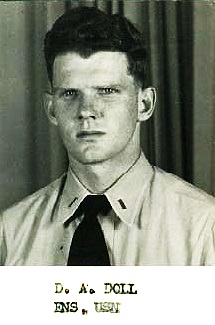
For some reason, I do not have a picture of that team and can only remember a few of the players. Besides King at center, we had Midship-man/Ensign Paul Petty and myself at forwards, LTjg A.G. Back and Lon Christensen at guards. Second team members were Ace Woolbright, Pat O'Rourke, and Joe Finey. Woolbright and Finey were tower operators and had been members of the base team the year before, which Whit, Petty, Back and myself played on while in the training command. We ended the season with a 20 to 7 won-loss record, having played some of the most powerful service and colleges in the South. I was high scorer with 321 or 12.3 per game, Petty was second with 241 and Christensen was third with 187.
Since there is no logical place to put it and since it fits within this time frame, a little about my family. Things at home were not very good. Dad was much worse than I had previously been led to believe. Brother Richard gave it to me straight. Dad had been to the doctor's several times and they couldn't stop his nosebleeds. Every time he sneezed, coughed or even raised his voice, it would start. That, plus his heart and stomach problems, was going to keep him from working, which put the burden on Mom. All this worry and extra work, hadn't been easy on her. She said that she didn't feel like working – always tired. To make matters worse, there was some dissension among the siblings. One night at supper, Dad said to Robert, Jack and Vicki Lu that they were spending too much money. Then, Jack pops up with "What do you care, it's not your money." Thank goodness neither Mom nor I was there. He would have had a knuckle sandwich for the rest of his supper. Richard was home from Bowling Green University at the time and took Jack aside and gave him the what for. Richard was going to quit college, come home, and get a job to help support the family. It took some convincing, but he finally gave in and stayed in College. I told him that now that I was an Ensign, I was making way more money than I needed, (a little white lie) and I would be sending money home and could even send him some now and then. That made him feel a lot better.
And there I was IN VF-41
N.A.S. JACKSONVILLE
16 FEBRUARY – 31 DECEMBER 1949
CHAPTER NINETEEN
Received my orders to my next assignment in mid-January to a fighter squadron just returning from their Mediterranean Cruise and flying Corsairs. I was detached from FASRON 6 on 16 Feb 1949 and reported in on the same day to my new squadron, along with a reservist LTjg Maurice E. Massey, who had just returned to active duty, And there I was IN VF-41. Naval Air Groups have insignias that identify them from other Air Groups. These are made into patches that are sewn onto the pilots’ flight jackets. Air Group 4 used Chessmen as their overall theme, which on the surface sounds pretty good. In reality, I think they were the worst in the Navy. Who wants to fight for a reclining yellow pawn? The patch for VF-41. An upright green pawn was VF-42 and I think the VA-44 and VA-45 were knights. I forget what VF-43 had exactly but it logically was a pawn. CAG (Carrier Air Group Commander) naturally was the king.
I had previously checked out in the FG-1D (made by Goodyear and had the birdcage canopy) with 4.9 hours flight time while with FASRON'S 6 attachment, COMFAIRJAX Training Unit, when I got word that I would be joining an Air Group assigned to the carrier USS Franklin D Roosevelt and flying F4Us. VF-41 had the oldest Corsairs in the fleet so we should have been one of the first squadrons to get jets and that should have happened that summer. Rumor had it that the jet would be the Grumman F9F-2 Panther. What a disappointment when that didn't happen. Got the F4F-5 instead. Checked out in the F4U-4 on the 24th. Training was fast and furious. Logged 25.1 hours in March doing a lot of bombing and gunnery. Along with our flying, we had to remain proficient in Navigation and Instruments, so we spent a goodly number of hours in the Link Trainer.
The first half of April was spent in Field Carrier Landing Practice (FCLP). Why FCLP that early in the training cycle I didn't know but I was enjoying all phases of "fleet" flying. Especially, the extra flying we bachelors got to do on weekends.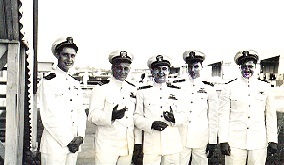
My collateral duty in the squadron was Assistant Material Officer and my boss, the Material Officer, was LT Dave Williams. I learned a lot about the Navy supply system in this position and when the money got tight, how to calculate how much flying we could do and stay within our budget. In March, our appropriation was cut so much that we got in only half of our normal flying and the next month, we were be down to only 4 hours per pilot. Just enough to get our flight pay. I also learned how stupid the Navy supply system was. When you were to go on a cruise, the squadrons had to take aboard a "full cruise box" as defined in Navy Regs or some such publication. What each squadron was to take aboard ship was exactly spelled out, so we ordered all the items on the list. Some of these items are expendables. When I tried to deliver these items to the various departments, their chiefs would get all bent out of shape and told me that they not only didn't need these items but that they didn't want them. Couldn't argue with their reasoning. They said that they just got back from a cruise and had all the items l was trying to give them. The non-expendables I could return to the supply system but the expendables, they would not take back, even though they had not been used. Made no sense but they told me rules were rules. Now, what do I do with all this Plexiglas and cruise boxes? I could throw them into the St. Johns River or give them away. I opted for the latter. I still have the cruise box.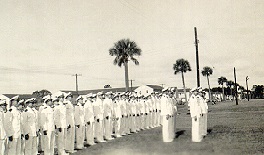
I didn't for a minute believe my skipper's soft soap reason that I was the best person for the job to fill the required slot dictated by the Base Commanding Officer, that each squadron provide an officer to act as "tour guide" for visiting organizations. I know I was selected because I was the lowest Officer in the squadron. We weren't called "tour guides" but Public Relation Officers repre-senting the Commanding Officer and the United States Navy. This was the place in time when the Navy was making every effort to placate and impress the civilian world that we were a great and kindly organization and deserving of the portion of the defense budget requested. And, we wanted to show off the base. As it turned out, it was a fun job. Two groups that I escorted around the base sticks in my mind. One was "The Wives of the Florida Watermelon Growers Association". The organization was having their State Convention in Jacksonville and, while the men tended to business, the wives were touring. I, and a LTjg from another squadron, commanded (commanded, what a joke) two LCMs from NAS JAX to the dock in downtown Jacksonville to pick up the ladies. When we had them all aboard and briefed on safety procedures we gave the order to the "coxen", to shove off, he was loaded. Sure sounded nautical, but I didn't have the slightest as to what it meant. After we had toured the base in the Navy buses, we went to the “O” Club for lunch and we “escorts" were invited to join them. That was great for it saved me the cost of a lunch. After the fruit salad, he and I were waiting for the main course to be served. We soon realized that we weren't going to get anymore when the speeches began and nothing else was brought before us. Damn women and their diets. The other tour was much better. It was escorting the choir from Florida University around the base all the time they were there. They were performing at the theatre that evening for all hands. Since there were many beautiful girls in the choir and since there were a large number of bachelors on the base, I soon became the most popular Ensign that there had ever been. Officers I didn't even know wanted me to fix them up with dates. I accommodated all I could. After the performance, all picked up their arranged for date and we took our group to the “O” Club for dinner and the evening. After dinner, we danced and had a few drinks. Then Jones and Delgado started telling risqué jokes. Not me. Think it was Jones's date that started chug-a-lugging every drink we ordered. When the jokes started, she seemed rather nervous. I think she thought that sailors were to be avoided and that since she couldn't, she was going to be raped. She soon passed out. The choir was on a curfew but the girls we were with weren't going to observe it. But, since the one had passed out, we had to take her back to the BOQ where they were billeted for the night. Jones, Delgado and his date decided they would be the ones to do this. My date and I sat in the back seat of Jones's convertible and necked while the others returned Jones's date to her room. The only hitch in the evening was that the chaperon was waiting for them and wouldn't let any of the girls back out. That sure threw a blanket on the party so my date decided she had best go in also. She was a beautiful girl and invited me to her home in Panama City whenever I wanted to come. Never did.
After basketball, our coach Captain Boerner, started a teenager baseball camp on the base and sponsored by the City of Jacksonville and the U. S. Navy. They expect 50 to 100 to show up at the camp but had 350 instead. It would have been more like 700 to 900 if they had handled it properly and done what Boerner suggested. Boerner never ceases to amaze me. He is a modest person but he had promises from his friends in the baseball world that they would come to his camp if at all possible. They were all in spring training and none in the Jacksonville area. Players like Bob Feller, Joe Dimaggio, Ted Williams, and Lou Boudreau. Now that is some friends. I, along with 15 other Navy men acted as coaches and we were surprised at how well behaved everyone was. They soon realized we were not going to take any crap from them and being on a Navy base helped a great deal. It really was a pleasant experience.
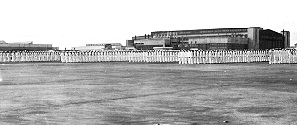 The first day of spring, I pitched my first game of the season after only three days of work out. I did a lot better than I expected, only lost to North Carolina University by 7 to 3. The score was tied 2 to 2 in the sixth when they got to me for several hits and several team errors for 4 runs. Held them the next inning but the coach relieved me in the eighth. Sure glad for I was getting mighty tired.
The first day of spring, I pitched my first game of the season after only three days of work out. I did a lot better than I expected, only lost to North Carolina University by 7 to 3. The score was tied 2 to 2 in the sixth when they got to me for several hits and several team errors for 4 runs. Held them the next inning but the coach relieved me in the eighth. Sure glad for I was getting mighty tired.
Again, with nothing to compare it to, I thought our squadron was a very friendly and a close knit group, including the wives. There was our skipper, LCDR John Paul Adams and wife Dixie; LCDR C. E. Smith, our XO; LT Dave Thompson, our training officer; LT Ben Adams, Maintenance Officer (Ben was shot down in WW II while flying in the South Pacific, parachuted safely, and went through a typhoon in that one man raft. Said he would be thrown out and would struggle to get back in only to be thrown out again. Doesn't remember how many times that happened but had just about given up when things calmed down.
After a week or more, he made it to an island and was later picked up. He was a very strong, well-built person. Looked like a fullback or linebacker); LTjg Tom Crawford, my mentor and our instrument instructor. Most of the time, I flew his wing. LTjg Johnny Hicks, administration Officer; LT Dave Williams and wife Marty, Material Officer; LTjg Lofton and wife Sally; LTjg Joe Massey, LT Lou Farber; ENS Spradlin; ENS Moose Donahoe; ENS Dan Dandrea; LTjg Ed Riley, LTjg Sandy Sanderson (Sandy got out of the squadron fairly soon but was assigned to the station as a station keeper. One day we were practicing our FLCP and Sandy shows up in a DC-3, joins the landing pattern and proceeds to shoot landings with us. I never thought you could do that in a DC-3 and I think there were others with the same thoughts); ENS Urban; and LTjg A. G. Back.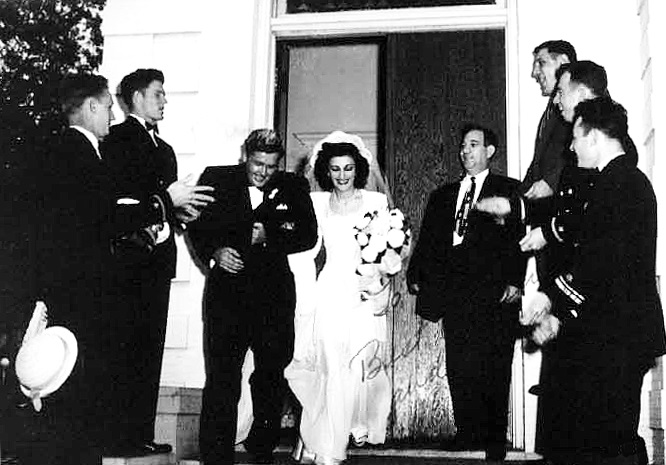
Many a weekend, Moose and I would go up and bore holes in the sky. Arrangements had been made for a Saturday, early morning takeoff. When I went in to get Moose, he was not only still asleep but also dead drunk. He said that he hadn't got to bed until the wee hours of the morning. I said I would go down to the line and cancel our flight. He said no to that idea and promised he would be alright. Said his head felt like it was an anvil in a blacksmith's shop the way it was pounding. I helped him get into his flight suit and I drove his car to our flight line. Got him into his Corsair and he immediately started sucking on 100% oxygen. At no time during our hop (formation take off, tail chases and a little dog fighting) could I tell that he had been drunk or even had been drinking. He got out of the Navy about mid-summer, returned to his home in Houston but soon notified the squadron that he was getting married to a Jacksonville girl and we were all invited to the wedding. He asked me to be his best man and I was honored. Moose, of course, was Irish and his future wife, Helen, was Greek. This meant it was to be a Greek wedding. I didn't know what I was getting into. Greek weddings are quite different from either Catholic or Protestant weddings. Three fourths of this one was in Greek so I needed a lot of prompting or cues for me to do my thing. In a Greek ceremony, the Bridesmaid (in this case, her sister) and the best man do all the work. Everything is in threes. First, the rings are brought up the aisle on a pillow, and the Priest places one of these rings on the right hand finger of the bride and one on the right hand finger of the groom. The best man then exchanges them three times, leaving them on the right hand. A crown was placed on each of their heads and connected by a ribbon that had to be exchanged three times. Then they walk around the altar three times with the best man hanging onto the ribbons. Then there were things we had to do with the candles and the incense. I was worn out when the ceremonies were over. Even the wedding party at the brides' house after the wedding lasted three days. I don't think I lasted three hours. Wow!!! What a party. Several years later, saw their picture and read in our local paper, so it must have gone out on one of the wire services, where Moose had wrangled a flight on a military plane (MATS), flown to Greece and returned with a baby that he and his wife had adopted. Article quoted Moose that there would be more.
Dandrea and I did a lot of fishing on our weekends. He had the car and he would find our fishing spots. We always rented a boat from one of the many fish houses near or on most all the lakes. Even at this time, the rivers or streams leading into the lakes were choked with hyacinths. Most of the time, we would have to travel these streams to get to the lakes from the boat docks and many is the time, we didn't think we were going to get through. They sure stop an outboard motor real fast. We had some good days and we had some bad days where we didn't even get a bite. We both enjoyed it, nevertheless.
We had a hurricane flyaway the last two days of August to the Symrna AFB near Nashville. Went to town that night to see the Grand Ole Opry and all the other sights of Nashville. What a bummer. The Grand Ole Opry was closed, the girls had thick ankles and calves from walking the hills in town and they rolled up the sidewalks at 6 o'clock. Married guys called home and found that the storm had missed Jacksonville entirely.
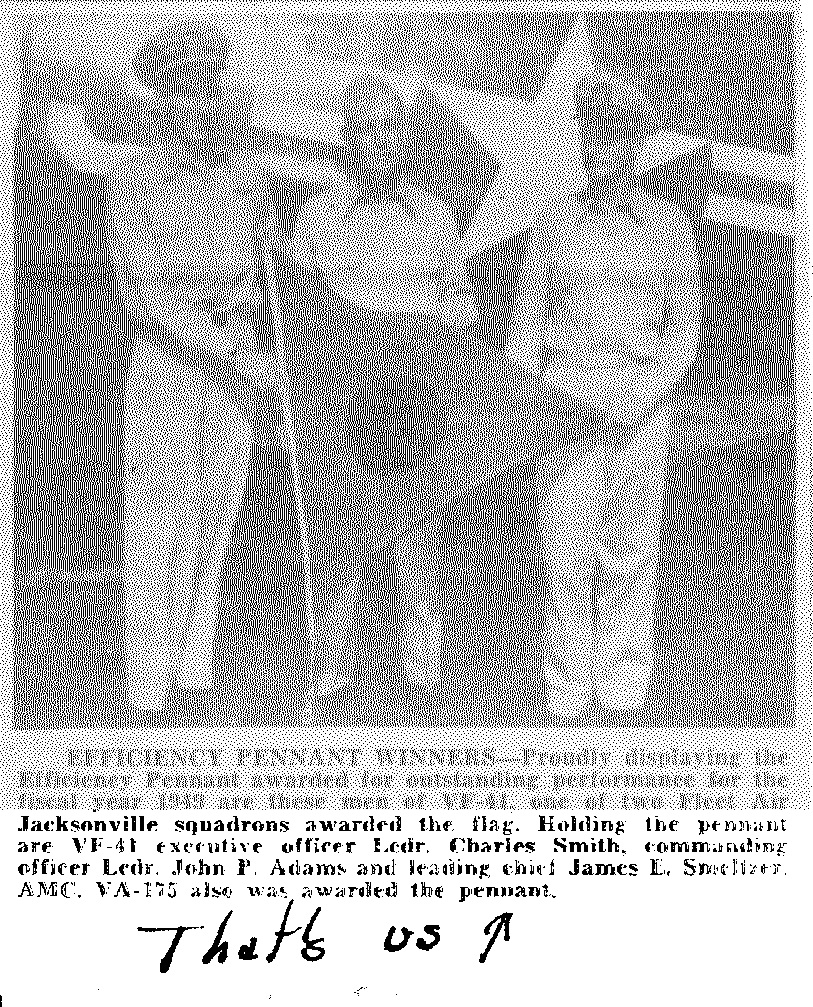
And there I was AT ANGELS 52
VF-41 AT N.A.S. JACKSONVILLE
SEPTEMBER – OCTOBER 1949
CHAPTER TWENTY
VF-41 was flying the F4U-4 when orders came down from ComAirLant via dispatch 132225Z of April 1949 for our squadron to ferry all our 4s to NAAS Oceana and exchange them with VF-21 for their 5s. The squadrons' flight to NAAS Oceana on 18 April was uneventful. The return trip was not.
This being my first fleet squadron, I had nothing to compare anything to. I know that VF-41 was proud of they way they maintained their planes, both for looks and for maintenance. We delivered planes in top-notch condition to VF-21 and got crap in return. They were filthy both inside and out. We almost didn't accept them and probably would not have if it hadn't been so urgent for VF-21 to have the F4U-4s. They were scheduled for deployment shortly and either they hadn't mastered the F4U-5 or it wasn't considered suitable for carrier ops at this time. In any case, we finally did accept all the 5s but only after some work was done on some of the planes.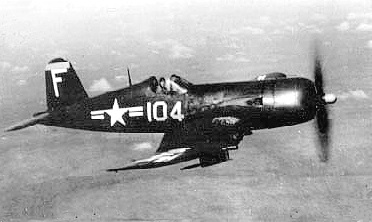
Except for the cowl air-inlet scoops at the four and eight o'clock position on the 5 versus the single scoop at the six o'clock for the 4, there wasn't much difference in the looks. The 4 had a R-2800-18W engine developing 2,100 hp at take off with water injection for combat whereas the 5 had the R-2800-32W engine developing 2,300 hp for take off at sea level and an automatically controlled two-stage, variable-speed supercharger. The book lists the F4U-5 as capable of a maximum speed of 480 mph at 26,000 ft and a rate of climb of 5,240 fpm. Not discernable, the nose was offset 2 degrees lower for improved longitudinal stability and increased forward vision or so the handbook says. With that hose nose, you are never going to have any forward vision when coming aboard the carrier. They must mean in straight and level flight, which in a fighter, isn't very often.
The checkout by the VF-21 pilots was rather brief. We were strapped in and one of their pilots was standing on the wing looking into the cockpit explaining a few things that were different from the F4U-4. I was pleasantly surprised to see that the pilot "checking" me out was LTjg Gatewood. We had been in the same Advanced Training flight flying the F6F Hellcat. Now we were both flying Corsairs. The Navy moves in mysterious ways! He explained important things like, the top of the rudder pedals would fold down so you could stretch out your legs on long hops, a nice cigar lighter for those who smoked, arm rests and canopies that closed hydraulically instead of the laborious way of cranking them open and closed. Oh yes! And the consoles were rearranged to add to the confusion, not to mention the automatic cowl flaps. Other than that, and maybe a few other minor things, the 5s were similar to the 4s.
After rendezvous, we started our migration south. Why me? The most inexperienced pilot in the squadron. I knew I was in for a long and troublesome flight when, upon take off, I pushed the button to close the canopy and nothing happened. Had I been knowledgeable in this plane or had not been the boot Ensign in the squadron, I probably would have been smart enough to return to base. After what seemed an eternity, I finally got the canopy cranked shut. This was made more difficult than normal for I wanted to stay in formation. This required my speed to be faster than you would want when cranking a canopy closed. Then, my cowl flaps started to creep open, requiring a little more throttle to stay in formation. Found a spring-loaded switch that would override the automatic feature and I could close the cowl flaps, except they would immediately creep open again. If that wasn't enough to be concerned about, my hydraulic pressure gauge needle started fluctuating. Notified our skipper and he said to let him know if things got worse or if anything else started going wrong.
With the added drag caused by my cowl flaps, it later became a strong concern of mine that I might not have enough avgas to get to Jax. So informed the skipper and he decided that the entire squadron would land at Glynco, Ga and refuel. After I made my break and was configuring my plane for landing, I noticed that the wheels did not indicate down and locked. I know I should have done things differently but I was fed up with this plane so I exercised emergency procedures and blew the wheels down. They then indicated down and locked so I maintained my landing interval and put the bird on the ground. I knew that I should have gotten a visual but that ole fuel gage was mighty low. Wasn't going to mess around. When I told the skipper, LCDR John Paul Adams, what I had done, he wasn't too happy. Not that I should not have blown the wheels down under the circumstances but now there was a problem getting the plane to our home field. I didn't know it was so time consuming and such a problem to bleed the system to get the wheels operating normally again. It was decided that I would switch planes with our maintenance officer and he would fill up the hydraulic fluid tank and fly the relatively short distance to JAX separately but with an escort and his wheels down. He was definitely shook up when he finally got to the Naval Air Station. He said that blankety blankety plane. He almost had to bail out. He was afraid the engine was going to blow, the cylinder head temperature got so high. He also apologized to me for thinking, not saying, I was paranoid when I told them how bad that plane was. That plane became the hangar queen until we got the others up to our standards and the supply system caught up with this model of Corsair.
There was no question that the F4U-5 was superior to the F4U-4 in many aspects. How true the following is, I can not prove but as, I believe Danny Kaye sang in one of his movies, "I heard from a guy who heard from a guy who heard from a guy next door to him." However, the following is factual and fits in with the events that follow. Another example of the Navy moving in mysterious ways. Congress asked the Navy if the Reserves were ready in case of another war and, of course, the Navy answered in the affirmative, so Congress calls the Reserves back to active duty. Because the Navy didn't have enough combat ready planes available for both the Regulars and the Reserves, the Reserves got the Regulars planes and the Regulars got the Reserves planes. Are you still with me? There was a hurricane flyaway on 8 November 1948 to Scranton-Wilkes Barrie from NAAS Oceana but all the F4U-5s were grounded because of cylinder trouble. They stayed on the field but were well tied down. The following appears to substantiate the reason they were grounded. The Army, Navy and Marines participated in a joint exercise called "Operation Combine" somewhere in Florida. I talked to several pilots from the Midway Air Group upon their return from the maneuvers and they said that the Navy lost only two pilots, which was pretty good since the Army killed 8 of their men when the bombers dropped bombs on their own troops. Something is drastically wrong when anyone gets killed in any peacetime operation. The following is what I can not prove but it does fit in with the grounding of the F4U-5. A Reserve squadron, which had received the first of the F4U-5s, was participating in this joint service exercise. They were on alert to protect the forces against incoming bombers when the order to scramble was passed. Evidently, the bombers were close to their objectives when discovered, for as soon as the Corsairs were off the ground, they were vectored at buster for intercept. At the time, the F4U-5 could draw 105 inches in the combat mode so the squadron was climbing for the intercept at this power setting. It soon became apparent that this was too much for the engine, as one pilot after the other declared an emergency when the cylinder heads started going through the engine cowling. There were a lot of wheels up landings in fields all around the area. This may have caused the two fatalities. In order that such an event would not be repeated, the Navy had "governors" installed to limited take off to 65.5 inches manifold pressure. Without the pilot's handbook, I am not sure of the 65.5 nor that combat power was 10 inches more.
In the summer of 1949, word was floating around that the Army and the new Air Force didn't see a need for either the Navy or Marine Air since they could do every thing they could, and do them better. They even boasted they had a plane that could fly so high and so fast that there wasn't a plane that could touch it. That plane was the B-36. I guess things got hot in Washington and the Navy wanted to prove the Air Force wrong. Whatever the reason, VF-41 was given the mission to intercept and shoot down (with gun cameras) a B-36. Sometime in late September or early October we undertook that mission. My being the junior member of the squadron, I flew tail-end Charlie in the eight-man flight. Even though the F4U-5 was designed for high altitude, a large number of our hops did not require oxygen, and if we did, it was between angels 15 and 20. I don't recall our squadron having a lot of trouble with the automatically controlled two-stage, variable-speed superchargers, we just planned on them cutting in at different times on different planes so we loosened up the formations around 20,000 feet until all reported "in blower". These prop planes were not pressurized and the oxygen supply was not automatic above 35,000 feet, or thereabouts. This meant the system went from pressure regulated to unregulated. Unregulated was a very tiring way to breathe. Oxygen was forced into your lungs and you had to forcibly expel it. Trying to talk was next to impossible so this flight became rather quiet when we got to altitude. This flight was prearranged between the Navy and the Air Force and we were vectored towards the B-36. I was very uncomfortable flying at altitudes above 20,000 feet so I flew without gloves so I could continually observe the quick of my fingernails to see if they were getting blue. As high as we finally got, I don't think it would have made any difference. By the time I would have noticed them getting blue, it would have been too late. We continued climbing until we sighted the B-36 and obtained the extra 2,000 feet altitude for our gunnery runs. Around 50,000 feet the sky became darker and the curvature of the earth was noticeable. AND THERE I WAS AT ANGELS 52. When we did sight the B-36, we were considerable behind but were slowly overtaking him. We wanted to get ahead so we could make a modified high side gunnery run. Strange things began to happen, things I had never experienced before. I noticed I was slowly drifting back from my place in the formation so I did as you normally do. I added a little throttle. Nothing happened so I added a little more. It seemed I got considerable behind before I started slowly moving up on my section leader. As I got closer to him, I retarded a little throttle but I didn't slow down any that I could tell. I took off a lot more as I continued ahead and eventually passed him completely. How embarrassing! On closer observation, I discovered I wasn't the only one having trouble staying in formation. Well, we got in a loose right echelon and started our gunnery runs after "arming" our guns. As I dropped my left wing to roll into my run, I lost all lift and started down like a rock. My reaction was, "Oh shit". Maybe I can get a shot from below. No way. That first run was a disaster. The next several runs were marginal but I did get the nose around enough for half way decent runs. I think the B-36 had as much trouble at this altitude as we did. He did no evasive maneuvering but flew straight and level. Personally, even though we got him on our gun camera film, I think he could have shot us down if it had been for real. I like to think we were a major factor in stopping the movement for only one air arm. Actually, it was the Korean “War” which put an end to that movement. I know, as interesting as that flight was, I wouldn’t want to do it again. Things up there just didn’t “feel” right.
John Crommelin: A Tribute
By CDR Harold L. Buell, USN (Ret.)
I first met John Crommelin when he was a commander and Air Officer aboard USS Enterprise in July 1942. I was an ensign flying SBDs in VS-5 and had experienced combat in the Battles of Coral Sea and Midway, including the loss of my first carrier, USS Yorktown.
Crommelin had an outstanding reputation as both an attack and a fighter pilot. It was said he could fly any plane the Navy had, and the crate it came in. He was also highly regarded as a tactician.
As Air Boss that summer, Crommelin ran everything aeronautical on the ship. Between battles he had the air group conduct dive bombing and strafing attacks on a float sled towed behind the ship. This allowed the pilots excellent practice while giving him a chance to see how each individual performed. He also liked the air group to make simulated attacks against the ship with fighters, dive and torpedo bombers, attacking from all angles and speeds, often barely clearing the flight deck and island structure, without a word of censorship from him.
Due to the limited flight experience of many of the pilots, there was real danger involved. Years later, as a rear admiral, Crommelin told me he felt the risk of someone crashing while "attacking" the sled was more than compensated for by the excellent schooling the gun crews received in tracking, and simulating firing at our planes. He credited this training as the reason the Big E’s guns shot down more Japanese aircraft than any other U. S. carrier in the Pacific.
Solid leaders were needed that first year of the war and as Air Officer and XO of CV-6, John Crommelin was one of the best. In this period, four of the carrier vs carrier battles were fought, as well as the Guadalcanal invasion. Enter-prize was in the midst of it all and for a time was the only operating carrier at sea, in spite of sustaining, hits and casualties on three occasions. The rock-like char-acter of "Uncle John," (one of his sobriquets – another was "Mr. Enterprise") kept things going, probably the most important ingredient in making the Big E the finest combat carrier to fight in WW II.
Enterprise returned to the U. S. in June, 1943, Crommelin was promoted to Captain, and he left his beloved Big E to become chief of staff for RADM Henry Mullinix, COMCARDIV 24, aboard USS Liscome Bay (CVE-56). I was assigned to VB-2 aboard the new USS Hornet and deployed in 1944 for a third combat tour. I did not serve under Crommelin again, but the influence of this man on me during our one year together was the single most important positive factor in my development as a leader of dive bombers.
On November 23rd 1943, Liscome Bay was torpedoed by a Japanese submarine, exploded, and sank. RADM Mullinix was lost along with 644 officers and men. Crommelin was caught while taking a shower and, clad only in soap suds, made his way to the flight deck where he directed fire fighting and abandon ship procedures. After swimming for more than an hour, he was pulled from the ocean naked, wounded, badly burned and covered with oil – a survivor.
CAPT Crommelin continued to serve in senior positions of Naval Aviation until war's end. One of his most important responsibilities was helping select 8,000 aviators for the regular Navy from 36,000 reserve pilots. The 8,000 would become the backbone of Naval Aviation for the future.
In July 1946, he became CO of the U.S.S. Saipan (CVL-48), the Navy's newest carrier which, operating out of Pensacola, Florida had the primary mission of training student flyers in carrier landings. A secondary mission was to host groups of SECNAV VIPs who visited the ship.
Under his command, student accidents on and around Saipan reached the lowest level ever. As for VIP demonstrations, the never-reticent Captain John was in his element and the shows, in which he also flew, were the talk of both the Navy and civilian communities.
"I want those dignitaries to know that the captains of our carriers can fly as well as handle a large warship," he said at the time.
Three years from this high point, with a career unmatched in Naval Air, John Crommelin suffered the humiliation and the crushing end to that career from the hands of lesser men in American government and the Navy. It is a sordid tale of deceit and political maneuvering. On a brass plate beneath his picture in the Carrier Aviation Hall of Fame aboard USS Yorktown in Charleston, South Carolina, the citation reads in part:
"In 1949 (he) sacrificed his 4.0 career by precipitating the ‘Air Admirals Revolt’ that saved carrier aviation.”
After commanding VF-84, I was ordered to Saipan as Air Officer in 1953 for duty in Korean waters. I wrote RADM Crommelin, now retired, explaining that fate was sending me to his old ship, and did he have any advice for me?"
His reply: "Saipan is a good ship, handles well, has good speed for aircraft recovery; you should do well with her." He added, "Always do what you know is right, like we did on the Big E in World War II. Hal, I am confident that you al-ways will. Good Luck."
After retiring from the Navy, I earned M. S. and Ph. D degrees, and had a second career of 20 years. I did not see or hear from RADM Crommelin during this time. Then, in May 1988, with my wife Molly, we attended a symposium at the National Museum of Naval Aviation in Pensacola. At the Mustin Beach Officers Club we found the lobby crowded and noted a group clustered around an elderly man. It was John Crommelin.
We were standing in the background when this wonderful old man, wearing no glasses, spotted me. He prodded his admirals aside and said, "I see Hal Buell over there. Isn't that you, Hal?"
"Yes, sir, Admiral John," I said. We embraced. It was a very emotional mo-ment. He introduced me as one of his Big E boys and told them what a great dive bomber pilot I was. After nearly a half-century Crommelin, my idol, was openly praising me before a large crowd!
In 1990 Crommelin asked me to visit him in Montgomery, Alabama where he had settled. "Plan to spend at least two days with me," he said. He was 88 years old then.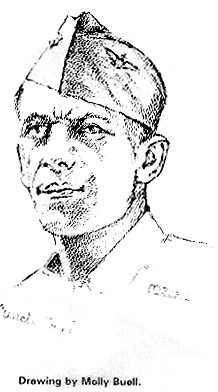
Realizing this note was more a summons than an invitation, Molly and I met with John and his wife, Lillian. He and I sat down and held a non-stop discussion on the past, as if we were trying to make up for all the years we had gone our separate ways, realizing these few hours might be the last we would share.
The next day he took me to see the granite obelisk WWII memorial which overlooks highway 213 from a wooded knoll on the old Crommelin plantation called Harrowgate Springs. Designed and created by him, it was unveiled on Independence Day 1988, revealing this inscription:
"This monument is dedicated to the brave Alabama men who did not come back home from World War II and it is also a symbol of the five Crommelin brothers’ great faith in God and Country and love and devotion for their parents, John and Katharine Gunter Crommelin.
Naval Aviator wings are etched into the granite on all four sides of the main shaft along with detailed data on each of the five brothers.
At the end of that day Admiral John said, "I am 88 years old and don't have much time left. So this is probably it for us. But haven't we had a wonderful day?"
It is difficult for me to find the words for a final epitaph so I will quote CAPT Jim Arbes, another Crommelin shipmate, who wrote:
"Squadron personnel would do his bidding without question as they had faith in him and felt he was always right. It could be said that he created a subconscoius armor of faith in the US. Navy for those under his command or who came under his influence .... I had many other skippers in my time - all of them good men - but none like John Crommelin. He was an outstanding leader, Naval Aviator and an all-around fine gentleman.”
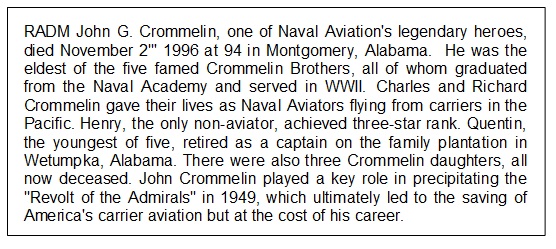
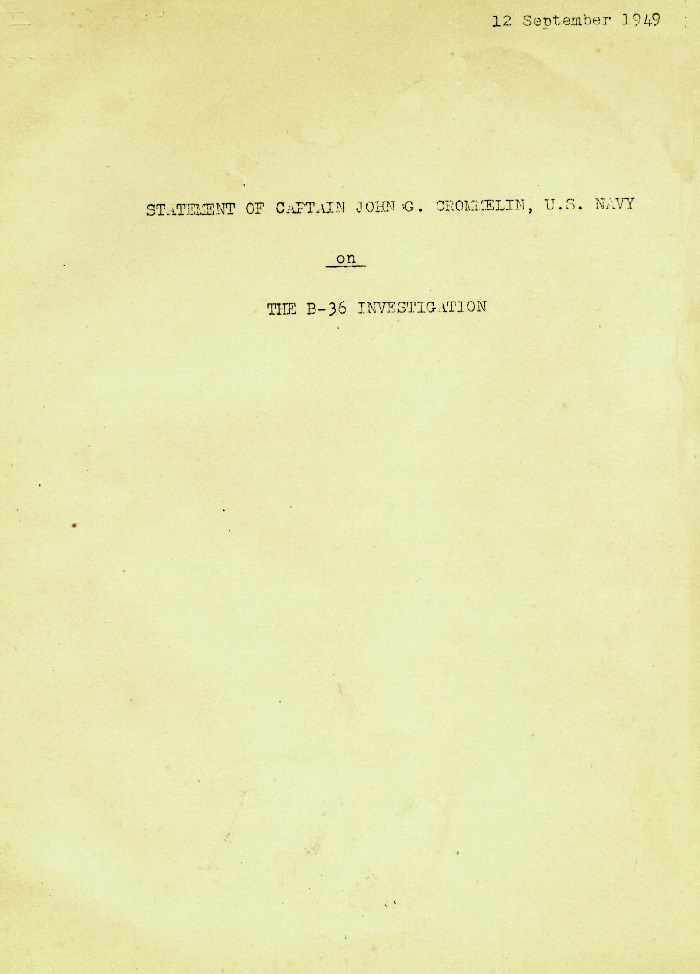
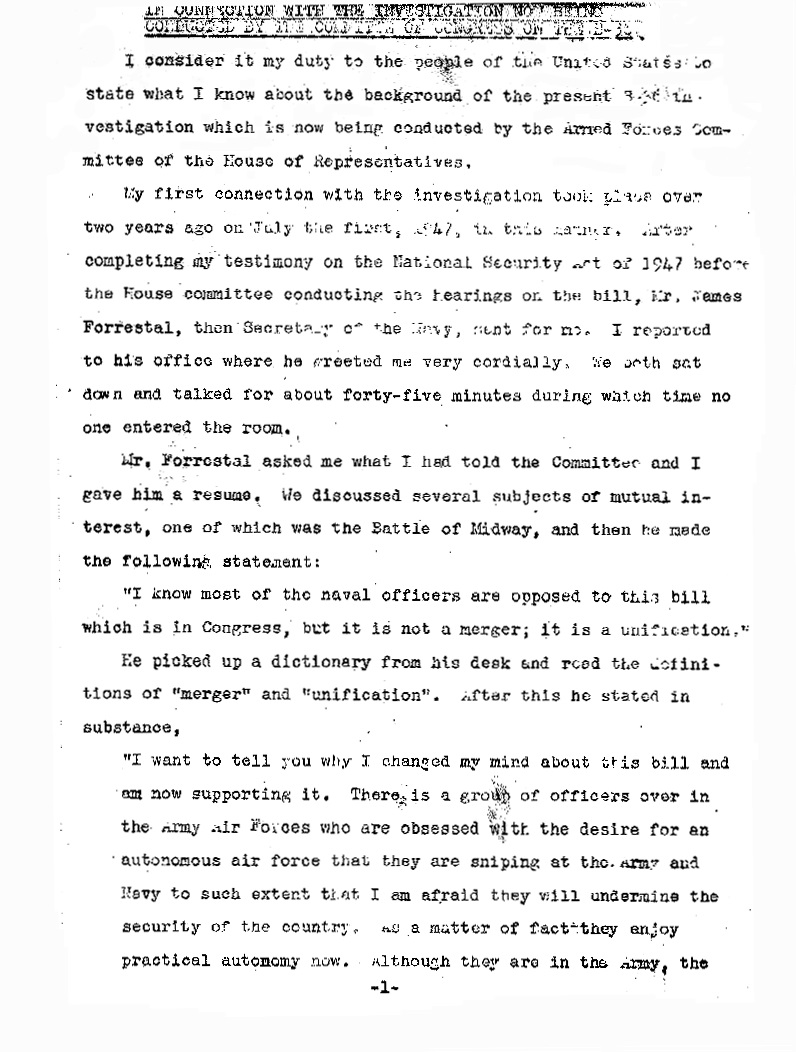
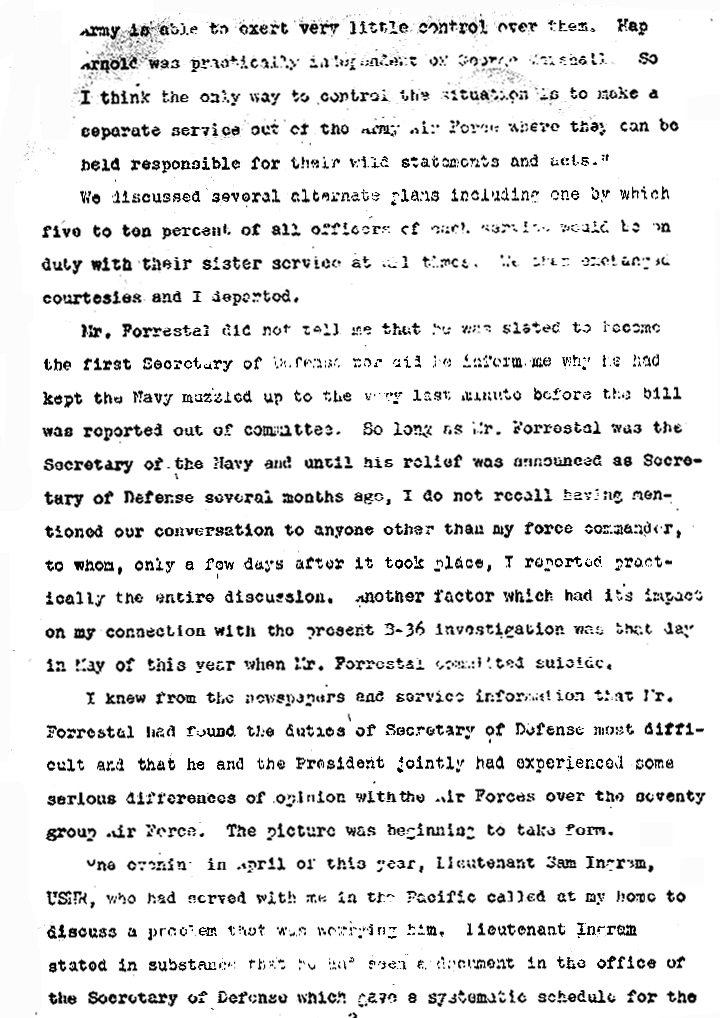
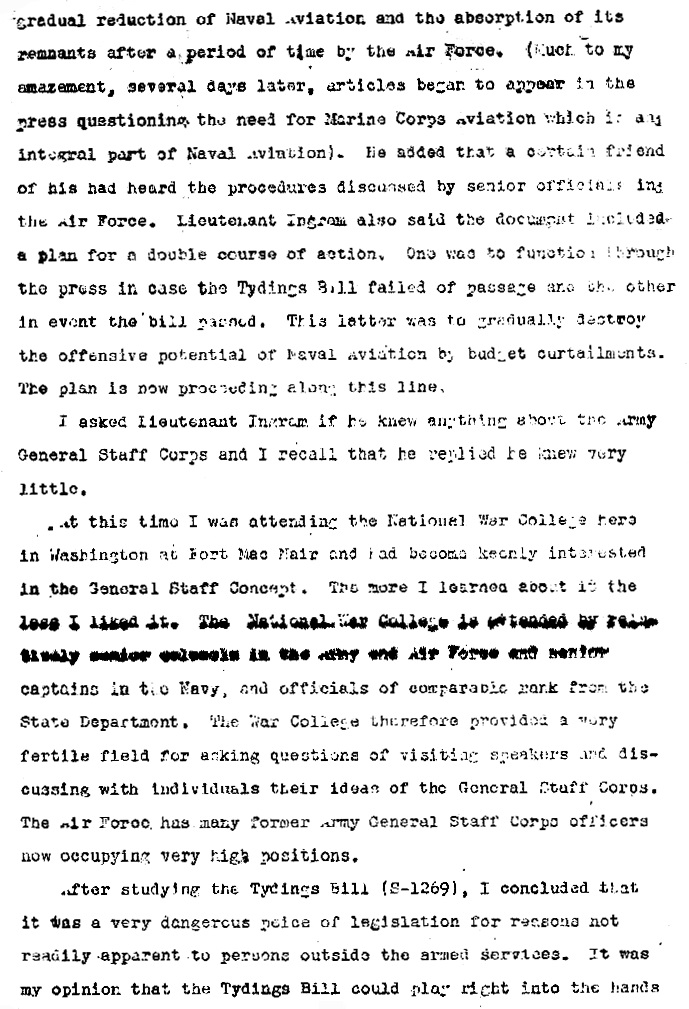
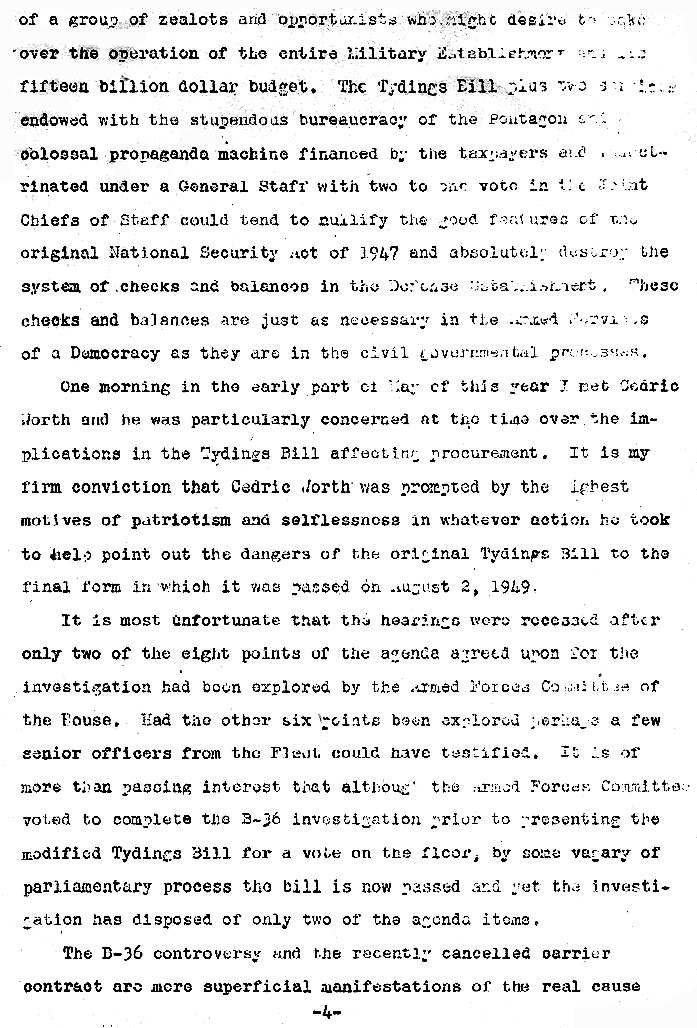
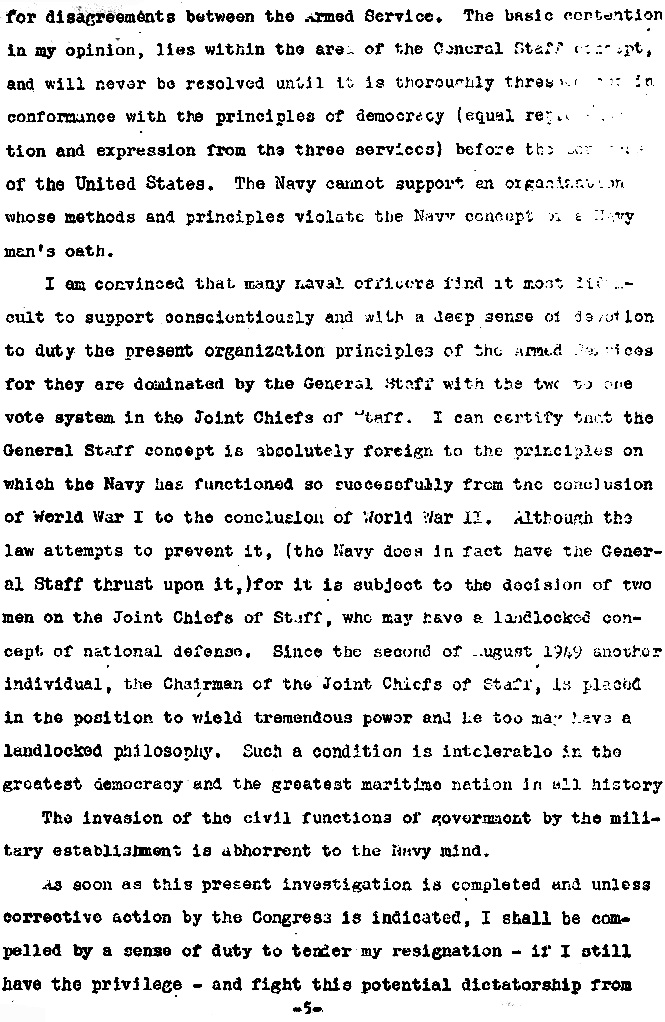
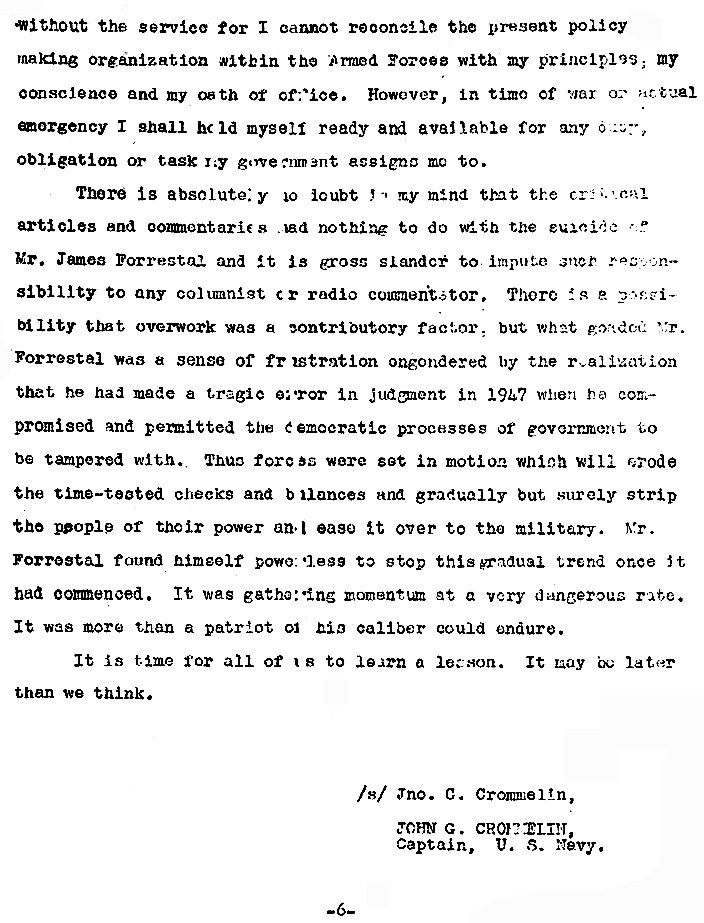
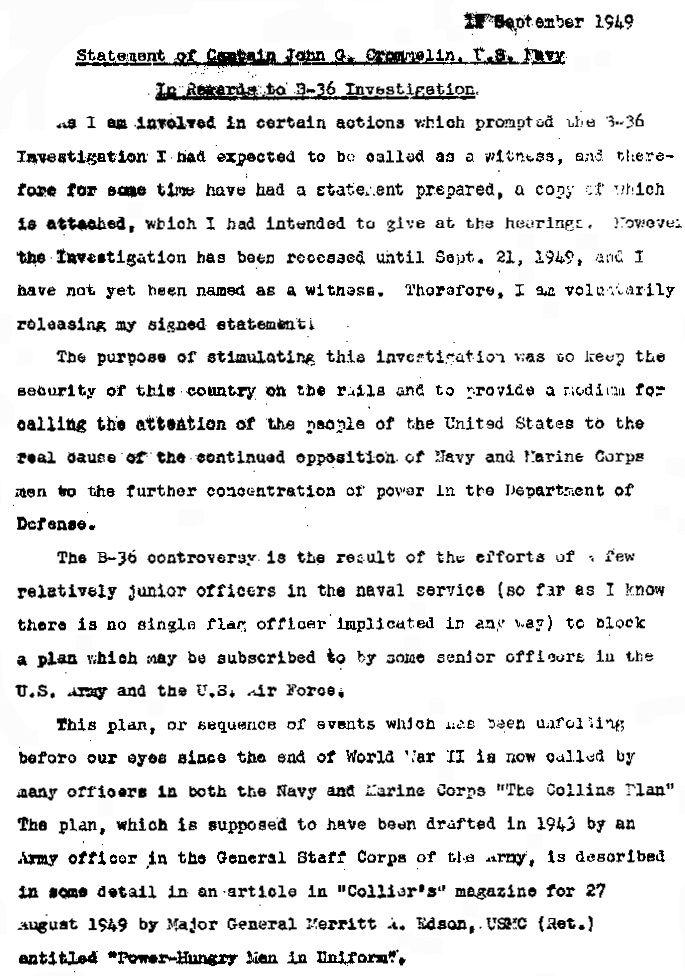
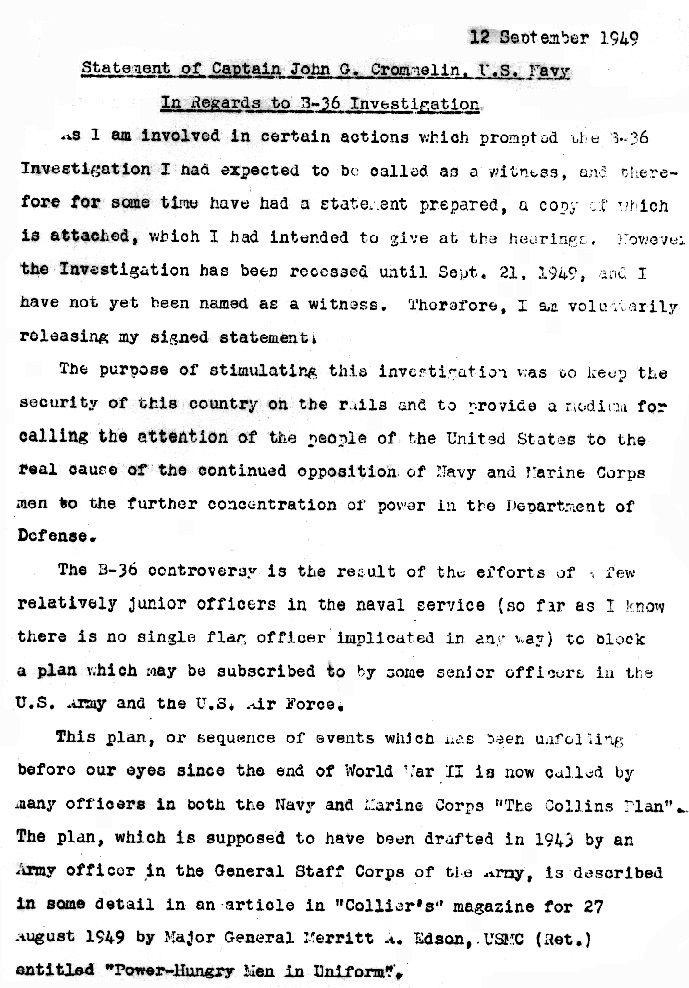
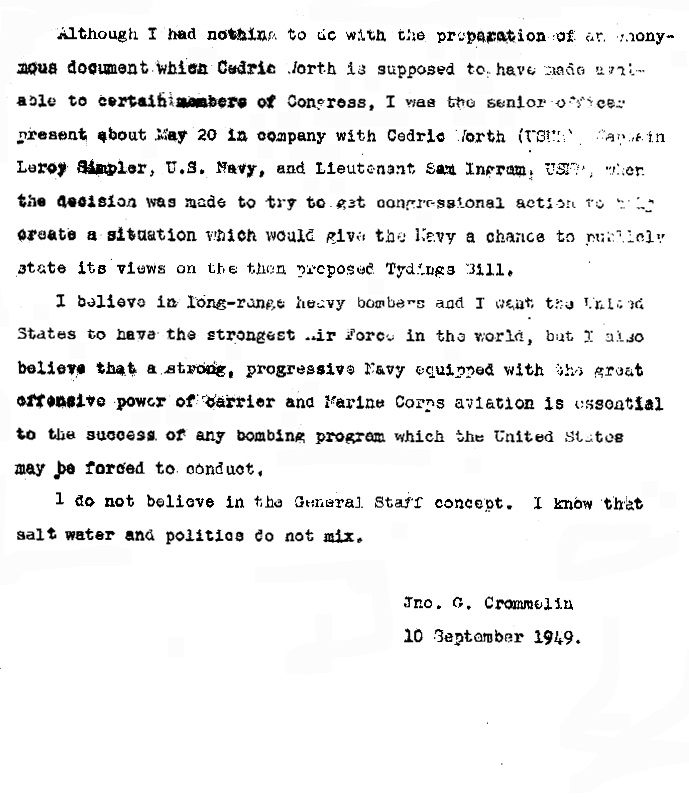
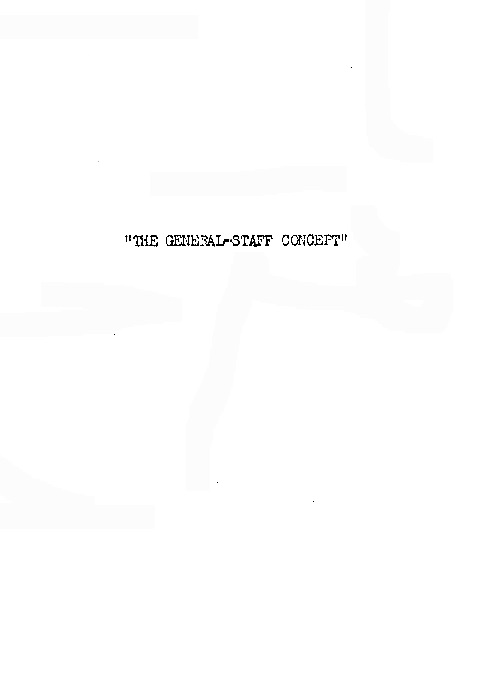
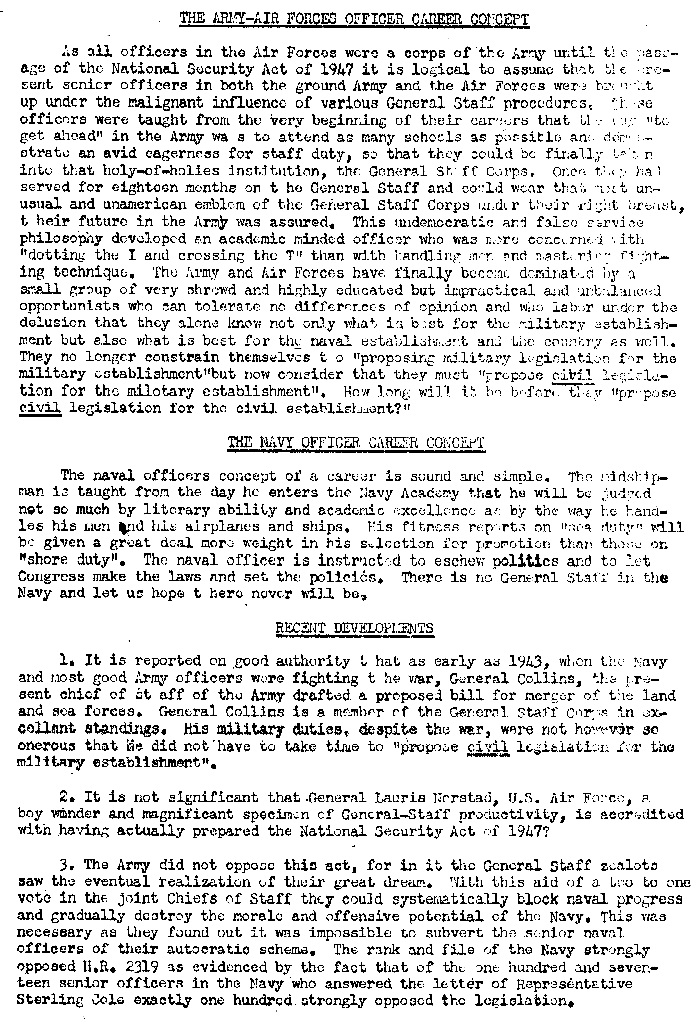
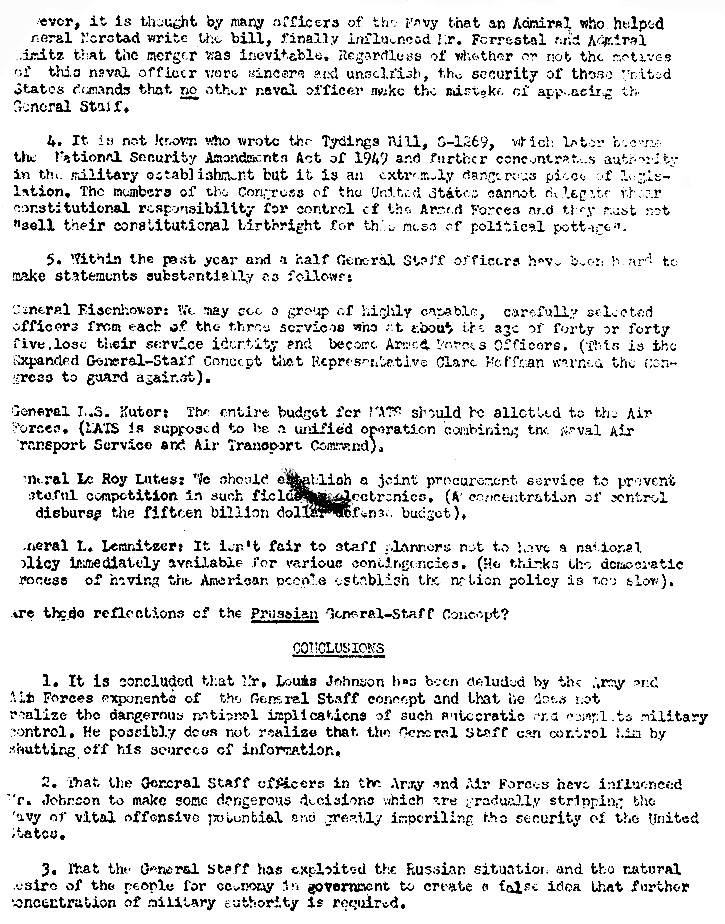
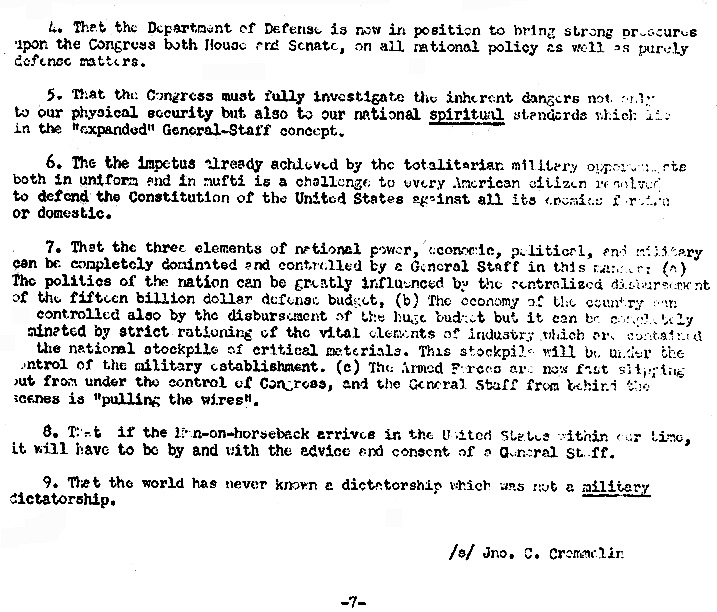
And there I was ON A X-COUNTRY TO CMH
VF-41 AT N.A.S. JACKSONVILLE
11 TO 14 JUNE 1949
CHAPTER TWENTY ONE
Under normal circumstances, this would have been a routine cross-country. As it developed, it was anything but routine. Tom Crawford, Urban and myself, all bachelors, decided to go to Port Columbus, Ohio for our required syllabus cross-country. Or so it was logged. We were flying the F4U-5. We stopped at NAS Cherry Point for refueling and then to NAS Anacostia in Washington, D. C. The weather forecast was for some scattered thunderstorms over the mountains in Pennsylvania. Since Tom was the senior pilot and our squadron instrument instructor, we had him lead this leg of our journey even though we had filed for a VFR flight (Visual Flight Rules) but with the threatening weather, we wanted him in the lead. As it turned out, it was a wise choice. Somewhere near the middle of the state of Pennsylvania, we flew into a solid overcast and had to go on instruments, or rather, Crawford did. Before we knew it, we were in the nastiest weather I had ever been in. Daylight turned to darkness, the clouds were as black as the ace of spades, the rain was in solid sheets and lightning was everywhere. With the lightning and the rain, our radios were useless. The D. F. needle and our magnetic compass were spinning like crazy and therefore useless, and there was nothing but static on the coffee grinder. Once in a while, there would be a brief break in the clouds and we could catch a glimpse of the ground below. How desolate it looked. Nothing but mountains and valleys being pelted with the rain. The longer we flew the worse it got. The turbulence within the thunderstorms was tremendous. If you think the Blue Angels fly close, you didn't see we three that day. The rain was so heavy and the clouds so dark that I could hardly see Crawford’s plane and we were almost touching. I think Urban had the same thoughts as I did. I wasn't about to lose Tom because I didn't have the slightest idea of where we were. Had I lost him, I feel I would have been a goner. After flying for over two hours in the stuff, we finally broke out. Much to my surprise, we were back to Anacostia instead of Pittsburgh. Tom later told us that he was having one hell of a time trying to fly around the line of thunderstorms and then, when we were solidly in them, couldn't get any fix on the radios. He was flying blind most of the time and finally, very slowly for our benefit, turned around and headed to the east. I knew I could trust him in such circumstances. He checked the map and had us flying several thousands of feet above the highest peak shown. Just to be on the safe side. When we landed at Anacostia, we had been in the air for 2½ hours. We didn't have much fuel remaining in our tanks. Having worked so hard just staying with Tom, I looked like I had spent all that time out walking in the rain. I was soaking wet with sweat. Spent the night in Washington at Tom's friend, LCDR Day's house. Spent the next night in Norfolk, refueled at Cherry Point and returned to NAS JAX on the 14th of June. That was the hairiest flight I was ever on. Hope I never have another one like it.
And there I was ATTACKING THE USS MIDWAY
VF-41 AT N.A.S. JACKSONVILLE
31 AUGUST – 9 SEPTEMBER 1949
CHAPTER TWENTY TWO
The word came on the 25th of August that we were to have a hurricane fly away to an Air Force Base at Symrna, Tenn., which is not far from Nashville. That day, we were having more FCLP practice in preparation for our impending short cruise aboard the USS Midway (CVB-41). We flew the squadron to Symrna on the 26th and everyone was anxious to get into Nashville for a night of fun. Ladies and gentlemen let me tell you a fact of life. Without the Grande Ole Opera being in town, and it wasn't, Nashville rolls up the sidewalks at six o'clock. Needless to say, we stayed on the base the rest of our stay in Tennessee. Flew home on the 29th (hurricane missed Jacksonville) and had one day to get ready to go aboard the Midway. Had the squadron duty on the 30th. This made it very difficult to also get my clothes from the laundry, pack my sea bags and help LT Williams get the last minute material ready for the men to take with them when they boarded the LSI that night for their trip to the Midway. That day, I was humping.
We finally got word to fly out to the ship around noon on the 31st. I made five landings and then was struck below on the hanger deck. Then I really had to start working. My first time aboard ship and I had to start getting materials for the men and planes. That might not have been so bad but my boss, LT Williams, had the only key to our material box with all our records and forms and he didn't make it out to the ship that day. Somehow, my storekeeper and I made it through that day and the next by borrowing the necessary forms from other squadrons. You can't get anything in the Navy without a chit.
We didn't do anymore flying until the 7th of September but we didn't really mind. The ship docked in New York City and we had three days of liberty in the Big Apple. Docking was quite an experience. We did it without the help of the harbor tugs, although they were “standing by”. We had most of our planes parked on the four “corners” of the ship, tied down with the tails pointed outboard. All planes were manned with pilots and the engines running. Upon hand signals from officers on the deck in front of each section of planes, we would turn up the engines a predetermined amount. This thrust was used to move the ship around as necessary to put her gently against the dock. Worked slick as a whistle.
Since I had spent considerable time in the city while in the V-5 program at Stevens Institute of Technology across the Hudson River in Hoboken, NJ, I was the unofficial guide for things to see and places to go. Saturday was the Diamond Horseshoe and a few other places. Sunday, it was "Hats Off To Ice of 1950" then to the Taft Hotel for dinner and the bar. Monday, we saw the stage production of "Mr. Roberts". The weather prevented our flying the first day out of New York. Finally, on the 7th they launched the entire Air Group – 38 plus planes. Wished they hadn't for it was a screwed up affair. The ceiling was between 1100 and 1800 feet with rain, our skipper, LCDR John Paul Adams had engine trouble and had to return to the ship. Our Executive Officer, LCDR R. G. Smith spun in on take off and was lucky to get out alive. All he had were a few cuts on the head. When the skipper, A. G. Back and myself went to sick bay to see how he was, we thought he was sedated and asleep but just as we were leaving, he opened his eyes and said, "I am sorry, skipper, that I wrecked one of your planes." He was more concerned about that plane than how lucky he was that he was still alive. That day I logged a 1.5-hour C.A.P. (Combat Air Patrol) hop. Under normal conditions, the Corsair isn't too difficult to bring aboard the carrier even though, because of the long nose, you must maintain a constant turn all the way to where you get the "cut" otherwise you will lose sight of the LSO. If that happens, you might as well add the coal to the engine and go around for the LSO for sure will not give you a "cut". In order to keep the LSO in sight while in the turn, you are looking out the side panel of your canopy. Coming back aboard this day was my first time landing aboard a carrier in the rain. Without windshield wipers, (I doubt that they would have any effect even if our planes were so equipped) it is very difficult seeing anything looking through any part of the canopy. We always took off and landed with our canopy open so the only way you could keep the LSO in sight, albeit very limited and very much blurred, was to stick your head out in the slipstream and squint enough to keep the water out of your eyes. Obviously, your goggles would be of no more use than your canopy was. I guess it goes without saying, the more difficult the situation, the harder you work to do it right. I don't know that I became wet from the rain or from the concentration sweat. Must have done things reasonably well since I received a "cut" on my first pass and landed safely.
Collateral duty a nice way to say "your other job" and consists mostly of paper work. This is one job the Navy assigns you for which you have had no previous training. And as soon as you feel somewhat comfortable in this assignment, they will switch everyone around and give you a different job that you know nothing about. This does get one familiar with all the positions in the squadron and prepares one for command. It would be chaos without the fully trained and qualified enlisted men, however.
When pilots are not flying and can sneak away from their collateral duty, doesn't have the duty and otherwise, has free time, you will most times find them occupying "Vultures Roost". This is a space reserved for the pilots to observe landings, located up in the island structure, faces to the aft end of the ship, which is also the ramp of the flight deck. This space is open but covered by the deck above. All the carriers of this era and class were the straight deck type. This required all planes to be parked on the forward portion of the flight deck after landing. This area was "protected" from landing planes, which might miss a wire, by steel cables stretched across the flight deck spaced about 12 inches apart and racked to about six feet high. This barrier was hydraulically raised and lowered as the situation dictated by an enlisted person standing on the catwalk. After a plane successfully engaged a wire and was stopped, the barrier would be lowered while the plane's hook was being raised back into its stored position. The plane was then directed to taxi forward over the barrier, which was now flat on the deck but immediately raised after the plane had passed, to an assigned parking place on the forward portion of the flight deck. I was in "Vultures Roost" observing the landings of all the planes returning from their flight. My squadron had all made it aboard on their first pass and now VF-42 was landing their F4U-4s. One of their pilots was getting a lot of signals from the LSO. Everyone in Vultures Roost could tell he was really having trouble. When he got near the ship, he got into a higher than normal nose high attitude, was too slow and was sinking (loosing altitude) as he approached the ramp. The LSO frantically gave him a wave off, which he attempted to take. The Corsair is a very dangerous monster when “gotten" into such a situation. When full power is added (as in a wave off) the torque of the engine, the slipstream of the propeller and the gull wing of the plane, all combine to make the plane want to roll to the left. When this pilot, being low and slow, did that, his plane did as predicted. He passed over the corner of the flight deck where the LSO and his crew stand when directing the planes in their landings. At this point, he was inverted and his left wing scrapping the deck where the LSO had been. For just such situations, there is a net that extends out over the water for this crew to jump, dive, or otherwise escape to when necessary. And this time, it was definitely necessary. When the left wing made contact with the deck, it helped the plane to continue its roll. The plane hit the water in the upright position, the pilot unstrapped, stood up in the cockpit and grabbed the sling from the helicopter and was returned to the flight deck without getting wet. Ensign Farnsworth was one lucky pilot. He and the Commanding Officer of VF-42 were immediately called up to the bridge to answer to CAG (Commander Air Group), the Air Boss and the CO of the Midway. Ensign Farnsworth wasn't even shook up the least little bit. Anyone else would have been shaking like a leaf in a storm. They proceeded to remove his Wings and he never flew in the Navy again. (His record through flight training wasn't too good, with several accidents and Unsats. He probably should have been washed out by the training command.) I don't know whether the Navy Photographer used a rapid wind still camera or got it on movie film but he got the entire incident. It was such a spectacular series of pictures that they were featured on the cover of Life Magazine. I wish I had saved a copy of the magazine.
My next two flights, one on the 8th and the first one on the 9th were two of the strangest I had ever experienced. On the 8th, the winds were a steady 65 knots across the deck with gusts to 80 knots. Never having been in such wind conditions before, I wasn't sure just what to do. I thought that I better start my turn at the 180 degree position a little sooner than normal starting about half way between the island and the LSO. By the time I got to the 90 degree position, I was so far aft of the ship that I almost lost sight of her. I immediately took a wave off and proceeded up the right side of the carrier taking an interval on the plane ahead. I did this five more times, each time starting my turn further to the bow of the ship each time. On the 6th try, I started my turn 45 degrees ahead of the ship and by the 90 degree position, I just knew that I would come out of my final turn still ahead of the ship. As it turned out, I was still a little bit sucked behind the ship but not so much that I made it aboard. While the winds may have been quite strong, the seas were fairly calm so the ship wasn't doing any dancing around. While taxiing ahead of the barrier to my directed parking spot, folding my wings in the process, my mind no longer concentrating on getting aboard, my first clear thought was that I was really going to get chewed out by my skipper for taking so many wave offs. He never was too pleased when anyone in our squadron had to take a wave off due to the pilot's misjudgment. I was feeling very low as I unstrapped from my plane and stepped onto the flight deck, waiting for the next plane to park next to mine. What a happy moment it was when I saw that the plane which had landed after I did was my section leader, LTjg Crawford who had a lot more flight time than I had. He probably knew why I had such a grin on my face, for he had to go around one more time than I did. The pressure was off me.
The next to the last day was 2.1 hours of gunnery but the weather conditions were just the opposite of the day before. Dead calm. The same thing over again but in reverse. It wasn't as bad as the previous day but it did take several passes to determine how far past the stern before starting your turn. As I understood it, the ship needs 7 to 10 knots speed through the water to maintain steerage and can make about 30 to 32 knots putting out all she's got but doesn't like to put on that much speed for it sure shakes and strains every part of the ship, or so it seems. Normally, we landed with 35 to 40 knots of wind over the deck so these two days were anything but normal.
The next day was our last day and was the big flying day. Total hours that day was 6.7 hours with 2.1 hours of tactics in the morning, followed by another 2.1 hours of the most hair raising group tactics hop I had ever been on. The entire Air Group was up for this hop. VF-41 was flying high cover; VF-42 was flying intermediate cover just above the AD dive-bombers of VA-44 and -45 with VF-43 flying low cover. The idea was for the Air Group to conduct a coordinated attack on the carrier. I don't remember how many planes each squadron had in the air that day but it seemed like thousands. We had 12 up, and that was a record for those new F4U-5s. The Navy was still getting the bugs out of them. Our high cover was around 20,000 feet. This coordinated attack was to pinwheel around the carrier so that in a real combat situation, the enemy would not be able to train their guns automatically but would have to rely upon each gun being aimed at individual targets. Hopefully, there would be so many targets that most planes would get through the barrage. The scenario was that the high cover of fighters would start the attack by diving and strafing the ship followed by the intermediate fighters doing the same, followed by the dive bombers then followed up by the low cover fighters to mop up. When the air group was in position, CAG gave the signal and the battle was on. Since the Air Group was circling the carrier in a massed "formation", we had a clear path for our run. Each four-plane division got into a right echelon and peeled off individually. When my turn came, I rolled into a steep left turn, pointed the nose down And there I was ATTACKING THE USS MIDWAY. That first run was neat. Since we were to strafe the ship, we didn't have any altitude restrictions so that gave us the license to flat hat. Now the battle plan was not for us to hit and run but to return to altitude for additional runs. This is where it really got hairy. I was amazed that there weren't any mid-air collisions during this exercise. By the time we had finished our first run, others were in theirs and all pinwheeling around the ship. In climbing out, we had to dodge the ones coming down and when we were making our second run, we were dodging the planes pulling out of their attacks. It doesn't take a genius to predict what ensuing runs were for all those participants. My head was on a swivel so much that I never got the ship in my sights again. It was more a survival from our own planes than it would have been from any shooting from the ship. I don’t know that that was, or became, standard practice but thank God, I didn’t have to be part of another attack like that. Everyone landed back aboard safely, refueled, and was launched on a 2.5-hour flight to NAS JAX.
And there I was LANDING ON THE FOO DEE ROO
VF-41 AT N.A.S. JACKSONVIILLE
12 OCTOBER 1949
CHAPTER TWENTY THREE
VF-41 was not a night fighter squadron so why did we have to practice night FCLPs and make some night passes and landings on a carrier? I suppose, hopefully, that the reason was, in case we got caught out after dark on one of our missions. After three night FCLP hops, we were scheduled to fly out to the USS Franklin Delano Roosevelt (CVB-42), otherwise known affectionately as the FDR or the FOO DEE ROO. The carrier was somewhere about 100 miles off the coast of Georgia so it wouldn't be too long a flight. Night flying is logged as such, as soon as the sun goes down, which leaves about one half hour of reasonable light and even more if you are at the higher altitudes. Unfortunately, we were not scheduled for our “Charlie” (shipboard flag, flash, signal light and voice meaning for the planes to land) until well after dark. There were quite a few planes schedule for qualifying that night. This will always be preceded with a “prep Charlie” meaning prepare to land. This is the signal for the first planes to come aboard after the ship turns into the wind and is preparing to take on aircraft. The ship does not like to be on the landing course without planes landing since this will take her away from her “steaming” course. In order to keep this from happening, the sharp squadrons will have come past the ship in a right echelon formation with their hooks down, on a course which will be parallel to the ship’s course once it finishes its turn into the wind. The first plane will be turning the 90-degree point in the landing pattern when she finally settles on course and signals “Charlie”, meaning, we are ready and you are clear to land your planes. “Course” is usually with the wind 10 degrees off the port bow so that the stack wash will not be in the path of a plane approaching the ship for landing.
Life magazine, along with Sylvania, dreamed up a stunt that, if successful, would help sell their magazine and be excellent publicity for Sylvania. Sylvania would cover the FDR with 10,000 flash bulbs (the kind that were round in shape and blue in color). These were all strung together and arranged to show off the entire ship once they were set off. The photographers were to be in a whirlybird, in a good position to set off the flash bulbs and take the picture. Synchronization was obviously a must. I don't even want to estimate how long it took them to string all the wire, locate all the outlets and insert those bayonet base flash bulbs into their sockets. It had to be many, many hours, if not days. This was the time in our history that all the armed services were knocking themselves out for good publicity in order to influence the appropriation committees of congress. At any other time, I don't think the Navy would be so cooperative.
Well, the ship was all set for the big moment to arrive. That moment being when the photographers thought it dark enough for the best picture. In the meantime, the scene shifts to a flight of planes leaving shore, reporting feet wet (crossed the shoreline from land to sea) and asking for a steer (directions) to the ship. In order for the ship to do that, they had to turn on the radar. When they did that and the energy was transmitted in that circle created when the radar unit rotates, it set off all the flash bulbs. Talk about some upset people.
I don't know if that was the problem or not, but we had to go into a holding pattern, circle and circle and circle and wait our turn to land. Things were running so late that we made only two touch and go landings. And there I was LANDING ON THE FOO DEE ROO, returning to NAS Jacksonville, and logging 2½ hours in the air. Without belly tanks, we were pushing the envelope on the time we could stay flying.
I guess things settled down on the FDR and they reloaded all the flash bulbs and got their picture the next night. It was on the cover of Life. Again, wish I had saved it.
And there I was A BLUENOSE
VF-41 AT N.A.S. JACKSONVILLE
1315 12 NOVEMBER 1949
CHAPTER TWENTY FOUR
In preparation for our upcoming cruise into the north Atlantic, we spent one FCLP hop practicing CCA (Carrier Controlled Approach) to be used in bad weather. Radar controls you until you are almost to the carrier, at which time the LSO picks you up for the final portion of your approach. Hopefully, you will be at the proper speed, altitude and aligned with the deck upon seeing the LSO. Felt pretty good after the hop since I had made three passes and got three cuts, whereas some of the more experienced pilots didn't. This is very similar to the GCA (Ground Controlled Approaches) which we were "proficient" in doing. In a week, we would leave for our cruise aboard the USS Midway and joining up with units of the SECOND Task Fleet. This exercise would involve some 45,000 men and over 100 ships. This was not to be small potatoes.
Our pre-cruise briefings covered cold weather flying and survival. We were each given a list of Eskimo words and what they meant in English in case we had to crash land and Eskimos would find us. Or rather, chose an English word and the chart would tell you what Eskimo word to use. I will always remember the word for food. In Eskimo it is “nooky-nooky”. Don't know why but this just stuck with me. The most important part of cold weather flying was the “poopy suit”. This was a one-piece suit made of rubberized canvas. The boots were part of the suit and to make it “waterproof” there were wide and tight bands of rubber at the wrists and at the neck. Getting that tight neckband over your head when putting the suit on and when taking it off was no easy task. When properly fitted and worm, it was supposed to keep you warm and dry if you had to ditch in the water. It was awkward to wear and quite cumbersome when getting in and out of the cockpit. When ready to man your plane, the well dressed pilot will have on his “poopy suit”, fleece lined gloves, sheepskin helmet with a oxygen mask hanging therefrom, a knee pad with all the navigational notes, charts, briefing notes, etc., carrying your plotting board, and wearing your yellow “Mae West”.
On the 27th of October, the air group flew to NAS Norfolk, where, upon landing, we taxied our planes with the wings folded, across and down main streets on the base, through Breezy Point Naval Station Norfolk until we reached the dock where the Midway was tied. There we left the planes to be towed or pushed into position for the crane to lift each plane onto the flight deck. The men and material were air lifted by MATS (Military Air Transport Service).
The USS Midway, along with the other battle aircraft carrier USS Franklin D. Roosevelt, Light Cruiser Roanoke, Heavy Cruisers Albany and Newport News, Anti-Aircraft Cruiser Juneau and 16 Destroyers made up the Strike force. While it was not listed as such in the Summary, flying was not a high priority on this cruise. Someone said that flying was 7th. This exercise was to test men and materials in cold weather operations along with primarily, anti-sub procedures. I won't say that our anti-submarine defenses were lacking, but a sub surfaced between our carriers, never having been detected. That sure makes you feel “safe”.
There were not many “calm” days from when we left Norfolk on the 31st of October (boy, a lot of things happened on my birthday – even Halloween) until we returned on the 22nd of November. I think I flew as much as anyone else in our squadron and it wasn't much, mostly because of the lousy weather and rotten seas. My flight time was as follows: .7 hours on the 3rd; .5 hours on the 7th; 1.6 hours on the 20th, 2.0 & 1.9 hours on the 21st. I suppose, because of the uncertain flying conditions, we carried full belly tanks on each hop. And every hop, we had to drop them still full of fuel. The reasons were either we were returning to the ship to land shortly after take off or we were engaging “enemy” planes in our duties of protecting the task force. The only reason I mention this insignificant item is because I was in the “supply” system as the assistant Material Officer, I knew that each of those belly tanks cost $150. To me, that was a lot of money to “throw away” and that is not counting the cost of the fuel that was in them.
Our first scheduled day to fly was the 1st of November but flight operations were cancelled due to rain, high winds up to 60 knots, and rough seas with huge swells. The ship was rolling and pitching so much that it was hard staying in your bunk that night. My roommate, LTjg A. G. Back and I found out why each bunk was fitted with the same kind of side bar protection as on a baby's crib. It does keep you from ending up on the deck. As an indication of how high the swells were and how rough the seas, our ship sustained minor damage when the in port “quarter deck” was ripped off the ship. I felt sorry for those serving on the Destroyers. I would watch them being hit by a wave and it would be such a long time until I saw them again that I thought they were a submarine. Water would be cascading off the superstructure as though it just surfaced from being under water. Maybe they had. Quite a few sailors got mighty sick that night.
The first two days at sea, I had the ready room full of cold weather gear that I had drawn from ship's supply for our 150 men. What a job, getting each paired with their size and their signature for each item issued. Obviously, this procedure had to reverse when we returned.
I didn't think the seas had abated enough for us to fly on the 3rd but what did I know. The seas were still breaking over the bow of our carrier and that is normally about 60 feet above the water line. They had all the planes that were scheduled to fly, located as far to the rear of the flight deck as possible so that the first planes off had as much deck as possible for their take off run. As it was and always will be, we, being the fighter squadron with the no. 1 in its desig-nation, were the first off and normally, the first to land. The very first plane to take off was our skipper, LCDR John Paul Adams. Someone really screwed up and gave him the take off signal at the wrong time. As he got near the end of the deck with his take off run, the ship's bow was pointing down and skipper just barely missed the wave breaking over the bow by going airborne before he normally would have. Well, I don't think he needed his mike as he told the ship's deck crew and whomever else he could think of what he thought of that launch and that it better not happen again. After that, it may have taken a little longer but the rest of us were launched as the ship's bow was coming up. I really don't know what CAG, the air boss or the skipper of the Midway was thinking but we had no sooner joined up and were climbing to our altitude when the signal came to “prep charlie”. There went the belly tanks.
This would be only my 24th carrier landing and all the rest had been under calm sea conditions. This one was definitely going to be different. Our pre-flight briefing told us how to fly the carrier approach in weather such as we were having. Now, I got to see if they knew what they were talking about. Don't chase the ship. Let it rock and roll all she wanted to. You keep the top of the island on the horizon as this was the center of the ship and remained rather constant when the bow and stern were dancing up and down. So that is what I did. We broke at a slightly longer interval than we normally would knowing that it was going to take everyone's full concentration to get everyone back on board safely. Flying the downwind leg, I maintained the island structure on the horizon as instructed and even though I was concentrating on that aspect of my landing pattern, I couldn't help but notice the angry sea 75 feet below me. Gigantic waves with white caps and the wind blowing them into a white spray. At the 90-degree point of your approach, you shift your eyes to the LSO and follow his instruction the rest of the way to the ship. Now, you could really see how much the fantail was going up and down. All you could do was maintain your approach and hope the ship was in the correct position for you to get your “cut” for landing, assuming you have been answering the LSO's signals to his satisfaction. I was lucky on my first pass as I reached the “cut” position just as the fantail was approaching its highest position. Total flight time – .7 of an hour. Our squadron put one of our planes out of commission on this hop. Quite a few of our pilots had to make several passes as the ship just wasn't in the right configuration to receive a "cut.” The LSO learned a lot about landing planes in rough seas this day also. He cut one of our planes being flown by LT Bo Merv just as the fantail was coming up. The landing approach had been a little on the high side as it related to the position of the landing area so after the “cut,” the pilot slightly dove for the deck. Well, the plane is coming down rapidly and the fantail is coming up rapidly and when they met, the impact popped all the rivets and made the gull wing Corsair a straight wing disaster with the oleo struts of the landing gear protruding through the top of the wings. That plane was a strike.
The seas had not improved much by our next flying day on the 7th. Under normal conditions, the Corsair is a beautiful carrier-landing plane. Once it hits the deck, it stays down. Course, this day, again things were not normal. We lost two planes. The first was LTjg Joe Massey. The seas were very rough with heavy swells causing our ship to dance around like a cork. First it would roll one way and then the other plus pitching up and down and then swishing back and forth. If there were any other motions possible, she did them. Anyway, right after take off, Joe's engine began running rough. He called for a deferred emergency. That meant that it was not critical but he wanted to land as soon as possible. When all the planes had taken off, they gave Massey the signal to land. He made a good pass and just as he got the cut, the deck swished out from under him and when he dropped the nose in order to spill the air from under the wings and stop his “flying”, he found himself looking down at the catwalk. Normally, you see the centerline of the deck. All he could do was drop a wing and try to fly back to part of the deck. Well, once you drop a wing in the Corsair at landing speed, you never get it level again. Joe hit the deck in this attitude and needless to say, he stuck. Ironically, he came to rest right on the centerline of the deck at about the number three wire. The only trouble was that both landing gears sheared off, the prop busted when it struck the deck causing sudden engine stoppage and along with the damage to the wings, flaps and some other minor things, this F4U-5 was a strike. Later that same flight, LT Ben Adams brought his plane in and hit a little hard, bounced into the air slightly but enough so that the tail hook missed all the wires and ended up hitting the barrier. Normally, the damage isn't too bad – a bent prop, damage to the landing gear skirts and maybe a few other dents and scratches. Nothing that our mechanics couldn't fix. This time, they thought the plane also had sudden engine stoppage, which meant an engine change. It was decided to wait until we returned to Norfolk to repair this one. Started with 16 planes. Now we were down to 13.
As tough as it was for our planes to get safely back aboard, it was much worse for other carrier air groups. Although it was not in our sailing orders or in the op plan, a third carrier joined our task force about the second or third day out of Norfolk. I don't recall which carrier it was but I do know that she had a squadron of F8Fs aboard. This carrier with its deployed air wing had been down in the Caribbean on their ORI (Operational Readiness Inspection) or something similar. Unless it is an all out strike and all carriers in a task force launch and recover at the same time, for safety reasons, the normal operational sequence is for one carrier to launch her planes just prior to the sister carrier's recovery of her chicks. The carrier that just launched then has an open deck in case there is a fouled deck on the carrier conducting landings. With these straight deck carriers (before the advent of the canted deck ones) if a plane crashed or went in to the barrier, there would of necessity be a lengthy time delay before the wreck could be cleared so that the next plane could land. By the nature of the mission, planes could be returning low on fuel and require a clear deck without too much delay. These planes low on fuel could be then be diverted to the sister carrier with the ready deck. The F8F at this time was the fastest plane the Navy had. It was light and all engine. I don't know how well it came aboard in calm seas but here in the north Atlantic where a calm sea would be a miracle, the F8F was a disaster. I don't know what their normal time in the air was but I don't think it was as long as the Corsair or the AD. We would watch them break, enter into their landing pattern and start landing. Four or five would make a successful landing and then we would see one go bouncing up the deck and end up nose down and tail up in the barrier. The remaining planes in the air would be diverted to our ship and the sequence would be repeated. Fortunately, by the time one went into our barrier, the other ship had cleared away the damaged plane and was ready to resume landings. By the time we returned from this cruise, the F8 squadron did not have a plane in flying condition. 16 of 16 into the barrier. And no fault of the pilots. The F8 was just not a good carrier plane under these conditions.
Our op plan called for an attack on Argentia but the weather didn't cooperate and this was cancelled.
I think this cruise was designed to maim or kill us all. They sure weren't leaving anything out. The night that I had the mid watch (2400 to 0400), it was darken ship. 8 November was the date. I think I was lucky to survive the experience. Among other things, it is the responsibility of the duty officer to assure the safety of our planes. This means checking the tie downs on all the planes on the hanger deck as well as those on the flight deck. On a dark and stormy night with the ship pitching and rolling and not allowed to use a flashlight, I barked my shins and cracked my skull on those openings in the passageways where they have located the watertight doors (raised threshold and low head room). Also, I was tripping over all the plane tie-downs, which had been doubled and tripled due to the rough seas. You quite often run into them when there is some light but in total darkness, it is like the horror house at a state fair. This you do each and every hour.
The next night was one of the roughest of this cruise. I don't think anyone got any sleep for fear that if they did, they would pick themselves off the deck. If you didn't hang on to those bed side rails, you could easily go over them. Chairs scooted across the room from one side to the other, and it takes one heck of a roll for a carrier to get over far enough for this to happen. I thought we were never going to be upright again. If that wasn't very near the maximum roll a carrier could experience and not capsize, I bet it was mighty close. We had our typewriter braced between two heavy boxes and come morning, it was smashed. With the temperature dropping, both air and water, and the seas as rough as they were, the destroyers looked like floating icebergs. They appeared to be completely covered with ice from the mast down. I really don't see why sailors like destroyers so much, but they do. In seas such as these, all they can do is tie themselves to an immovable object and eat sandwiches. What a way to live.
On the 10th of November, we launched 4 planes and almost immediately recalled them. Someone finally made a wise decision for they had not been back aboard very long when we entered a snowstorm and were so enveloped for hours. Visibility was practically zero. At this time we were at latitude 55 degrees north steaming up Baffin Bay heading towards the Arctic Circle at 66 degrees and 32 minutes north. Our op plan calls for the task force to cross the line and then head south. The USS Midway reached the Arctic Circle at 1315 on 12 November 1949 “And there I was A BLUE NOSE“.
We continued to get some flight time in on our way back to Norfolk. However, we lost another plane on the 20th. I was sitting on the deck waiting to make my deck run take off in the number eight spot when I saw LTjg Johnny Hicks take off, raised his wheels, started his climbing right turn, and then the plane went nose high, stalled, dropped the left wing and went into the cold Atlantic nose first at an almost vertical angle. The water was about 31 degrees F and we were all wearing our “poopy” suits. Everyone feared that Johnny wouldn't make it but lo and behold, he surfaced and the helicopter dropped a sling, he grabbed it and was lifted back aboard our ship within minutes. Talked to him in sick bay following my hop. He was blue when he got back aboard the ship because he had ripped his “poopy” suit slightly getting out of the cockpit. This let in too much cold salt water for his body to overcome and keep his temperature up within the safe range. He said that when he hit the water, the plane started sinking immediately. He had started to unbuckle everything in preparation of exiting the cockpit as soon as he could after the impact. He then got his oxygen mask and radio lines disconnected and started to exit the cockpit. He got almost out when his parachute pack got caught on something holding him from freeing the plane. He said that things were getting dark rapidly. He forced himself to pull himself back in towards the cockpit to dislodge the chute. He was finally successful but now he was almost out of breath. He pulled the two cords on his Mae West, which inflated and carried him rapidly to the surface. He suffered very minor bruises and some hypothermia. Other than that, he was back on flight status in a day. Hicks was an experienced carrier pilot on his second cruise. The safety officer conducted his required investigation into the accident but I never heard the outcome. I know it was not pilot error. Skipper had him fly as soon as the doc gave his OK so that Johnny wouldn't have much time to think about the accident and get psyched out. If it had not been for the protection of our “poopy” suits, he would not have survived. Case in point. One of the destroyers had an officer and an enlisted man washed overboard near the bow wearing their standard cold weather gear. The officer was never found but they were able to rescue the enlisted man near the stern of the ship. How long would that be? Certainly, not very long but he died several hours later of exposure. Certainly, a very hostile environment.
The 21st was our last day of flying and the most successful, if not in length of time in the air then for the type of hop. This day, we were to be under attack by the planes from the “enemy” base at NAS Quonset Pt. RI as well as their being the target for our attacks. The seas were not too rough but the weather was lousy. I don't know how the task force did it but we stayed in the “eye” of the storm all day. This clear area must have been 20 to 30 miles in diameter for we had plenty of room to maneuver. Completely surrounding us were the blackest clouds I had ever seen. These looked to start at the water line and go to 40 thousand feet or more. Heavy rain could be seen in many areas when you could see anything under the clouds. Our squadron's primary mission was to protect the fleet so our station was circling over the ships on Combat Air Patrol (CAP). Since the location of the fleet was not normally known to the enemy and any of our planes returning from a mission had a good idea where we were, enemy planes could tag along with our returning planes. It was also our job to make sure these bandits didn't get near the ships. This day I was flying as the number four plane in the skippers division with LTjg Tom Crawford my section leader (the position where I flew most of the time). Because of the large number of planes scheduled for the strike on NAS Quonset Pt, there wasn't any free deck left for our squadron to make deck run take-offs so we were catapulted. My first. Wow!!! What a boot in the butt that was. All I could think of when being positioned on the cat was I sure hope this thing doesn't misfire (it had been known to happen and this is referred to as a “cold shot”) and I would dribble off the bow and into the water. Our division joined up following take off and climbed to about 5000 feet and circled and circled while awaiting the return of our ADs. I sure didn't envy those guys going into those dark and foreboding clouds. I guess the reasoning was that we knew where Quonset Pt. was and the ADs could find it fairly easily, although returning to the ship might be another matter altogether. Some could not find the fleet on their return so went back and landed at Quonset Pt. We were in constant contact with our CIC and under their direction. They had several bogies on their screens but none ever reached our clear area. We returned to the ship after a very boring flight. My second hop that day was anything but boring. This was almost a scramble flight. Radar had picked up multiple planes heading our way and they seemed to know exactly where we were. Another cat shot and back in the number four slot. The next two hours were most exciting. CIC directed us to a certain heading at such and such altitude and kept us informed as to the disposition and range of the bandits. We soon found out how they were finding the fleet this time and couldn't earlier. When the first ones popped out of the clouds, there were two ADs, one under each wing of a PV-2 "Truculent Turtle", a twin engine patrol plane with all kinds of navigational gear aboard. As soon as the trio was in the clear and before we could get to them, the PV would duck back into the clouds. The skipper and his wingman would attack one AD and Crawford and I would get the other. As soon as we were sure we would have shot them down we would notify CIC to splash the AD. We would attempt to rejoin the skipper but most of the time we were redirected to more and more PVs with ADs emerging from the dark surrounding clouds. We weren't exactly dog fighting with the ADs but they gave us a run for our money before we finally got our "kills". We were high and then we were right on the water, in other words, we were all over the sky. When the "enemy" finally departed we did join up with the skipper for our low pass over the ship and our victory rolls. LCDR John Paul Adams loved to pour on the coal when he was leading a flight of anywhere from four to sixteen back at NAS Jacksonville, pull ahead of the group and do rolls or just fly upside down. This day, we were flying in our normal division formation, right on the water and below the level of the flight deck of the USS Midway, when the skipper accelerated away from us. We knew what was coming so we got into a loose tail chase. We were approaching the ship from the port side aimed at the bow. As LCDR Adams got near the ship, he started a slight climb to miss hitting the ship and rolled over onto his back, passing over the flight deck in this position before righting the plane on the other side. He was unaware that we had anticipated him doing something crazy and had followed him, each doing the same thing. Sure looked cool but got very hot when we got back aboard ship and all of us had to answer to CAG, the Air Boss and the Captain of the USS Midway. As it turned out, nothing showed up in our jackets. Just a good ole fashioned ass chewing. It really wasn't a very smart thing to do.
Since we were down to 12 planes, there wasn't a plane for each of our pilots, so the married got selected first and then others by seniority until all the planes had been assigned. Being single and a very junior officer, I didn't have a prayer of flying off before we entered the Chesapeake Bay and docked at Norfolk. Even had to take a train to NAS Jacksonville. Wasn't too bad since we did get fed and had a sleeper for the trip. I don't know what the Navy learned from this exercise, but I learned that I didn't want to do that again.
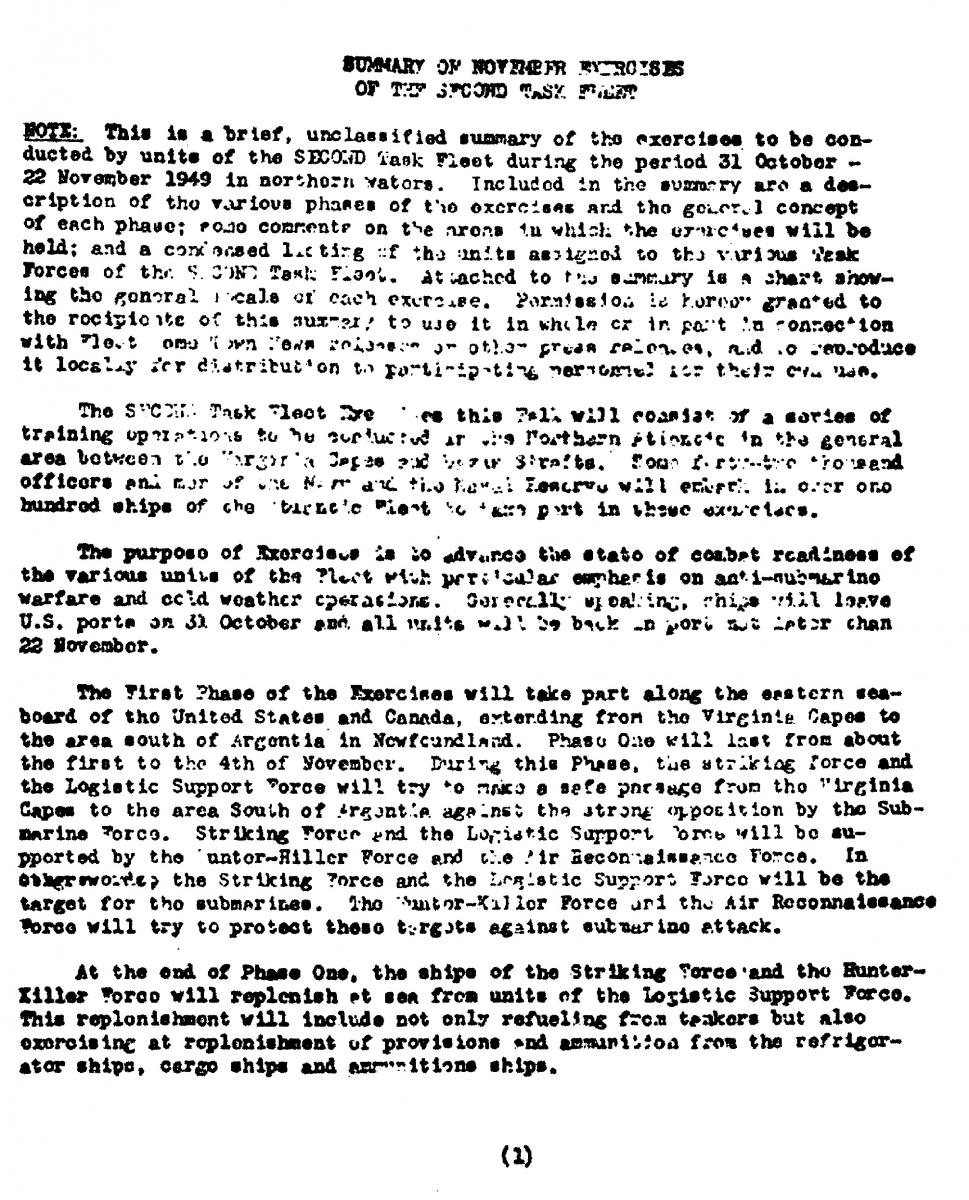
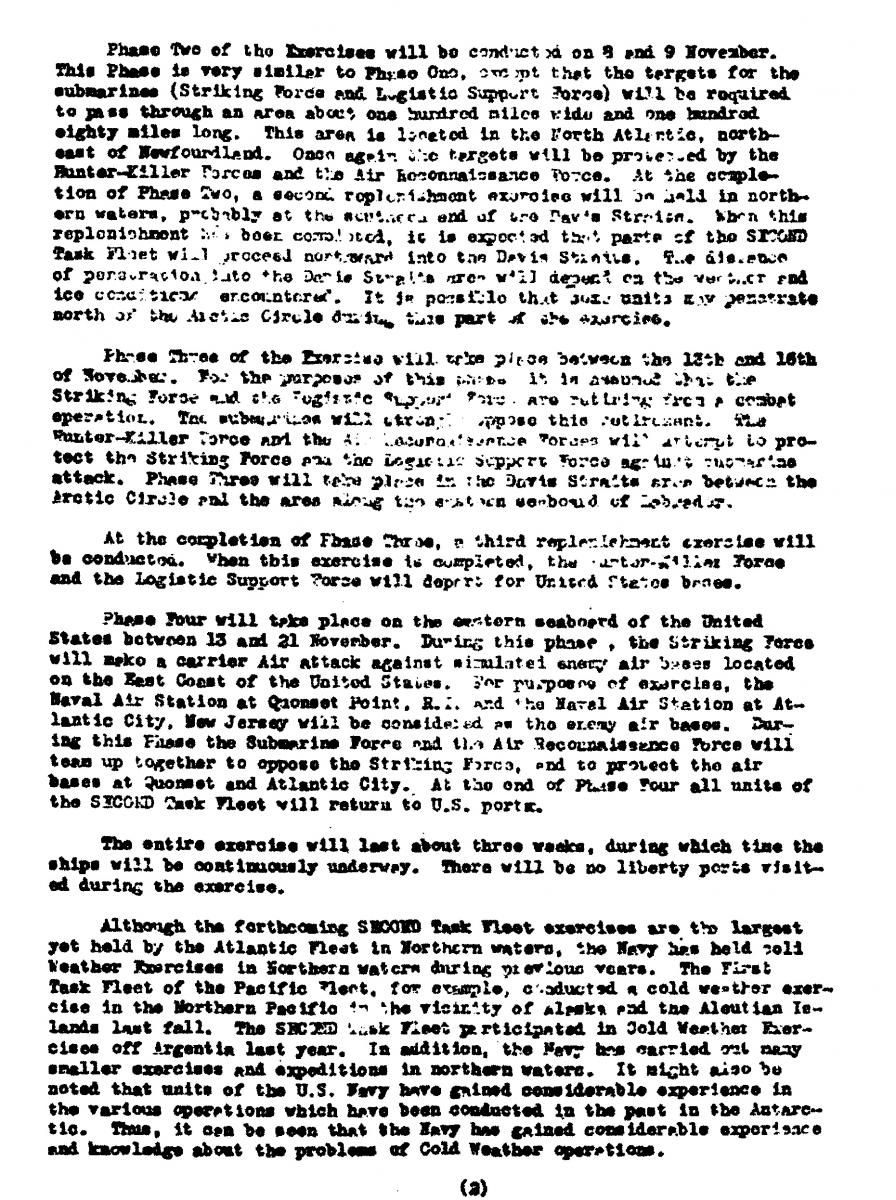
And there I was GETTING MY TONSILS REMOVED
Ensign David A. Doll, USN 496528/1310
Ensign David A. Doll, USNR 496528/1315
VF-41 AT N.A.S. JACKSONVILLE
VF-83 AT N.A.S. JACKSONVILLE
DECEMBER 1949
CHAPTER TWENTY FIVE
When I received my commission as Ensign in December of 1948, I was on probation for one year, as was any other newly commissioned Ensign. Word came down from BuPers that almost all those who made Ensign in 1948 were not going to be retained but transferred to the Reserves effective at the end of the year. Either the Congress or the Department of Defense caused this. Louis Johnson was then the Secretary of Defense so, rightly or wrongly, gets the blame. Our air group was scheduled for a six-month cruise to the Mediterranean starting the 6th of January. I thought it rather dumb to spend all that money training me and when I was ready for the cruise, send me home. I wrote to my congressman with a very favorable endorsement by my commanding officer, LCDR John Paul Adams, but to no avail. My father did the same, with the same results. This not only affected me but several others in our squadron who were already reservists and had been called back to active duty in 1947 or 48. LTjg Dandrea, LTjg Crawford, LTjg Joe Massey, LT Williams had earlier received orders to Naval Line School at Monterrey, California and ENS Spradlin was getting out on his own. This sort of decimates a squadron. I didn't know how they were going to fill the slots with experienced pilots and be squadron trained by the time of the Med cruise. I did hear that one of these “replacement” pilots was LTjg Al Shepard.
So, on 17 December 1949 I was separated from the service with an Honorable Discharge and immediately sworn in as an Ensign in the United States Naval Reserve.
It seems that as far back as I can remember I have had sinus problems and extremely sore throats whenever I caught a cold, which was frequent. I don't know how mom came up with the money but I would regularly see an Eyes Ear and Nose Doctor who would pack my nose for about ½ hour and when the packing was removed, all my sinuses would drain. Awful smelling and tasting stuff. I think this was somehow connected to my tonsil problem because the Doctors always said that my tonsils should come out. This operation was going to cost $50 and every time mom had this saved up and we were making the arrangements, something would come up that used that money. One was my one brother fell off a tricycle and broke his arm and another was my other brother was playing Tarzan in our front yard tree, missed a limb and broke his arm. I never got this done before I entered the Navy. Since my leaving the active Navy was definite and imminent, I had consulted with our Flight Surgeon and he agreed to do it as soon as we returned from the “Frostbite” cruise.
Thought I had flown my last flight with VF-41 when on the cruise but I was lucky and got to fly a 2 hour night hop with LT Williams and the next day, on the 29th, I was to be the chase pilot for Spadlin's instrument flight. Since he was getting out of the Navy, he didn't feel like doing instruments so we just goofed around. Aerobatics, tail chasing and flat hatting over the swamp. Skipper finally released us on the afternoon of the last day of the month. We all had the opportunity to take a three-week cruise with VF-83 aboard the USS Philippine Sea. This was a little strange since this is the squadron we would be assigned to until our discharge or release to the inactive reserves and yet we had a choice concerning the cruise. Dandrea and I flatly turned it down, as did Crawford for he had another deal cooking. He wanted me to come with him but I had made the arrangements for the tonsillectomy and didn't want to put that off any longer. Sure was tempting, however. It was to do some testing on the F8F. Didn't seem to matter that neither of us had any time in this type.
Shortly after I had “officially” become a member of VF-83, I went to sick bay for the operation. Over the years, I had talked to those who had had their tonsils removed and I was prepared to be put under and to be sick as a dog after coming out of the ether. Much to my surprise and anxiety, he put me in a dentist chair, shot me with Novocain And there I was GETTING MY TONSILS REMOVED. I really didn't feel much until he had to go back in on the one side a do some more digging. Said he thought he missed some. Interesting to see him plop those bloody masses there on the tray right before my eyes. I still don't think that is the proper way to remove tonsils. In going back in the second time, my uvula was irritated to the point that it filled up with fluid to such an extent that when I lay back in bed or tried to sleep in the normal position, I would strangle. Needless to say, I did all my sleeping and waking hours in the upright or sitting position. My stay in the hospital was due more to this condition than to any soreness, although that was there for about a week. Eating was out of the question. Liquids only and thankfully so.
Crawford came to see me several times to tell me how much fun I was missing and to keep me up to date on his testing of the Bearcat. After he had his checkout and the necessary fam hops, he was given several procedures to be tested. The most interesting one was to see how the F8F could climb on take-off. The one that opened Crawford's eyes was when he took off without flaps, remained in take-off power and tried to keep the airspeed the same as it was when he left the ground. In holding this airspeed constant he was able to do a double Immelman and never cross the end of the runway. That plane was all engine.
Doc checked my throat on the 19th and said it still hadn't fully healed but he ungrounded me anyway. Need to find someway to get my 4 hours of flight time in order to get that flight pay.
I don't know how Tom Crawford does it but he is always able to come up with deals or planes. Somehow or other, he got us an SNB-5 for use over the Christmas holidays. The only catch was that I had to get the gasoline. Funding had been greatly reduced for some time and most squadrons were out of fuel by this time of the month. Most times it is not what you know but who you know. I got the gas and the trip was on. Since Tom was from Akron and I from Massillon, we headed for Ohio. Left on the 23rd of December and arrived in Akron on the 24th. I got to spend the 25th with my future wife and then we flew to Columbus on the 26th. This was for my benefit since my folks had moved back to Portsmouth. I really didn't get to see much of them for by the time I made it the 100 miles, it was late evening and I fell asleep shortly thereafter. Had to get back to Columbus the next day for our return trip. We made it back to NAS JAX on the 27th, making the last leg at night. That Round Robin looked like this: 23rd NIP to Symrna (3.6 hours); Symrna to Godman (0.7); 24th Godman to Akron (1.9); 26th Akron to Columbus (0.8); 27th Columbus to Godman (1.5); Godman to Symrna (0.9); Symma to Atlanta (1.4); night flight from Atlanta to NIP (1.3). Total airtime 12.1 hours.
Reported to the Separation Activity Jacksonville, Florida on the 28th and was officially released from active duty on the 30th. Paul Petty and I started home in his Chevy that day. Wasn't much out of Paul's way to drop me off in Ohio on his way to his home in Indiana.
And there I was A RESERVIST
Ensign David A. Doll, USNR 496529/A3L
VF-692 AT NAS PORT COLUMBUS
FEBRUARY 1950 – FEBRUARY 1953
CHAPTER TWENTY SIX
As a civilian, I had to act real fast or starve to death. Moved to Columbus to be near my future wife. Got a job delivering furniture, applied for a flying billet at Port Columbus Municipal airport, got married on April 1 to my high school sweetheart and registered for Architectural School at Ohio State University. Finally got all my transcripts together from the three V-5 schools. OSU gave me credit for one year towards the 5 year Architectural School. Had a lot of credits left over.
A nice wedding present arrived from the Navy assigning me a billet with VF-692 at Port Columbus. And there I was A RESERVIST or A WEEKEND WARRIOR. The non-pay status changed to the pay status as soon as I passed the physical and officially became a member of the squadron. Flying with VF-692, I was back into the Hellcat. Didn't mind this at all. The only thing strange about flying as a "Weekend Warrior" was getting to fly only one weekend a month. The first 15 minutes to one half hour of that first flight always seemed mighty uncomfortable, until you got familiar with the instruments and got the feel of the plane again.
TWO WEEKS TRAINING DUTY
SEPTEMBER 1950
MIAMI, FLORIDA
NAS OPA LOCKA
The pilots in my squadron came from all over the state of Ohio, Indiana and Michigan. My living in Columbus and needing all the time I could get to study, I didn't spend any extra time at the facility nor with the pilots after our day was over. Hence, I never got to really know them until we had gone on our annual two weeks of training duty. The first one was to Miami Opa Locka. The CO at this time wasn't too great and hated to take responsibility for leading a flight. Prior to our leaving for Miami, we told his wing man that he had better have our trip all mapped out and fully planned for we were pretty sure he was going to be leading the flight of 16 F6Fs. Sure enough, we weren't out of sight of Columbus after our rendezvous when the skipper signaled that he was having radio problems and passed the lead. He very seldom would lead a flight of four during our normal syllabus flying, so he was predictable. My being the junior man in the squadron, another unlucky pilot and I got the privilege to fly our SNJ to Miami. As it turned out we had a ball. We would take off first and the flight would pass us before we got to our next destination. This trip took us to Nashville, NAS Atlanta, NAS Jacksonville and then to Opa Locka. Several interesting things happened on this cross-countthry. The first was at NAS Atlanta. I don't know whether they were serious are having fun at our expense.
When the squadron reported in and requested landing instructions, they were told to wait until the crash crews were in position. That sure does a lot for one’s ego. It seems that another squadron from Columbus earlier in the year had gotten lost due to the weather and when they finally arrived at NAS Atlanta, they were low on fuel and no longer in any kind of formation. I guess it was some fiasco. One ran out of fuel on the runway and when the crash crew went out to assist, another plane ran into the truck. Two others were landing in opposite directions and had to leave the runway in order to avoid a collision, which action wrecked both planes. I probably left out quite a few details, but there in the middle of the field were four F6Fs in a pile with the big capital "C" on the tail, clearly visible for all to see who visited NAS Atlanta. Thankfully, our landings and take-offs were without incidence.
Leaving NAS Jacksonville, we arrived in the Miami area with our SNJ the same time as the F6Fs. I had been to Opa Locka several times while on active duty so I was somewhat familiar with the "lay of the land". I had the field in sight but was holding to the west waiting for my squadron to land. They called the tower for landing instructions and proceeded over the field for our carrier break. I said, "oh, oh" when I heard them call the break because they were not over Opa Locka but Miami International. After their break, I heard Opa Locka tower operator, trying to keep from laughing when he informed "Navy Hellcat flight, you are not over Opa Locka but over Miami International. What are your intentions?" After a pregnant pause, "Uh, guess we will proceed to your field. Over." "Roger Navy, you are cleared to land, if you can find the field." How embarrassing.
We did a lot of bombing and gunnery over the Atlantic, which was good for keeping everyone sharp and current, but our skipper wanted to set some kind of record for time flown on a two week cruise. Sooooo, after our scheduled activity, we would circle until we had burned up all our fuel. Most hops ended up with as much as 3.0 hours entered in our logbooks. Boring!!!
After one such bombing or gunnery flight, eight of us decided to fly to Key West and back instead of just circling. This was a flat hatting trip. We were never much above the treetops and often below them across open areas. We were pretty smart for we flew line abreast so that the birds we raised were always behind everyone and not in their prop or windshield or wings, etc. I was flying wing on LT Bill Glass, who, during WW II, flew everything the Navy had in his assignment as a ferry pilot. He really could fly that Hellcat. Prior to our flying over a clear area of the Everglades, the leaders would signal their wingmen to step up so they wouldn't be scrapped off the ground when the leaders went down low. I didn't think I was doing anything out of the ordinary but when we got back to the base, LT Glass said that he thought he was about as low as he could get across several of the clear areas but he looked at me and I was below him. I had my eye peeled and knew what I was doing. Most of the birds didn’t materialize until we had to climb from the clear areas to pass over the trees. That was a fun 3.1-hour flight.
One day, the Coast Guard called on our squadron to assist them in a search for a missing light civilian plane coming in from Bermuda. The Coast Guard helped assign the search area for each of our planes, where each would start their search pattern, the distance to fly outbound, the cross leg distance and the leg inbound forming a triangle. Somewhere in our cross leg, the search was cancelled. The civilian plane had landed safety, he just didn't report in when crossing the ADIZ (Air Defense Identification Zone). However, we had to go out again, after we refueled, because one of our pilots was missing. Our search was without results and it was starting to get dark when out of the blue, here comes a lone F6F. We all knew he could not have been in the air for the length of time that he was missing, so LT Gottlieb had a lot of explaining to do. Seems that, once the real search was called off, he landed at a nearby field to visit a girl he had met while out on one of his evening jaunts. All of our butts were sore and the skipper didn't do anything to him. We sure weren't happy campers about that.
While the trip down was pretty much uneventful, the trip home was anything but. Aerology briefed us on the weather in route as we filed our flight plans. Good weather to NAS Jacksonville, except for some scattered thunder-storms about half way, which we should be able to navigate around with no trouble. LT Thompson and I took off first and, since I had flown in the area and out of NAS JAX in the past year, I flew the first leg and he navigated and handled the radio. We saw our F6F flight about 3000 feet above our 2000 feet, passing us as we neared the "scattered" thunderstorms, which had decided not to scatter but to join hands and make it tough on these Navy fliers. It was obvious that this was no little storm for it was very black with a lot of lightning. I can't say that it was a wise decision on the part of those in that flight or not, but we heard them discussing what they were going to do. One four-plane division was going to fly under the storm and stay VFR (Visual Flight Rules). Two other divisions were going to try to fly around it by going out to sea, another was going to try to climb over them (a waste of time as they soon found out and ended up in the soup).
We decided to drop down under the storm, which wasn’t too hard a decision to make since I was now somewhat familiar with our position. All I had to do was follow the St. Johns River right to our destination. We had to descend below 500 feet in order to stay under the storm and maintain VFR. It is a good thing we had the river to follow because the lightning sure ruined our radio reception and navigational aids and the heavy rain made it very difficult to see anything, even the river at times. We flew through heavy rain and light rain. It was during a stretch in the light rains that we passed a NAAF (Naval Air Auxiliary Field that normally was unattended by any Navy personnel) located right on the river and featuring two round landing mats with two F6Fs with a big "C" on their tails sitting on one of the mats. We knew we were getting close to NAS JAX when we saw all the mothballed destroyers at Green Cove Springs. Radio reception cleared up somewhat and we could hear our planes calling for the flight to switch to the tower frequency. We were into heavy rain again as we came upon the station and the field. We called the tower for landing instructions and the tower informed us that the field was closed due to the heavy rain and thunderstorms near and over the station. I could see our F6Fs taxiing to their parking places so I told the tower that those were my squadron’s planes which had just landed and I was going to land. "Negative, Navy SNJ, I repeat, the field is closed.". I told the tower that I didn't care and I was going to land and proceeded with my approach, fighting the gusty winds all the way. The tower answered me with, "OK SNJ, you land at you own peril and the field is not responsible for any mishap to your plane." "Roger" was my response and fought the erratic winds to a reasonable safe landing. I reported sighting two of our F6Fs at the NAAF as I was taxiing in and the tower “rogered” stating that that accounted for all our planes. The storm abated within a half-hour and our two "lost" planes arrived safely. They sure did the right thing when they realized that they were lost and could get no navigational signals due to the storm. They just chanced upon this field and put their planes on the ground until the weather cleared. Every one was shook up enough that we spent the night at the base. The remaining flight to NAS Columbus was uneventful. My total flight time for these two weeks, including cross-country, was 49.9 hours.
TWO WEEKS TRAINING DUTY
SEPTEMBER 1951
NAS CHINCOTEAGUE, VIRGINIA
The first night of our arrival, we all went into town for some partying since there wasn't anything on the base. The tide must have been out when we made the bus trip to town because I had never smelled anything as stinking as the air we were breathing. I couldn't figure out how anyone could live in such a place. To top off our evening, there was absolutely nothing in town to do. We returned to the base early and never ventured off the base during our two weeks there.
Maybe that was for the better as it forced us to focus on our two weeks of training. We concentrated on bombing, rockets, and gunnery as our secondary emphasis, the primary one being to re-qualify aboard a carrier. We were one of the few squadrons chosen for this assignment and considered ourselves very lucky. At this point in time, the regular Navy didn't give a lot of support to the reserves, not like they did later on. The reserves were flying obsolete planes and had no contact with anyone to keep us current with fleet tactics.
While we got in a few hops in gunnery, bombing and rockets, we concentrated on getting prepared for our time on a carrier. The Navy sent us an active duty LSO (Landing Signal Officer) on TDY (Temporary Duty) who waved us during our many FCLP hops. I finished my FLCPs on 21 Sept. and we went out to the USS Kula Gulf (CVE-108) on the 24th. If there ever was a perfect day for carrier work, this was it. A clear blue sky, a steady wind of the right velocity and a smooth sea. Everyone in the squadron re-qualified with the standard six landings and only one pilot had any trouble. The saying goes, "It isn't if you will get a barrier, it is when". LT Bill Glass (mentioned in last year's two weeks training duty narrative) had never been aboard a carrier since training command, did it all. All his passes were roger passes but he had one foul deck wave off and on his sixth landing, he made a perfect 3 wire landing but the tail hook skipped all the wires with the plane ending up standing on its nose in the barrier. Since the accident was not his fault, he got credit for a successful six and qualifying landing. I don't know whether or not any other of our pilots were nervous prior to their presence around the carrier, but Glass was noticeably so and readily admitted it. Our LSO debriefed us in the ready room prior to our return flight to Chinco, and made comments that surprised us all. He said that he was really upset upon getting his orders to try to get these civilian flyboys competent enough to get aboard a carrier without killing themselves or someone. After getting to know us, working us throughout our FCLP practices and bringing us aboard the carrier where most were roger passes, he would be proud to serve with us any time and be our LSO. That even felt better than the re-qualifying did. It was a very successful and satisfying two weeks.
IN LIEU OF TWO WEEKS TRAINING DUTY
AUGUST 1952
X-COUNTRY TO DENVER
I guess the Navy and the Reserve Command was feeling the money pinch, for our squadron was unable to get funding for a two-week cruise as we had in the past. However, five of us made ourselves available for a special five-day trip to Denver. This was suggested by one of our LTs who worked for General Motors in an executive position. He made arrangements with a distributor of Oldsmobiles in Denver for us to have a 98 Olds at our disposal, if we could get to his town. Sure sounded good to us, and since our squadron still had sufficient funds, we received orders for our x-country "training flight".
We took off on Tuesday, 5 August with our five planes. Each leg of our x-country was to be lead by a different pilot with the other four as back-ups or with a "I really don't trust our leader" syndrome. Five is an awkward formation so we used three in the leaders group and a loose two-plane section. When we received the approval for our x-country, we had to promise to have the planes back in Columbus sometime Friday so they would be available for the squadron’s training on that weekend, which was not our scheduled weekend to drill.
The first two legs went according to plan but the last leg into Denver was a little hair-raising. Once again, as were getting the weather in route briefing by the Aerologist, he said we might encounter scattered thunderstorms but would have no trouble circumnavigating them. Why do we listen to these people? It seems that they always get us in dangerous situations. By the time we reached these "scattered thunderstorms", they were no longer scattered but one black mass with heavy rain and lots of lightning. We tried skirting them to the South but it didn't take us long to figure that wasn't going to work so we dropped down under and tried dead reckoning to Denver. The radios and navigational aids are never any use in and under these storms. When our ETA (Estimated Time of Arrival) was past and we still hadn't sighted Denver but only open prairie, we started getting worried. Fuel wasn't a problem. The problem could be, where do we land? With hand signals, we spread out in a line abreast with as much space between planes as visibility would allow, looking for any recognizable landmark to define our position. I flew over a small town and read the name off a tall chimney by looking up and reading down. Not that we were flying very low, or anything. We loosely joined up and circled the town, trying to find it on our maps. I was looking in the near vicinity to Denver, since we should have been there, but to no avail. I don't know why, but I widened my map search and finally found the town about 60 miles south-southeast of Denver. We were lucky that Denver is such an important city in Colorado because "all roads lead to Rome". There it was, a road straight as an arrow, leading to Denver. We followed those railroad tracks right to our destination.
The next day we picked up the 98 Olds convertible and toured the city. I don't think we would have had any difficulty in picking up dates for each of us but it would have been a little crowded in that car with 10. We heard from a very reliable source that the best place to pick up women and have a good time was at this restaurant-bar up in the mountains near the reservoir for Denver's water. It seems this was the favorite hangout for the swinging crowd, so we decided to save ourselves for this night of action. We left Denver at such a time that we would arrive at the nightclub about dark. That Olds took those mountains like on level ground, once you put it in "S" drive. Course, you could watch the gas gauge go steadily towards empty, making us wonder if we were going to run out of gas before we got there. Someone gave us the wrong skinny. We ate and waited for all the women to arrive. They never did, so around 1030 we filled up the tank and headed home. Enjoyed our touring of Denver, the beautiful mountain drive and the spectacular sight of Denver as we rounded a curve and there she was below us, sparkling like a Christmas tree.
We filed our flight plan the next day and good ol' Aerology briefed us on a weak front between Denver and our destination of Lincoln, Nebraska, stating that we should have no trouble getting through it. They were wrong again. We learned our lesson well, for this time we laid out our route on the ground as well as navigational aids. By the time we reached the "weak" front, it had gained a lot of muscle. We fought the rain, the gusty wind that bounced us all over the sky, the lightning and finally landed at Lincoln. We went in to Operations to close out our flight plan and the Ops Officer said we could take off as soon as the front had passed the station. We told him that we weren't crazy and were going to stay in Lincoln until that front had cleared Columbus. We wanted nothing else to do with that baby. We notified Columbus of our RON (Remain Over Night) due to weather.
We got our rooms, cleaned up and went into town to the Cornhusker Hotel. We were having a few drinks at the bar waiting for our table for dinner. The waitress notified us that our table was ready so we all grabbed our drinks and headed that way. Well, you should have heard the commotion that that caused. Everyone in there hollered No! Stop! The waitress rushed up to us, stopping us in our tracks. It was against the law for anyone other than the help, to carry a drink in the establishment. What a strange law. Things finally quieted down and we enjoyed our dinner.
Friday, we checked on the location of the front, which had gotten bigger and stronger spawning several tornadoes and heavy hail over Kansas. It had picked up speed and the estimate was it should pass through Columbus by mid afternoon on Saturday. We sent another RON due to weather and planned to be in Columbus Saturday afternoon. We spent the day playing golf and seeing the sights of Lincoln.
Following our refueling stop in Kansas City, we proceeded to Columbus. Over Indianapolis, we heard the Columbus tower giving a general recall for all reserve planes to return to Columbus immediately because of a major storm approaching the station. After a few swear words, we said, "Here we go again". As soon as we could get through to the tower, we told them where we were and would be coming in under the storm. The storm and we got there at the same time, which made our landings nothing other than controlled crashes. Fortunately, being such outstanding pilots, none of the planes received any damage. I think the station thought we were just using the weather to stay longer on our x-country but changed their minds having seen the veracity of this baby. I have had my fill of flying in, under and through such weather but know it probably won't be the last.
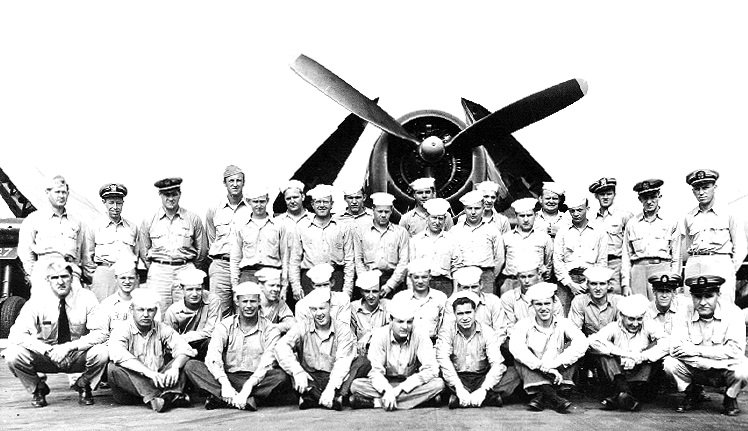
MY MOST UNFORGETABLE CHARACTER
LT DAN CARMICHAEL
When I first reported into the squadron, Dan grabbed me as his wingman since I was the most recent pilot arriving from the fleet. Besides being a Naval Aviator, Dan was an Architect and a principal in his father's firm. I thought how lucky l was since l had just started the architectural course at The Ohio State University. He checked with his dad after I asked him for a job. His dad said come back in couple of years but get a job with a contractor in the meantime and learn construction first hand. He even arranged for me to have a job with one of the large non-union contracting firms in Columbus.
Up to this time, Dan was the best pilot I had flown with. Because of his position with the architectural firm, he never could take two weeks training duty with the squadron and we sorely missed his leadership and flying skills during these concentrated training weeks. He never wanted any of the necessary administration duties so he continued refusing the positions of executive and commanding officer. However, they finally caught up with him and he had to take on these positions if he wanted to stay in the reserves. However, only as the executive officer while I was in the squadron.
Dan and I did a lot of flying just as a section and when we would return to the field, he always wanted us to look "sharp". He would call for a high-speed pass to a carrier break over our home base at the Port Columbus airport. I would tuck in as close as I could to Dan's starboard wing, going close to 300 knots (gaining this speed from a slight dive and engine wide open), approaching the end of and on the centerline of the landing runway, he would signal me the break, rapidly bank his Hellcat 90 degrees, chop his throttle, drop his wheels then his flaps, continuing his spiral approach to the end of the runway, roll his wings level and touch down. To those on the ground, it probably looked almost like a split "S" to a landing. Now, that is a tough act to follow, but follow I must. A normal break interval is approximately 4 seconds but knowing how he did his landing, I would take a 2-second break interval and follow closely behind, keeping our section looking really sharp. Most of the time, this worked ok. One time it didn't and I almost bought the farm. As I crossed the end of the runway and had cut my power preparing to flair to my landing, I hit Dan's slip stream (he must have had to add power momentarily for his landing) and it flipped me into an approximately 60 degree left wing down attitude. I immediately added full power, kicked in full right rudder and threw the stick as far right forward as I could. I looked at my left wing clipping the tall grass off the runway and thinking that I was inches away from dragging that wing on the ground and cartwheeling down the runway and probably ending up in a twisted ball of fire. It seemed like an eternity but the wing slowly came up and the plane righted itself, picked up some speed and started to climb. I calmly called the tower and requested a go around for another landing and my request was granted. At the time, I never panicked nor felt any anxiety. Not 'till I was in the line for lunch and I heard several sailors talking about the guy who almost crashed making a landing did it sink in to how close I had come to buying the farm. Accidents don't happen, they are caused. I was following too close to be safe. Didn't stop me from continuing to keep a close interval but from thereafter, I did keep power on until I was sure there wasn’t any slipstream to give me trouble in landing.
Dan never bragged or even talked about his past accomplishments all the time I knew and was close to him. The following are some of the things he did that I think made him the greatest in my eyes.
A top Hellcat ace in WW II with 12 planes shot down while flying with VF-2 aboard the Enterprise and the Hornet and with VBF-12 aboard the Randolph. (see Appendices in Osprey Aircraft of the Aces-10 titled "Hellcat Aces of World War 2” by Barrett Tillman)
Twice the Ohio Golf Amateur of the Year.
Test Pilot for the Columbus branch of North American Aircraft.
Race car driver.
Leading Architect in the State of Ohio designing hospitals throughout the state.
Skipper of an F8 Crusader squadron in the Philadelphia area.
A few stories to embellish some of the above statements.
His skill as a pilot – One weekend Sunday, flying out of NAS Port Columbus, he was leading the entire squadron on a tactical hop when near the Air Force Reserve field just outside of Mansfield, Ohio, he spotted four P-51 Mustangs. He turned the squadron over to me with instructions to circle 'till he got back. He didn't say what kind of circle so I had the squadron move out to a comfortable position so we could all watch the action and actually started a circle around the melee. Dan tore into that flight of P-51s starting a dogfight the sights of which I had never seen and never did again. He would be on the tail of one and the others would try to get on his and the next thing you knew, he did maneuvers with that old F6F without water injection, hence, without military or combat extra power, and be on the tail of another 51. Before it was all over, he had essentially shot down all four without any of them getting a decent shot at him. It was both unbelievable and exciting to watch. When the hop was over, Dan nonchalantly just walked away and never replayed the "fight" with anyone, as far I knew.
As a golfer – Dan was going after his third Ohio Amateur golf title with the final round on our drilling weekend. Someone in the squadron called the clubhouse where the tournament was being played and found that it had gone into sudden death with Dan and one other golfer. The course wasn’t too far from the field and thinking the noise of planes wouldn't bother him and should affect his opponent, we decided to help him out. The ploy was to simulate FCLP with one of the legs over the golf course. We put eight F6Fs in the air, maintaining our take off interval and staying dirty while proceeding to our target. We thought that we shouldn't push our luck so decided upon one pass. It wasn't difficult to find the duo. Just find the crowd. We all proceeded to fly over the green where they were getting ready to putt, plane slowed to 5 knots above stall, engine turning over at a high rate, wheels and flaps down and at an altitude of 150 feet. All activity ceased while we performed our little sojourn with most faces turned skyward. As it turned out, it didn't do any good. Dan lost that year.
As a racecar driver – I never saw Dan race but I could guess at his skill. After returning from my Korean recall duty, I started working in his architectural firm part time while attending college full time. (I was the first student they had ever hired and since then, have always had one or two) As was the custom in those days, the office had a big Christmas party with all the trimmings including lots of booze. Needless to say, everyone got loaded. Around 2 o'clock in the morning, Dan suggested that he and the five remaining diehards go out and get something to eat since all our food was long gone. We all got in his Caddy and proceeded through the streets of downtown Columbus. Dan came up upon another night person and placed his car about a foot behind this car and stayed there while this other person tried to dislodge us by snaking through the canyons of downtown Columbus. I don't know how he did it because he was as drunk as the rest of us. He finally tired of the exercise and let our victim "escape". From that, I knew he made one hell of a racecar driver.
RESERVE THIS'N THAT
At one time, the Navy sent an R4D to pick up all out of town reserves drilling on that weekend on Friday and return them on Sunday. That had to be a long flight to cover a three-state area. Unfortunately, these flights were cancelled for what reason I do not know. It speaks well of the dedication of these reservists who stayed with the program while finding their own way to the station for their drill weekend at their own expense. LTjg Frazell would bus from Indianapolis to the downtown Greyhound station and then catch several city buses to Port Columbus airport. Because of the Greyhound schedule, he wouldn't get home after Sunday drill until the wee hours of the morning. Since I lived in Columbus, he asked me if I would fly him to Indianapolis if he could arrange for a plane. I, of course, jumped at the opportunity. Somehow, someway, he got an SNJ at our disposal whenever we wanted it on Sunday afternoon. He would call his wife with our takeoff time and she would be there to meet us. As I approached Cook Municipal Airport I would request taxi instruction to the tower off loading area for a passenger drop-off and never having to shut down the engine. In 1952, that airport always seemed kind of dead with very little traffic. I don't imagine it is like that today. I sure enjoyed those flights, no matter how late I got home.
Familiarity breeds carelessness. Having gone through the training command in the F6F and having flown them quite a bit while in the reserves, I was very comfortable in that plane. On one flight while checking the mags at the end of the runway, I got a drop off on one of the mags that was beyond the manuals limit. I figured 25 RPMs wasn't that much and proceeded with my take off. About ¾ down the runway the engine started running extremely rough. I did get it off the ground and immediately called for a deferred emergency notifying the tower that the engine was missing on most cylinders. Tower wanted to know if I wanted to land downwind but I negated that suggestion and said I would proceed around and land into the wind if I could keep the plane in the air. I did make it around and promised myself that I would never take a plane off that didn’t meet the entire take off list criteria.
Except for myself, and maybe a few other reservists, most were veterans of flying during World War II. Most got out of the service as soon as they could once the armistice was signed. During my second year in the squadron, a new pilot reported aboard. For whatever reason, LT Minor decided to join the reserves. It became my task to check him out in the F6F and give him a fam hop of our operating area. After the necessary ground school and the flights in the SNJ, I checked him out in the F6F. He had flown this plane while on active duty so it didn’t take much from me to get him comfortable in this type. I briefed him on the flight and that I would take off first, circle the field and follow him on his take off roll. When I was in position I notified him to start his take off. I had slowed my plane down and followed along side on his take off. As he cleared the boundaries of the field and with his wheels up, I saw his prop stop rotating. Minor didn't have much time to say anything but proceeded straight ahead towards a farmer’s cornfield. I had notified the tower of the situation and they started the crash crew to the site. But fortunately, as luck would have it, Lt Minor had made a perfect landing, unstrapped and stepped out of the plane giving me a thumbs up indicating that he was all right. What a way to start your tour of duty in a squadron!
Unfortunately, accidents happen. When it is a mid-air in your squadron and one of your friends gets killed, it is devastating. We had our entire squadron up that day and were rendezvousing as one flight made up of several divisions. The accident happened in the last division to join up. A wingman was crossing under his section leader and tried to be a hot shot and not do it by the book. In crossing under, his prop sliced through the belly of his section leader and, I am guessing, severed his control cables. We weren’t at a very high altitude and it may not have made any difference for the pilot never exited the disabled plane. As is so often the case, the pilot that caused the accident didn't get hurt. He nursed his plane safely back to our field. I don't know why but I was selected to be the Officer-in-Charge of the Military Funeral. Maybe it was because we became good fiends after I had checked him out in the F6F and followed him when he had gone in on take-off that first flight or maybe because l was the junior officer in the squadron. It was a tough assignment. A wife and two lovely children. The Navy, and l imagine it is true with the Army, the Air Force and, for sure, the Marines, the burial details are perfect. After the three-gun salute, the playing of taps and the folding of the flag, it was my duty to present the flag to the widow. I hope I never have to do that again.
